- Home
- ~ Camino Portugués (The Portuguese Way)
- Tomar, Portugal
Jump to Camino Portugués Stages
Tomar, Portugal, the Convento de Cristo and the Aqueduct of Pegões
Just so you know, the PilgrimageTraveler.com is an associate of Booking.com, Roamless, and Amazon. As an associate of these merchants, we earn from qualifying purchases from our links.
Tomar, Portugal and its Convent of Christ, fortifications and aqueduct is a former Knighs Templar marvel that should not be missed. In fact, if you can spend an extra day here, on your Portuguese Camino, like we did, your "rest day" may not be all that restful, because there is so much to see!
"We shall not cease from explorationAnd the end of all our exploring
Will be to arrive where we started
And know the place for the first time.
~ T.S. Eliot's Four Quartets
We stayed at the Hostal 2300 Tomar, which was centrally located in Tomar and quite convenient to the sights.
Just to the east of our accommodation and running through the center of Tomar is the River Nabão. This is a lovely place to stroll along, where shops and restaurants abound.
🙋♀️ Why Trust Us at the Pilgrimage Traveler?
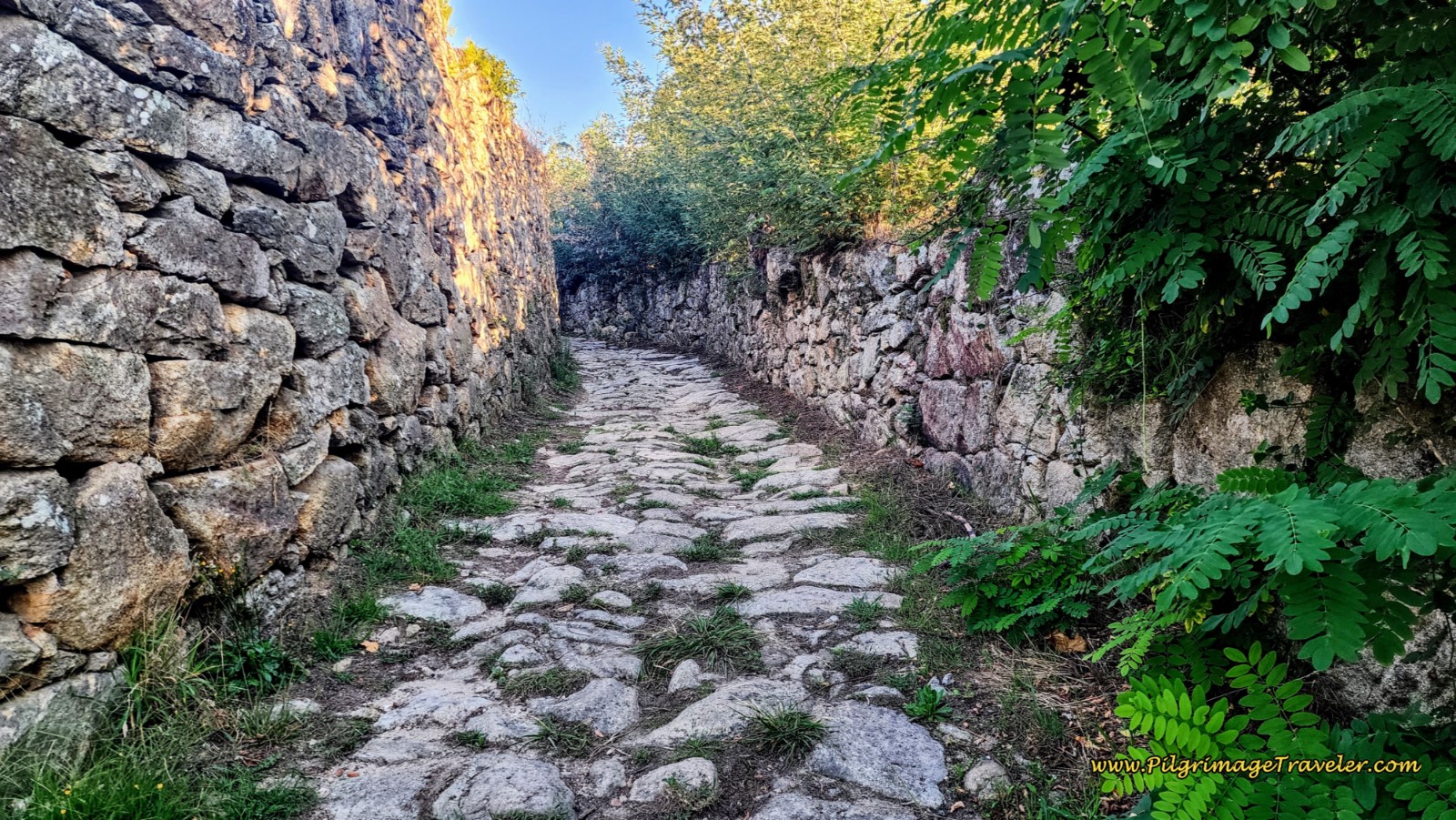
We’re not a travel agency ~ we’re pilgrims, just like you.
We've walked Pilgrimage Routes Across Europe!
💬 We’ve:
- Gotten lost so you don’t have to. 😉
- Followed yellow arrows in the glowing sunlight, the pouring rain and by moonlight. ☀️🌧️🌙
- Slept in albergues, hostals & casa rurals. Ate and drank in cafés along the way. 🛌 😴
- Created detailed and downloadable GPS maps and eBook Guides, full of must-have information based on real pilgrimage travels. 🧭 🗺️
- Shared our complete journeys, step by step to help YOU plan your own ultimate pilgrimage and walk with your own Heart and Soul. 💙✨
Every detail is from our own experiences ~ no fluff, no AI rewrite. Just fellow pilgrims sharing the way. We add a touch of spirituality, a big dose of ❤️ and lots of wisdom from the road.
Ultreia and Safe Pilgrimage Travels, Caminante! 💫 💚 🤍
Here is the bridge on the Rua Marquês Pombal in the center of Tomar. It is on the route where the Camino Portugués continues onward and through town. You can see the Knights Templar castle up on the hill in the background.
Indeed the castle dominates the view from almost all spots in town! Here is our view as we walked westward on the Rua Serpa Pinto, from our hostal.
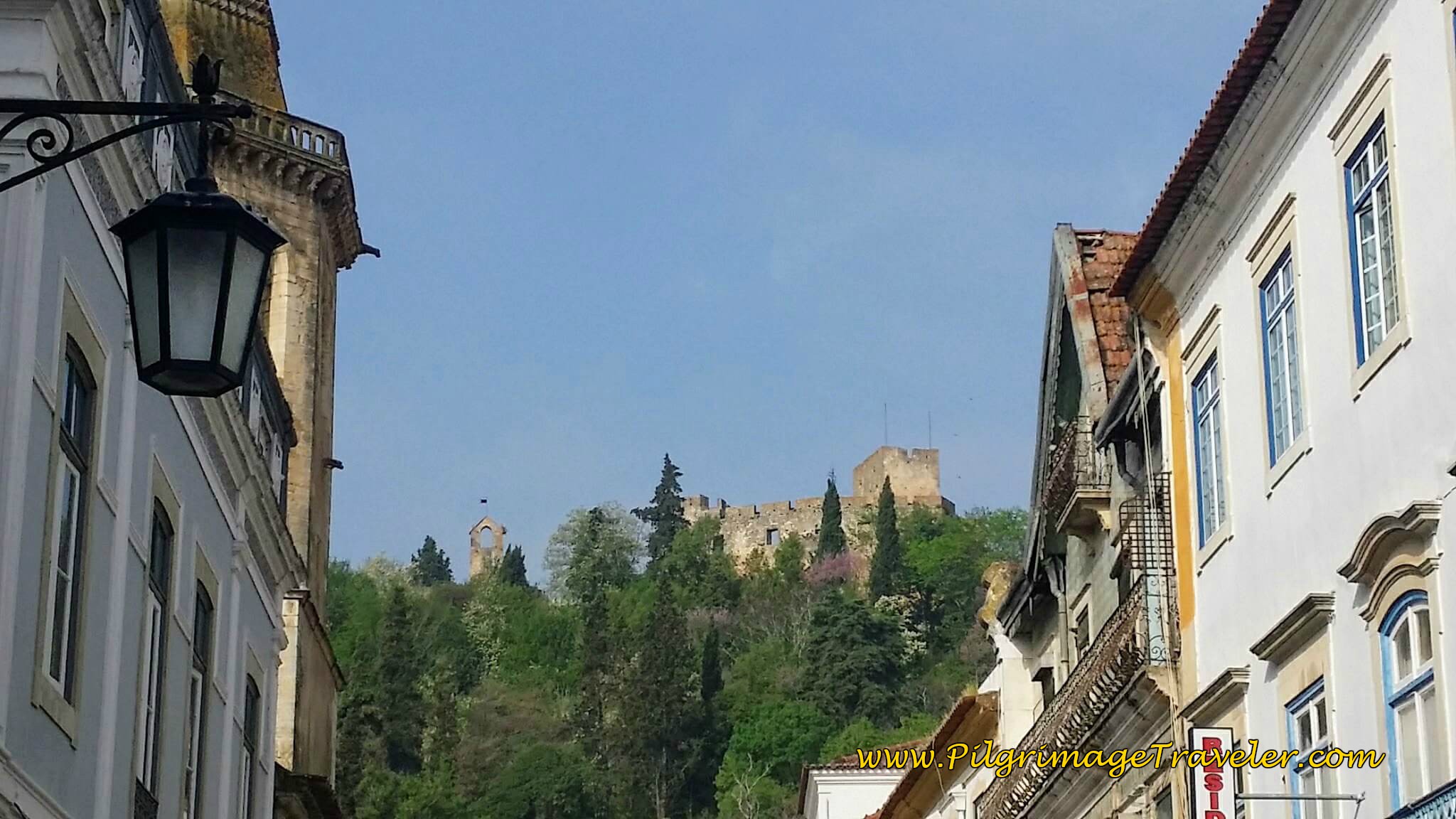 Knights Templar Fortress Walls Loom Above Town
Knights Templar Fortress Walls Loom Above TownAs we continued our walk, we came to the central plaza, where all the action is, the Praça da Rèpública or Republic Plaza. The beautiful azulejo tile on the wall identifies where you are, if you haven't figured it out already!
 Welcome Azulejo Tile Sign to the Republic Plaza in Tomar, Portugal
Welcome Azulejo Tile Sign to the Republic Plaza in Tomar, PortugalDominating this plaza is the statue of the city founder, Dom Gualdim de Pais. The city hall or Câmara Municipal de Tomar forms the backdrop, with vestiges of the fortress walls on top of the hill, that can be seen in the background. It is a beautiful square, surrounded by cafés and restaurants. For more photos of the square, see day five, but our goal this day was reaching the Convento on the hill.
We crossed the plaza towards the City Hall. The way to the Convento de Cristo leaves from the side street to the left of the Câmara Municipal de Tomar (City Hall). This is also the beginning of the Caminho Nascente to Fátima.
Pictured below you can see the small side street, the Calçada de São Tiago and the blue arrow on the electric box, on the left side of the photo.
 Start of the Camino Nascente, Left of City Hall on the Calçada de São Tiago
Start of the Camino Nascente, Left of City Hall on the Calçada de São TiagoThis small side road, the Calçada de São Tiago, turns into a path and begins to climb steeply as it winds around some public restrooms, then walks you up a set of stairs to the Avenida Dr. Veira Guimarães, shown below. You cross this avenue to the cobblestone path.
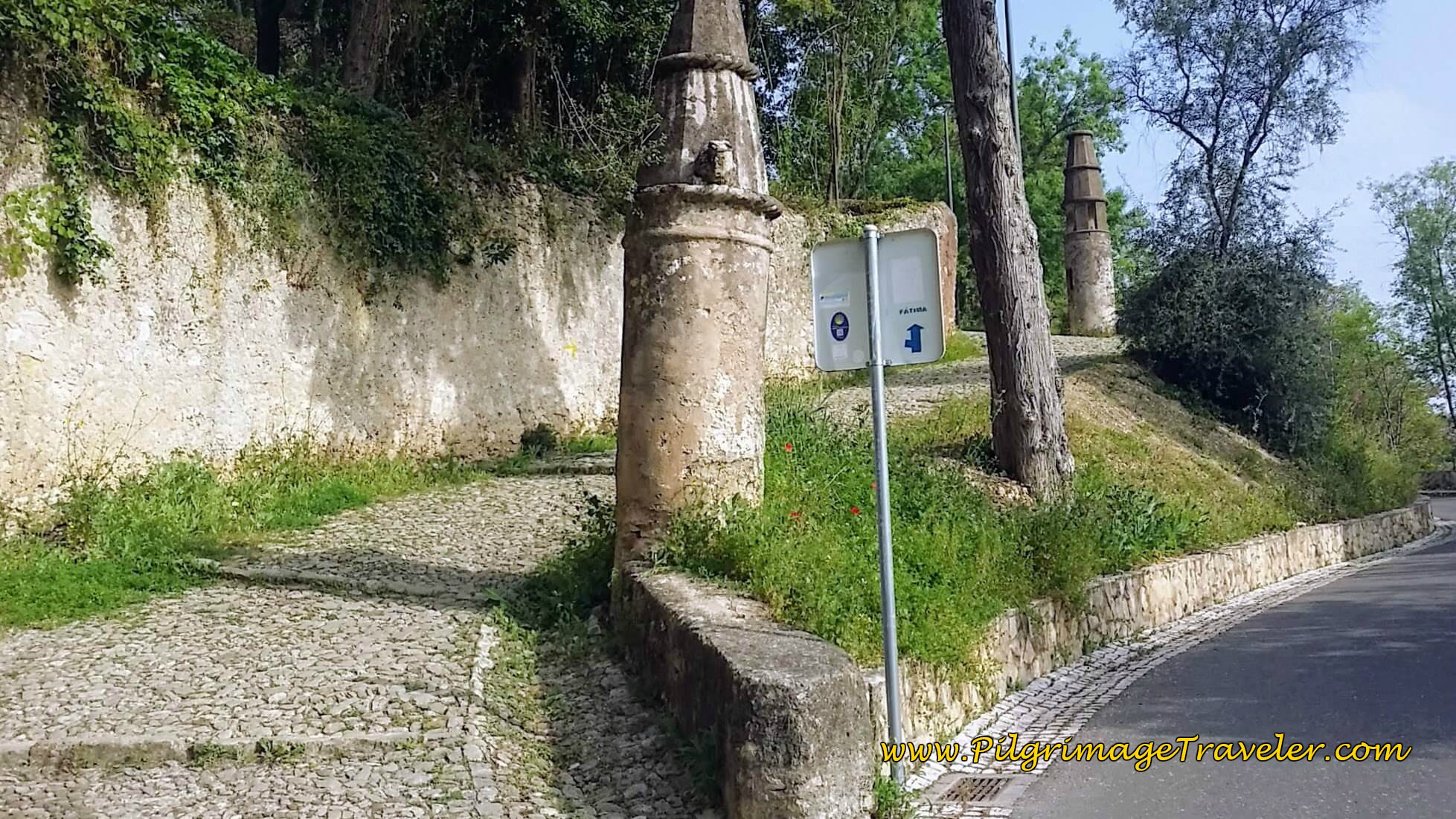 Straight Ahead for Walking Path to the Fortress
Straight Ahead for Walking Path to the FortressThe Camino Nascente continues to the right along the Avenida Dr. Veira Guimarães as the photo shows, but we continued straight ahead and along the cobblestone path shown below, onward and upward to the Knights Templar castle.
The cobblestone path switchbacks, and around the turn the fortress walls come into view for the first time.
The history of this place is quite interesting. I was fortunate to watch a History Channel program called "The Templar Code" just prior to my visit here.
According to the program, the Knights Templar were originally organized by nine knights from a battle in Jerusalem in 1029. This small band became crusaders that solicited wealth from European aristocrats to finance more crusades. They were essentially a secret society with initiations and were sworn to obedience and poverty.
As the Templars grew in size and organization, they became more and more wealthy. They even established an early banking system along the crusade routes, by issuing promissory notes, purchased by crusaders and pilgrims at their point of origin, to be used along the way.
Eventually, in the 14th century, the King of France, King Philippe the Belle, grew to fear the power of the Templars. On Friday the 13th, October 1307 King Philippe the Belle, rounded up all the French templar leaders and their grandmaster and imprisoned them. He held them until 1312, then tortured them and slowly burnt the grandmaster to death.
King Philippe actually only captured about 10% of the Templar knights - the rest vanished and despite the torture, no wealth was ever found.
History is sketchy regarding the fate of the remaining 90% of the knights. Some apparently fled to Switzerland, others joined Robert the Bruce in Scotland, to fight against the King of England, with the St. Claires of the Rosslyn Castle and Rosslyn Chapel fame, and others just disappeared.
In Portugal, fortunately, the Knights Templar saw the writing on the wall, and they remained safely in Portugal after renaming themselves the Knights of Christ or the Knights of the Order of Christ. Thus, their order was to remain in perpetuity.
The fortress walls of the Castle are very well-preserved, indeed.
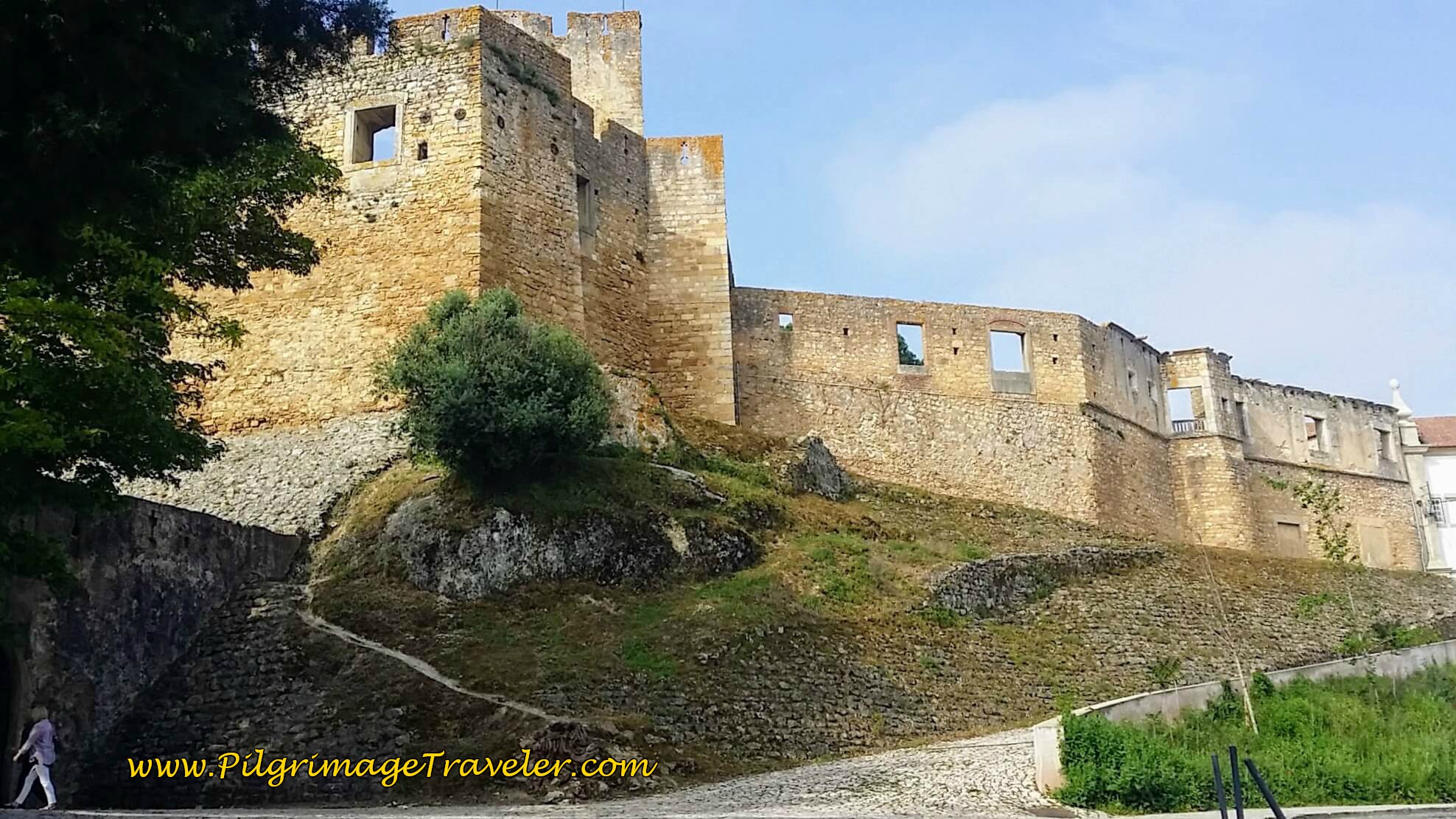 Main Fortress Wall of the Templar Castle
Main Fortress Wall of the Templar CastleEntering through the main gate, below.
The embrasures, or keyholes for shooting arrows were fun to see. Here is a close-up.
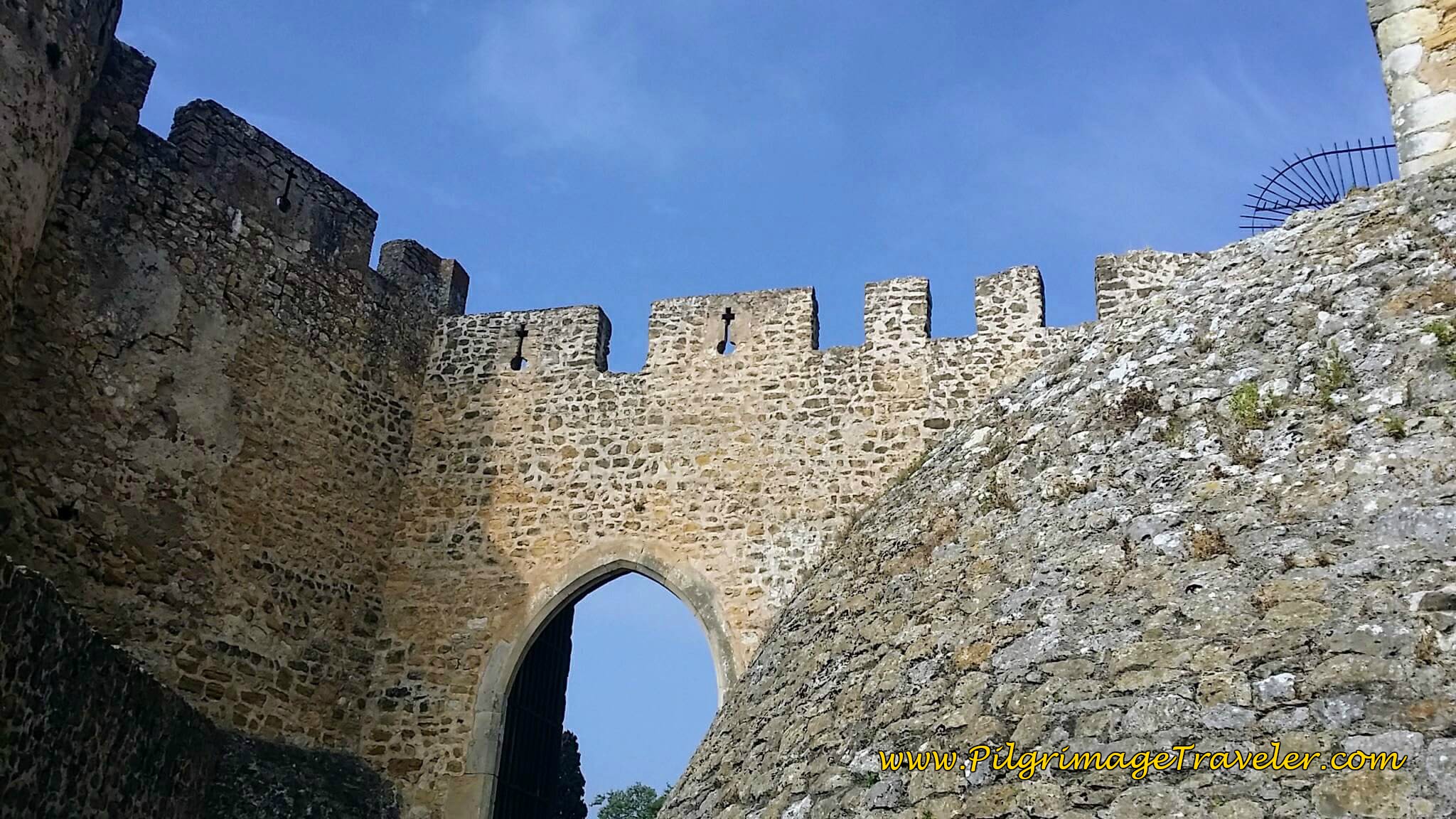 Cross-Shaped Keyhole Embrasure
Cross-Shaped Keyhole EmbrasureMore views of the ramparts to the south...
Jump to Camino Portugués Stages
Inside the fortress walls, the crowning glory of the site comes into focus, the Convent of Christ or Convento de Cristo. This is a UNESCO World Heritage Site. For the official link to this place, Click Here.
It is a glorious place.
As you walk up the steps toward the Convent, the main entrance door is a glorious manueline embellishment!
The first stop, after entering, are the main cloisters, Cemetery Cloister (Claustro de Cemitério) where funeral processions and burials of the knights were performed and the Laundry Cloister (Claustro da Lavagem), where laundry was washed in a stone cistern.
These cloisters are a virtual labyrinth of walkways, all with a view of the main bell tower atop the main chapel.
 Bell Tower and Chapel from Inside Main Cloister
Bell Tower and Chapel from Inside Main Cloister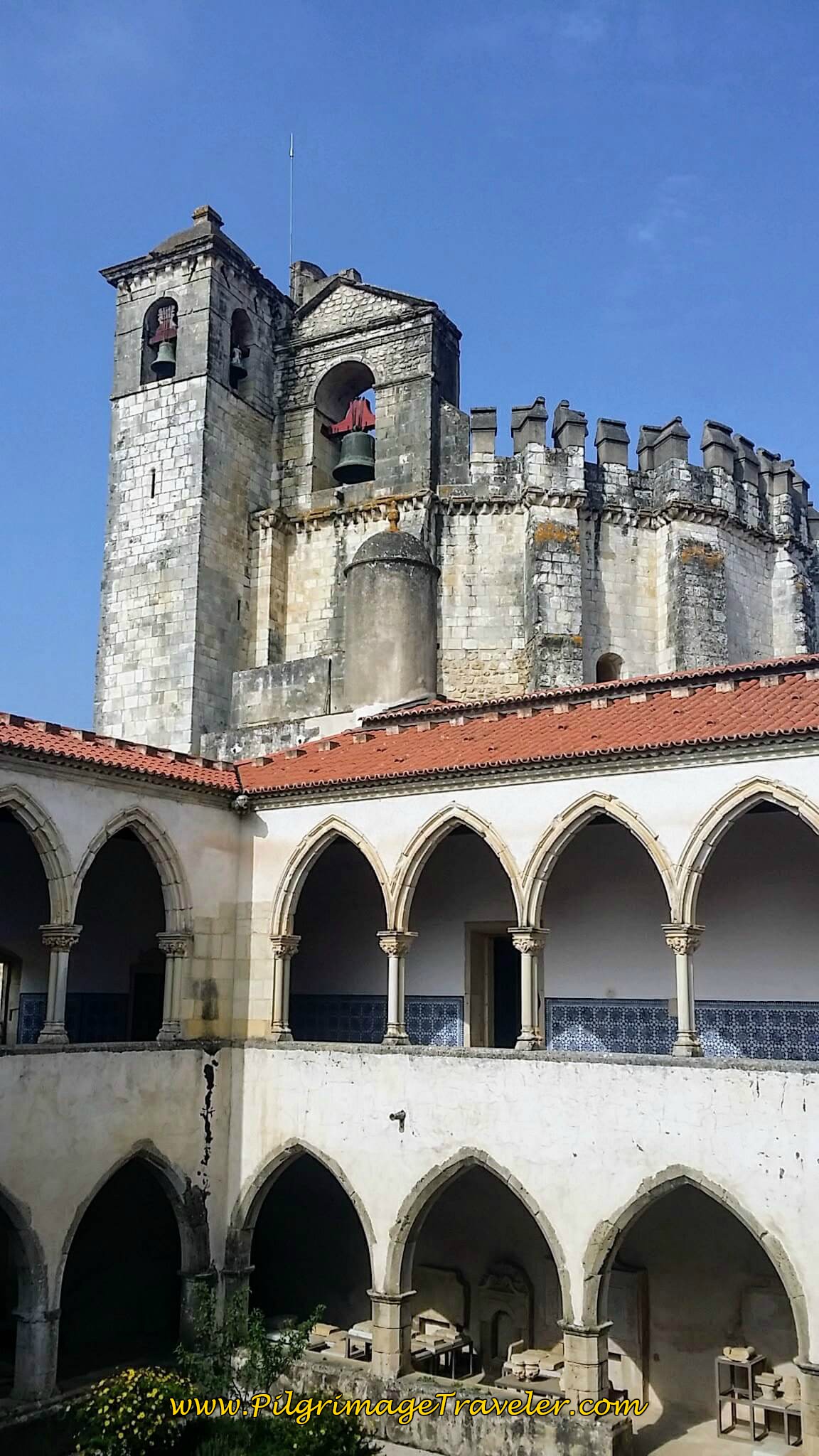 Two Levels of Main Cloister
Two Levels of Main CloisterI couldn't resist shooting photo after photo...
 Lower Level Cloister
Lower Level Cloister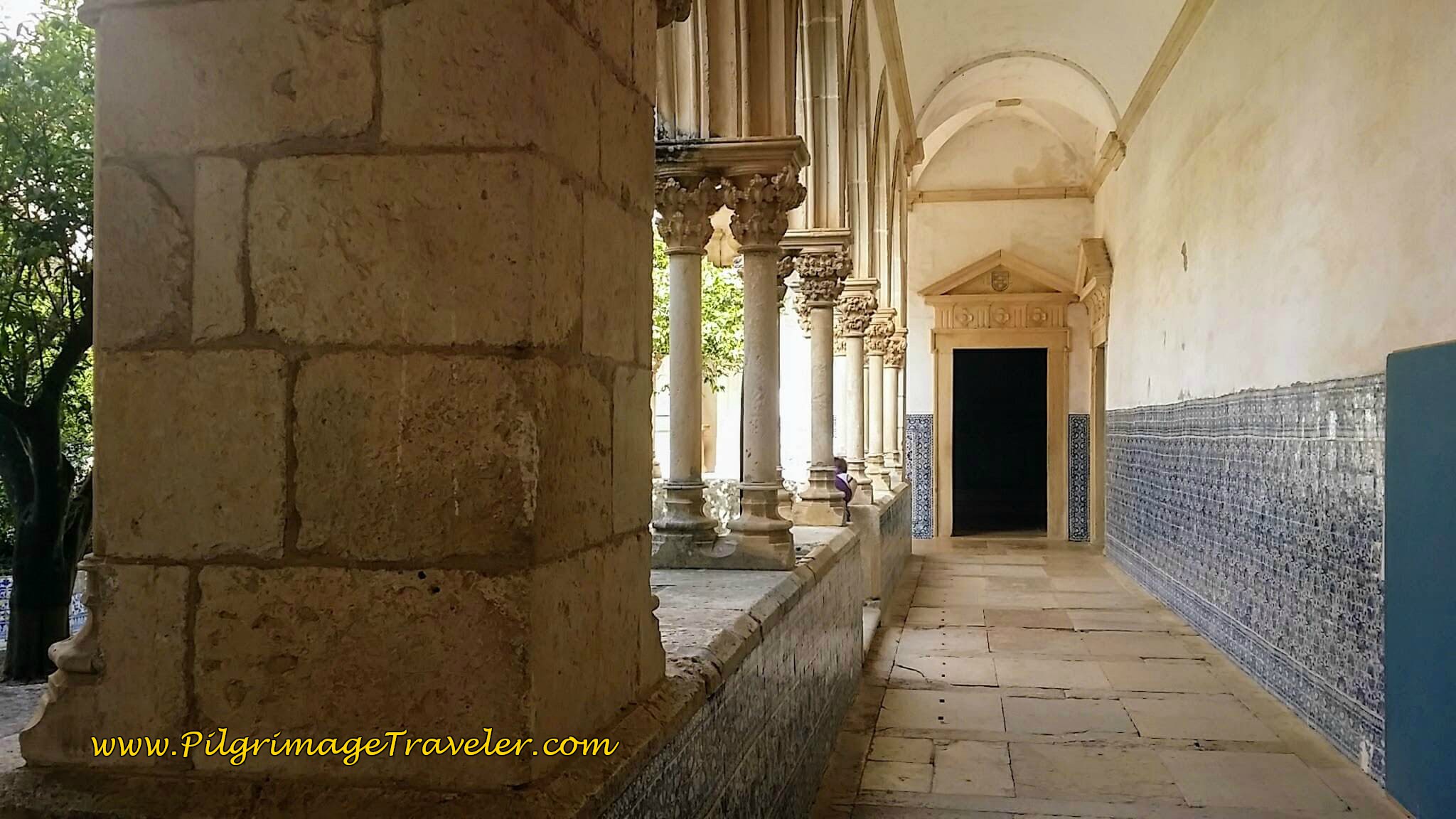 Lower Level Cloister, Different View
Lower Level Cloister, Different View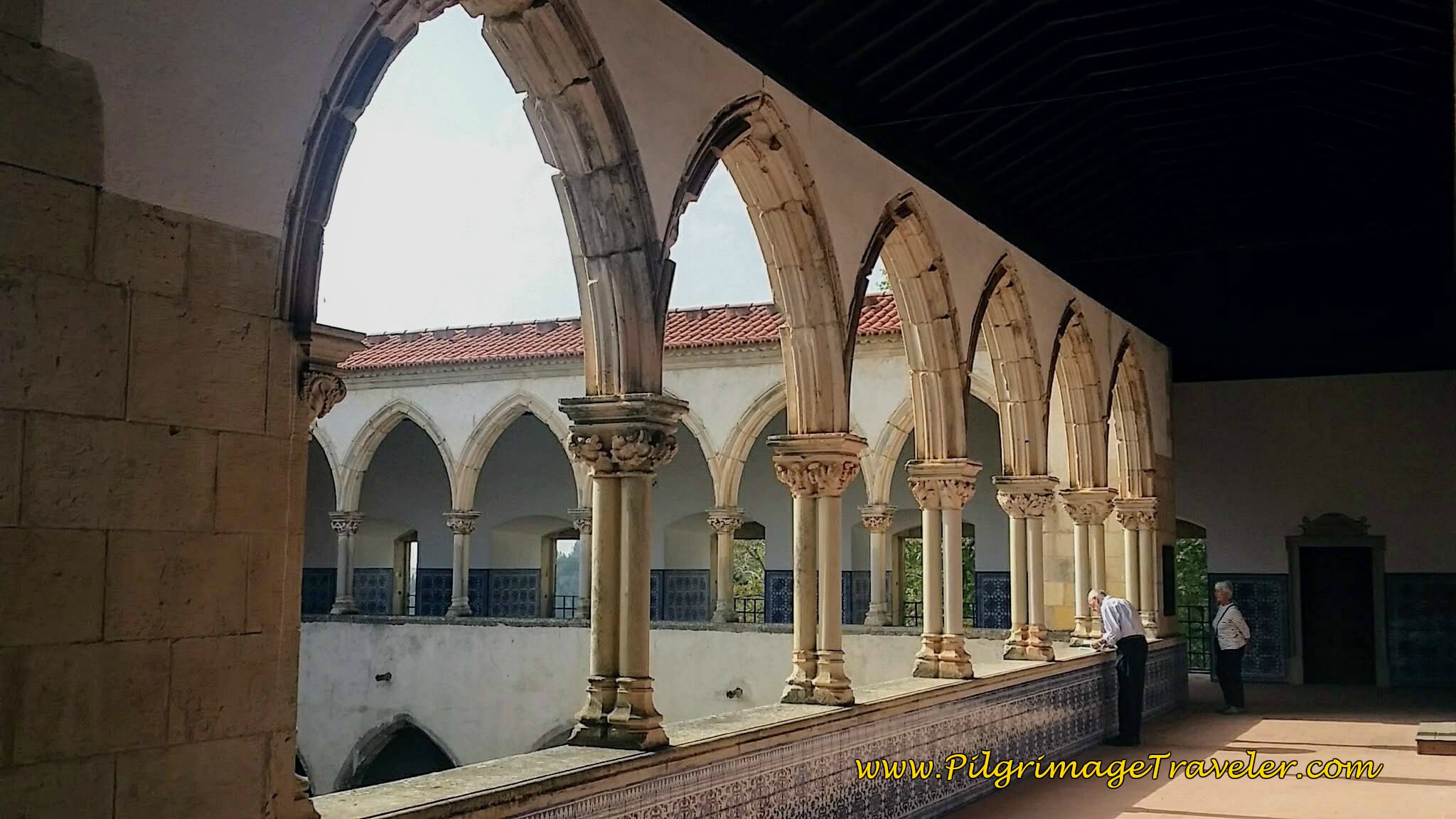 Upper Level Cloister
Upper Level Cloister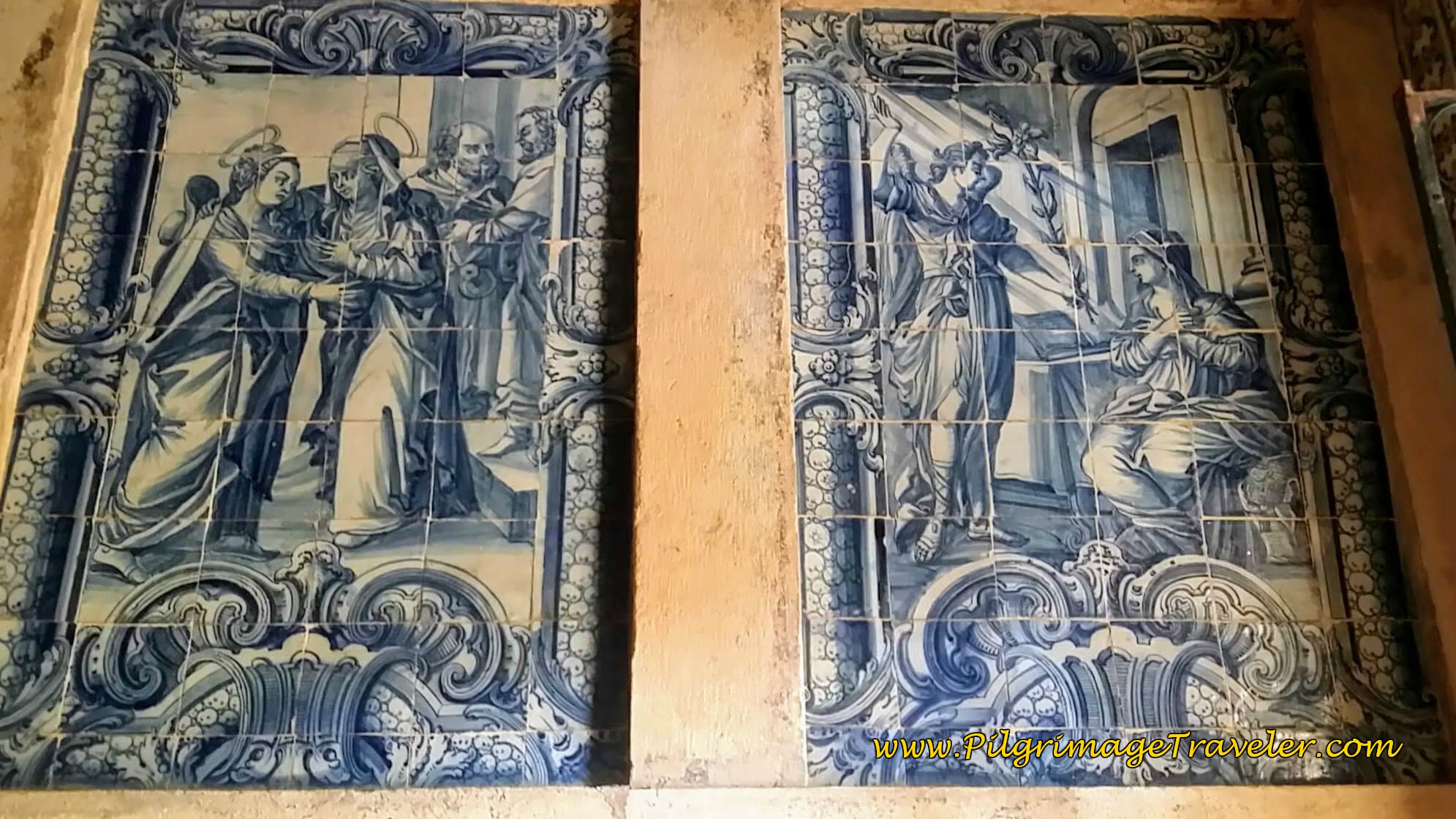 Azulejo Tile Murals inside Cloister
Azulejo Tile Murals inside CloisterAfter visiting the main cloisters, we moved onward to the main chapel area. It has its own entrance and this is the archway that opens to the chapel rotunda.
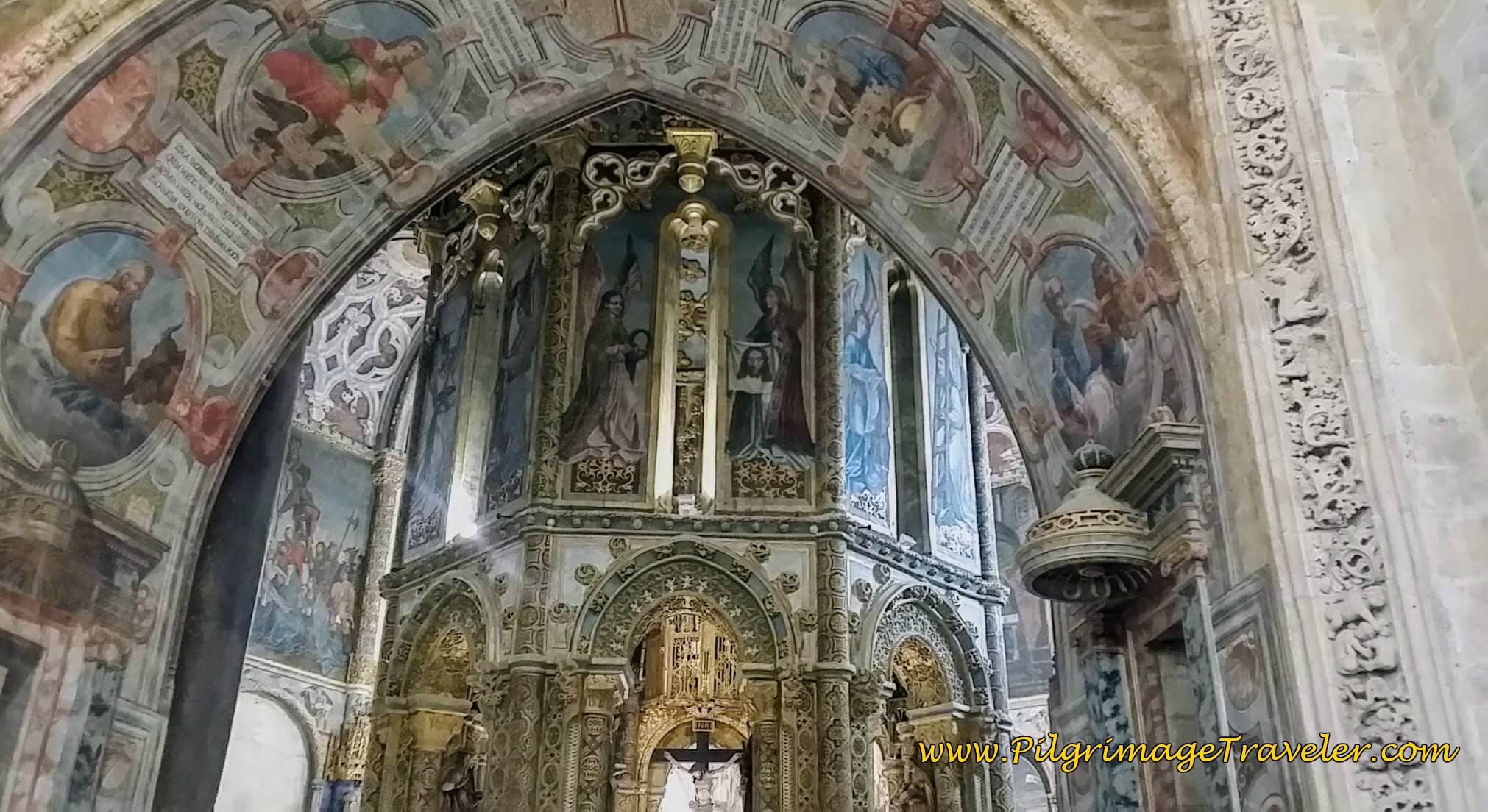 Entering Main Chapel Rotunda
Entering Main Chapel RotundaThe decoration is elaborate, and I just could not quite capture it all adequately. The sun was streaming in the windows, as it most likely looks at any time of the day, showcasing the center point of Christ on the Cross.
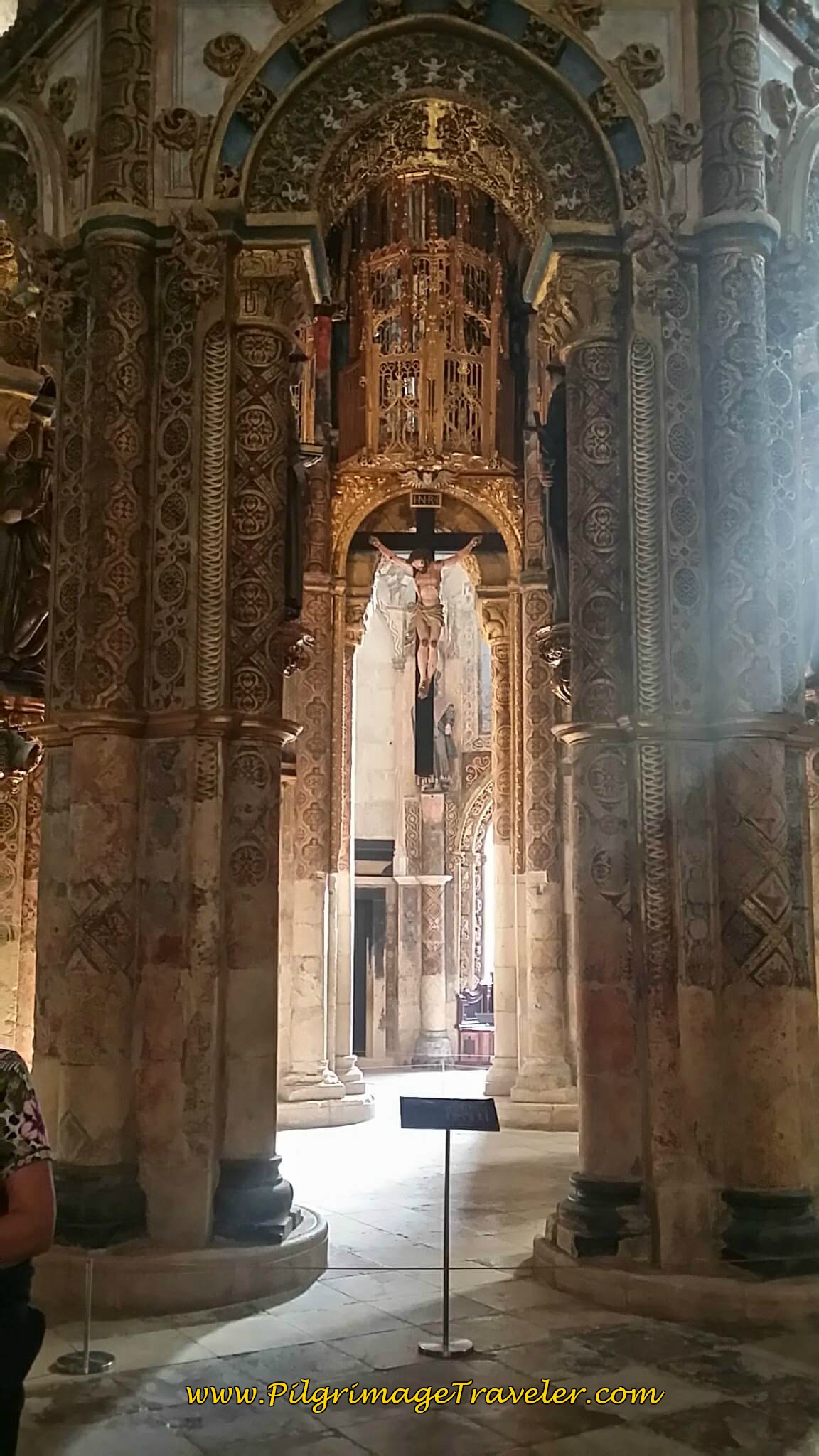 Focal Point Inside Main Chapel
Focal Point Inside Main Chapel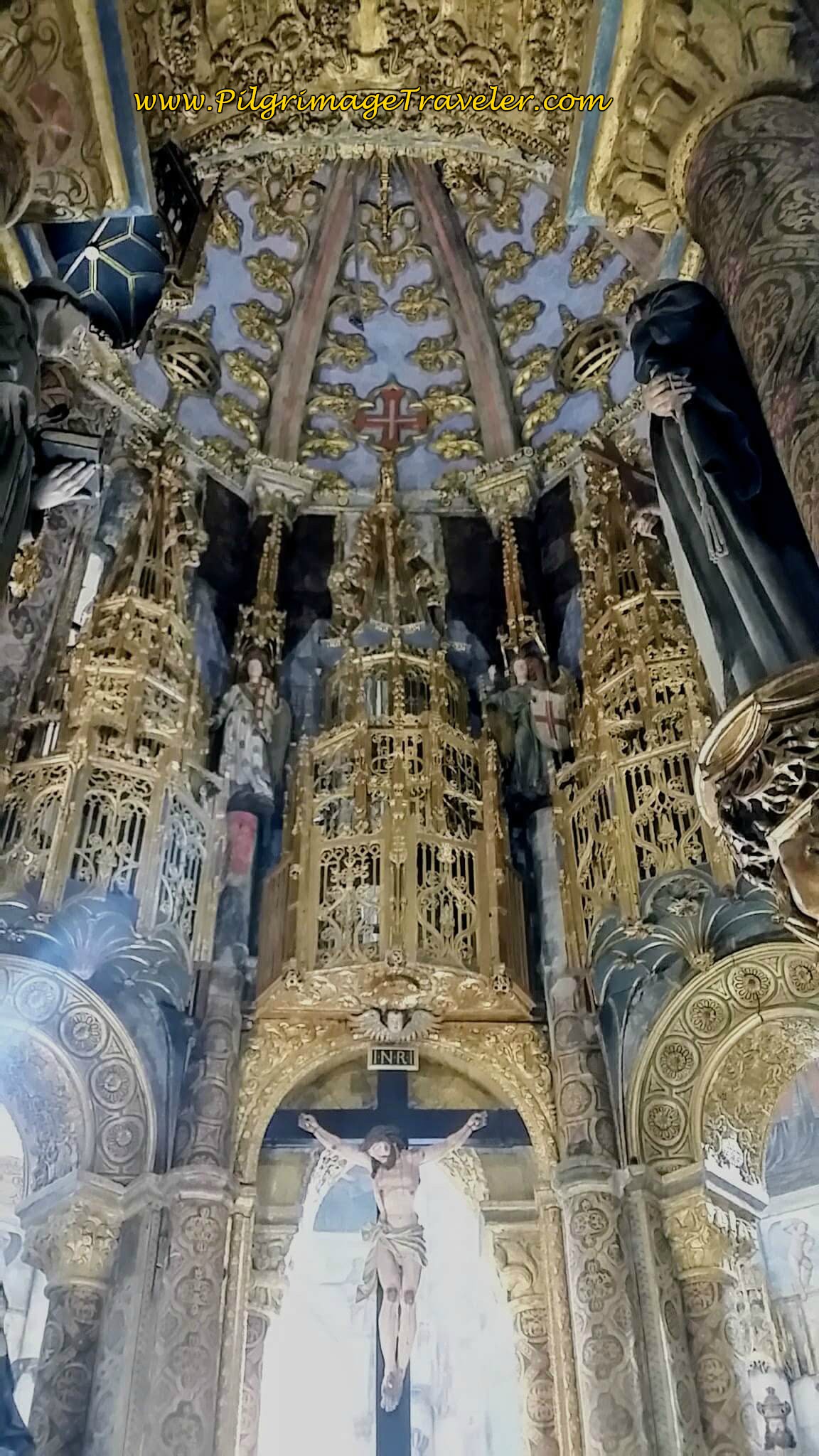 Rotunda Ceiling Embellishments
Rotunda Ceiling EmbellishmentsThere is yet another, more ruined set of cloisters on the western side of the convent, in fact there are seven cloisters in all! The one pictured below, is the cloister of Dom João III. The circular spiral staircase in each corner was extremely interesting to climb up and down.
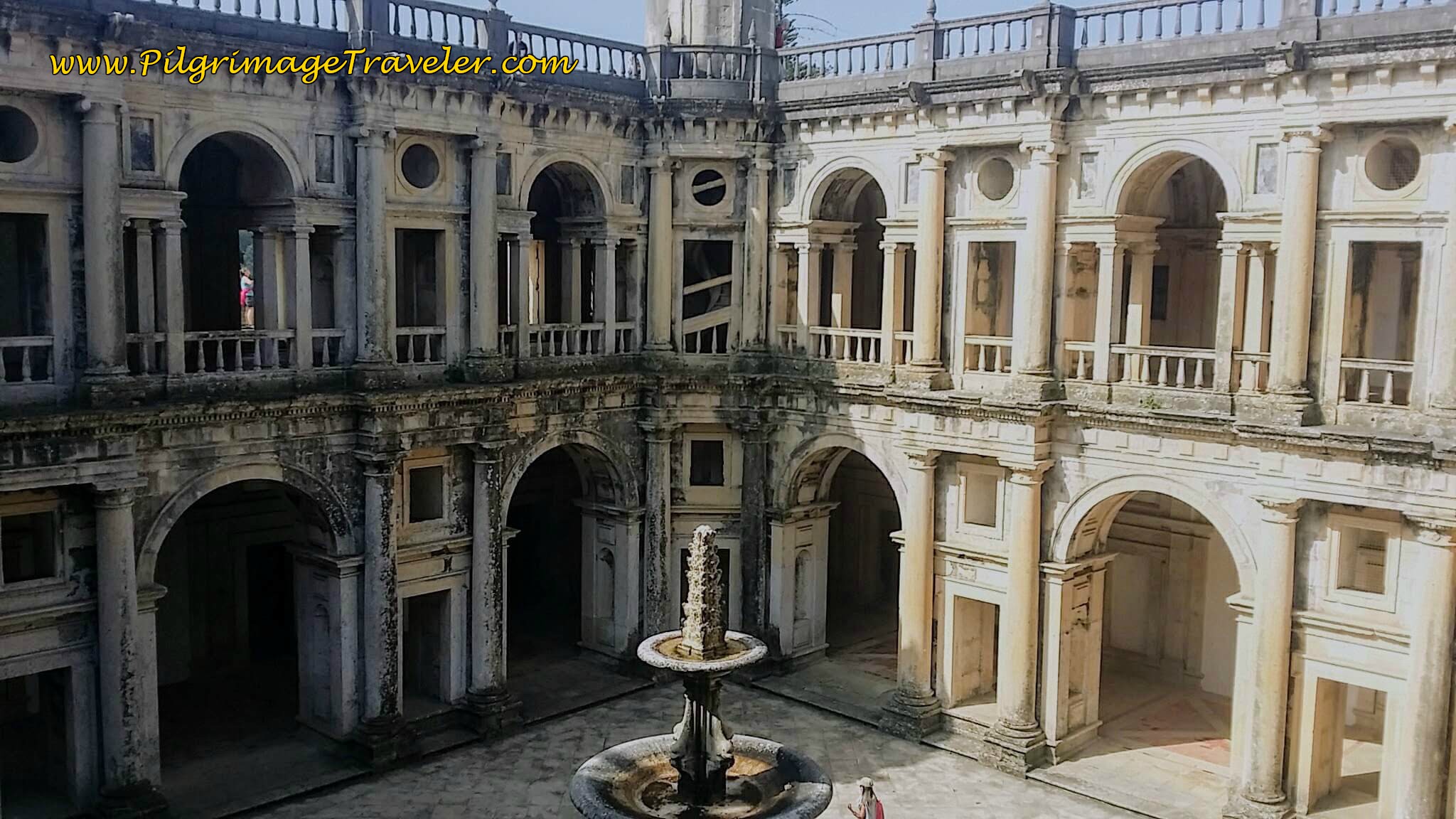 Claustro de Dom João III, Convento de Cristo, Tomar, Portugal
Claustro de Dom João III, Convento de Cristo, Tomar, PortugalAt the top of the Claustro de Dom João III, is a rooftop promenade, and here I am standing in front of the nave of the chapel, with the main entrance door to the right. You can see the top of the spiral staircase on the corner of the balcony.
On the roof of the main chapel, these stone embellishments were amazing.
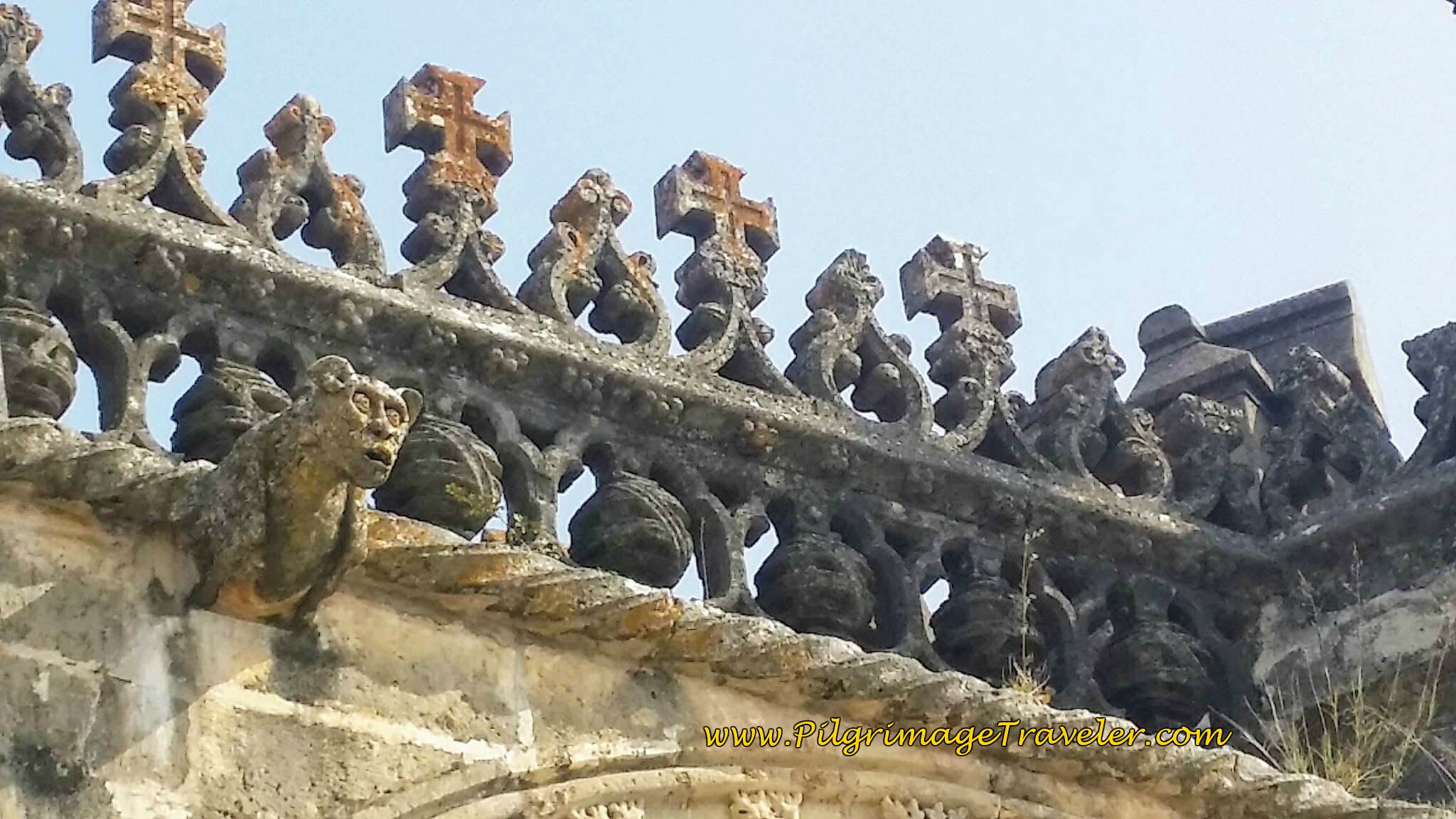 Close-up Manueline Embellishments on the Rooftop
Close-up Manueline Embellishments on the RooftopHere is another photo of the architectural features of the main chapel, and the famous Manueline Window on the western facade.
 Manueline Architectural Design
Manueline Architectural Design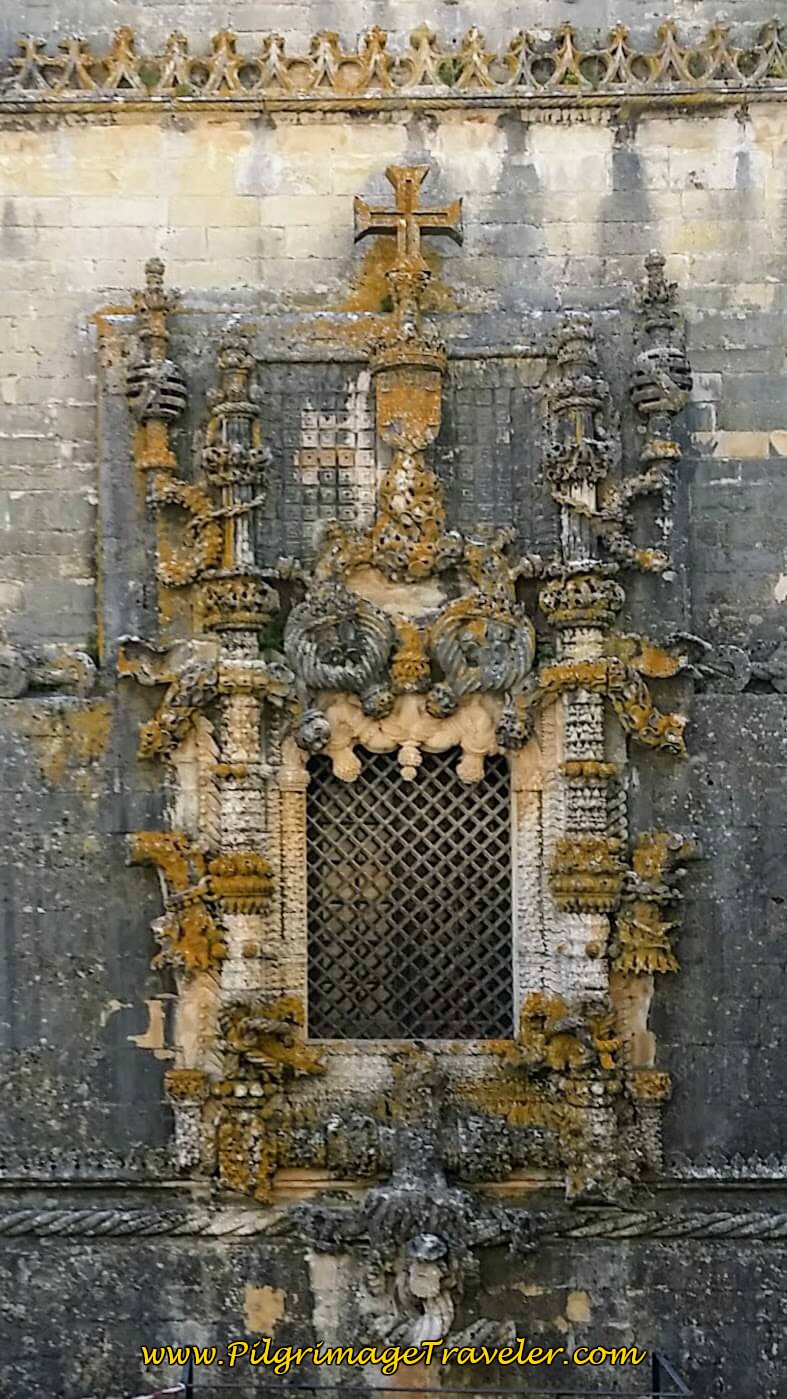 The Famous Manueline Window on the Western Facade of the Chapel
The Famous Manueline Window on the Western Facade of the ChapelWhile we explored many more nooks and crannies of this Convent, including the dormitories and courtyards, I have reserved this space only for the most dramatic of the places within. I was amazed by how the site allows for free roaming. There were truly no restricted areas I could see and indeed, this added to the charm of the place.
I believe that one could spend an entire day here, but we took a full 4 hours and were quite exhausted by that point. There is a café in one of the courtyards for refreshments, to break up your visit.
The gardens surrounding the Convent are extensive, which we did not explore much. They are a bit unkempt, but still lovely. One can also walk along the rampart walls, if you have an interest in circumnavigating the site!
Jump to Camino Portugués Stages
On the Camino Nascente (Tomar to Fátima) to the Aqueduto dos Pegões
We pondered briefly, whether or not to take a full day to walk the 30 km from Tomar to Fátima on the Camino Nascente. We decided not to do it, and save our energy for the Camino de Santiago. In retrospect, I wish we had done it, but at that time, we were worried we would run out of time, so this Camino was shaved off the itinerary.
We did want to see the Aqueduct of Pegões, just outside of the city, and below is a map of the route we took. It is a 2 km walk to the aqueduct, and one merely has to follow the well signposted Camino Nascente's blue arrows to Fátima!
 Caminho Nascente From Tomar, Portugal to the Aqueduto dos Pegões
Caminho Nascente From Tomar, Portugal to the Aqueduto dos PegõesHere is a Google Earth map of the entire Caminho Nascente, if you are interested. The best place for more information and maps on this Camino the Amigos do Caminho Facebook Group.
The route is 30 kilometers, a long day for most. There is an open albergue about halfway, in Fungalvaz, to break up the trip. It is a parish pilgrimage albergue. There are two numbers to call, see them in the photo below. The first number is for the daughter of the owner, who speaks English and the second number is for the Padre of the Church. This sign can be seen on the church. Either one can give you the key to the albergue.
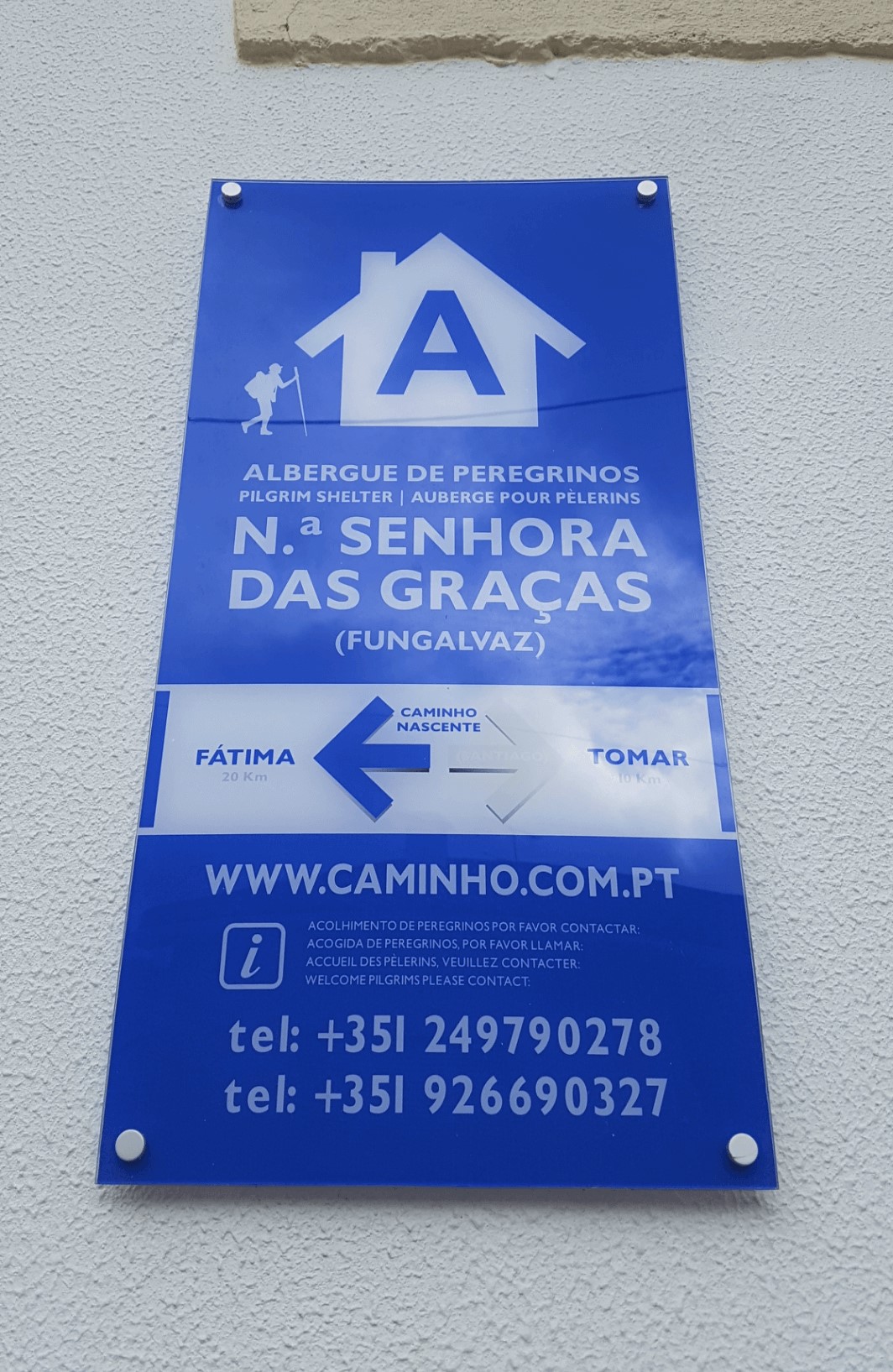 Sign for Parish Albergue on Church, Halfway on the Caminho Nascente
Sign for Parish Albergue on Church, Halfway on the Caminho NascenteBack in Tomar, leaving from the City Hall, as shown in the beginning of the article, the Caminho Nascente climbs toward the castle, then walks around and to the north of it on the Avenida Dr. Veira Guimarães, as described above. Then onto the Estrada do Convento, directly north of the Convent.
As you walk around the back of the convent, you see the entrance of the aqueduct to the castle. The road turns to the right and becomes the Rua Cadeira D'El Rei.
The Caminho Nascente follows the aqueduct and this street.
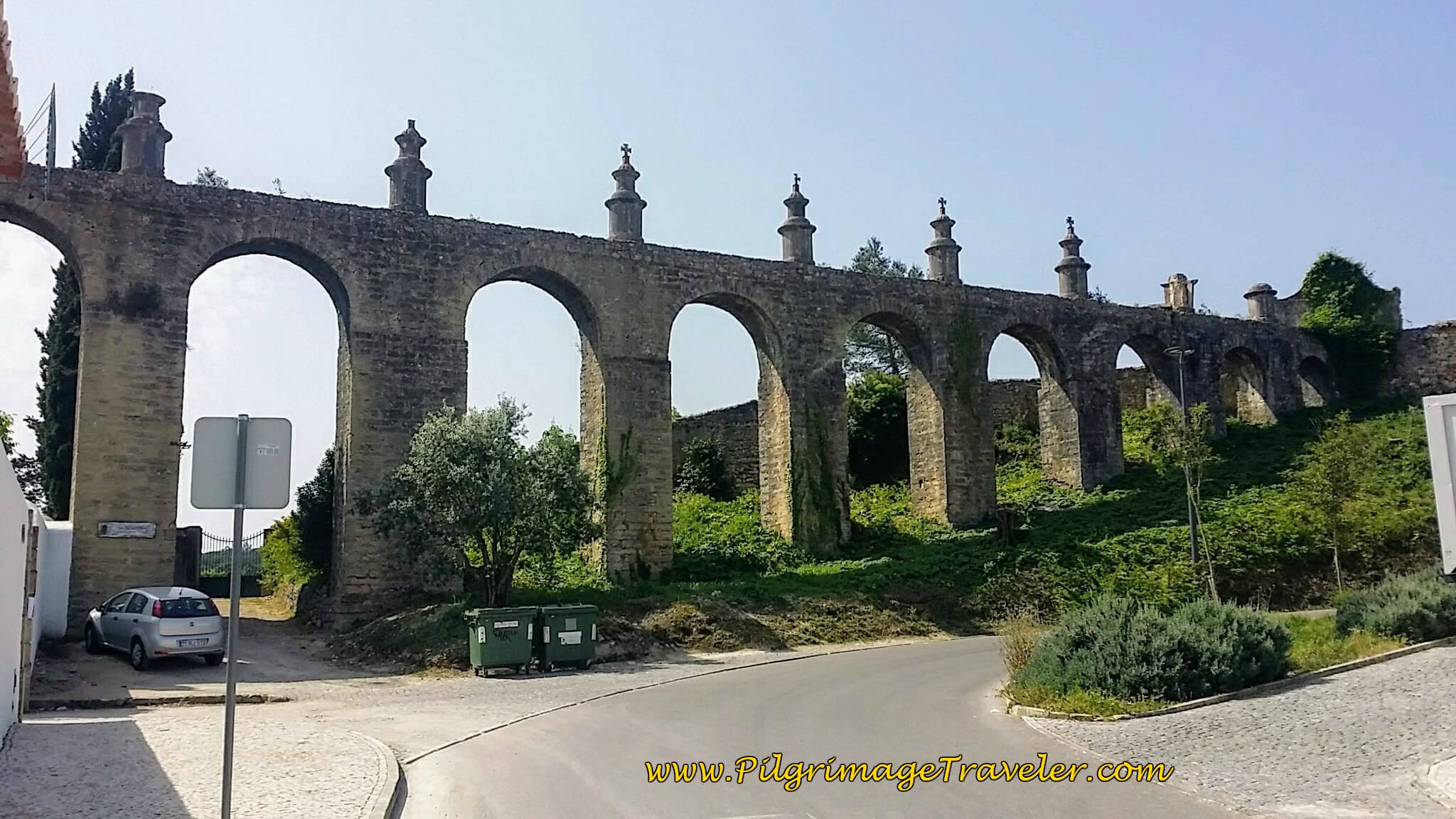 Aqueduct into the Tomar Castle
Aqueduct into the Tomar CastleHere I am along the Rua Cadeira D'El Rei. The Convent is directly behind me. Here the aqueduct is only a wall now, or maybe this was still part of the fortress wall, I didn't know for sure.
 Elle at Knights Templar Wall
Elle at Knights Templar WallAnd the wall/aqueduct continues westward and becomes even more rustic.
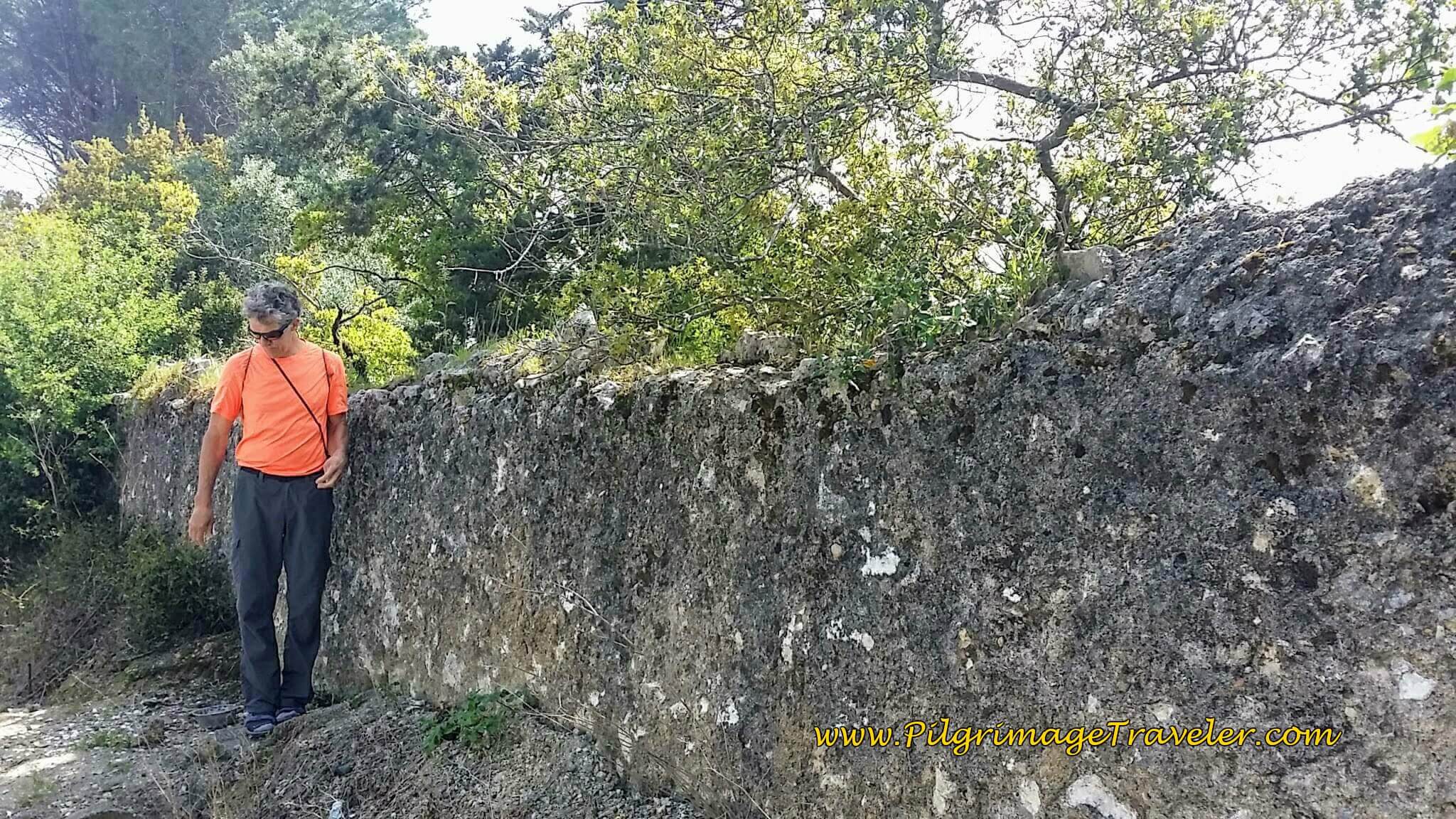 Rich on the Fortress Wall
Rich on the Fortress WallYou continue on the Rua Cadeira D'El Rei until coming to a T-intersection. Follow the blue arrow to the right and onto the Rua Casal Magano.
Take the Rua Casal Magano for barely a half a kilometer, and the way turns left onto a dirt path. Follow this path and very soon vestiges of the Aqueduto dos Pegões appear.
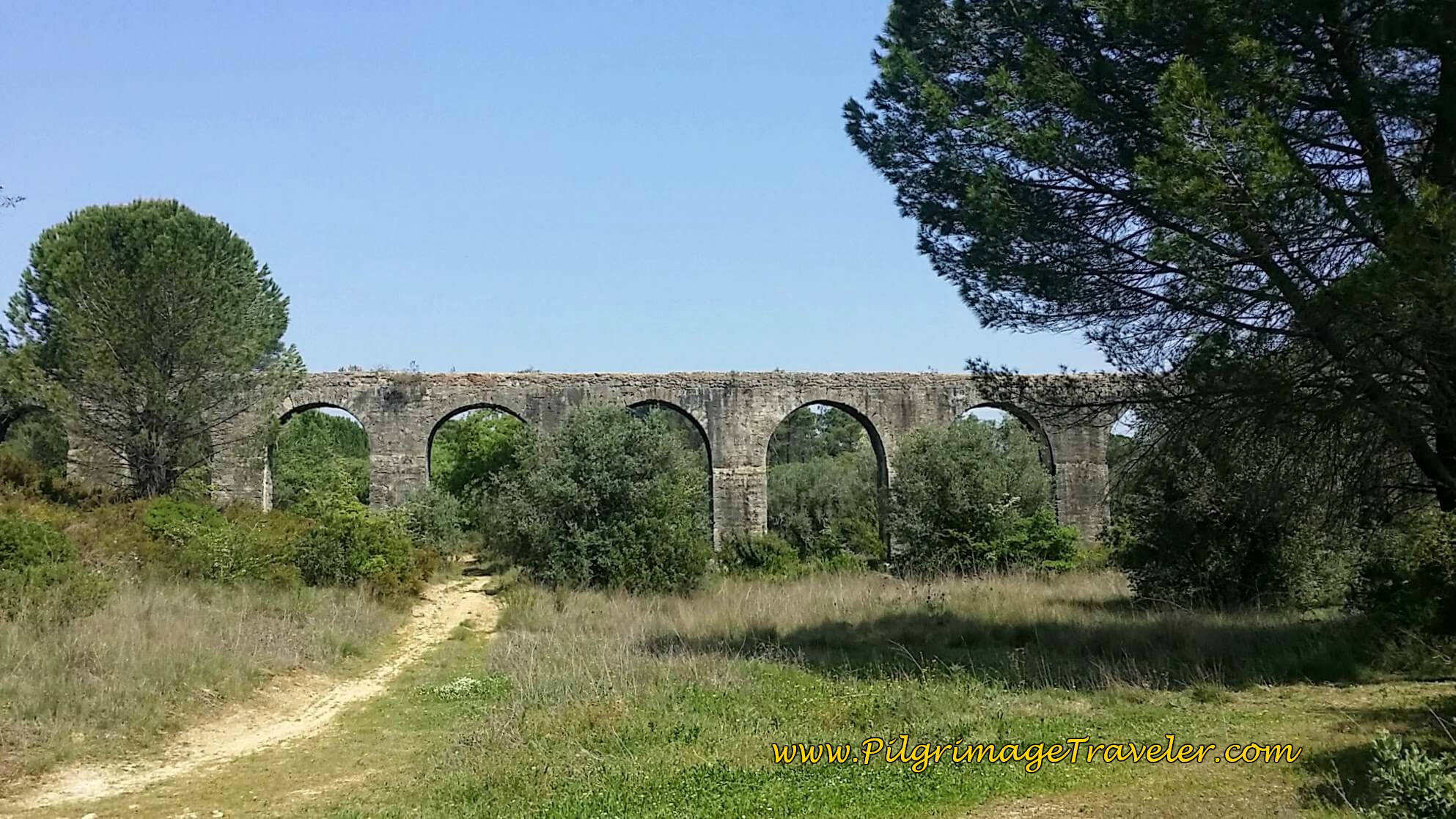 First Sight of the Aqueduct on the Caminho Nascente
First Sight of the Aqueduct on the Caminho NascenteThe Caminho continues to follow along the aqueduct, very low to the ground in places, like below, as the terrain changes.
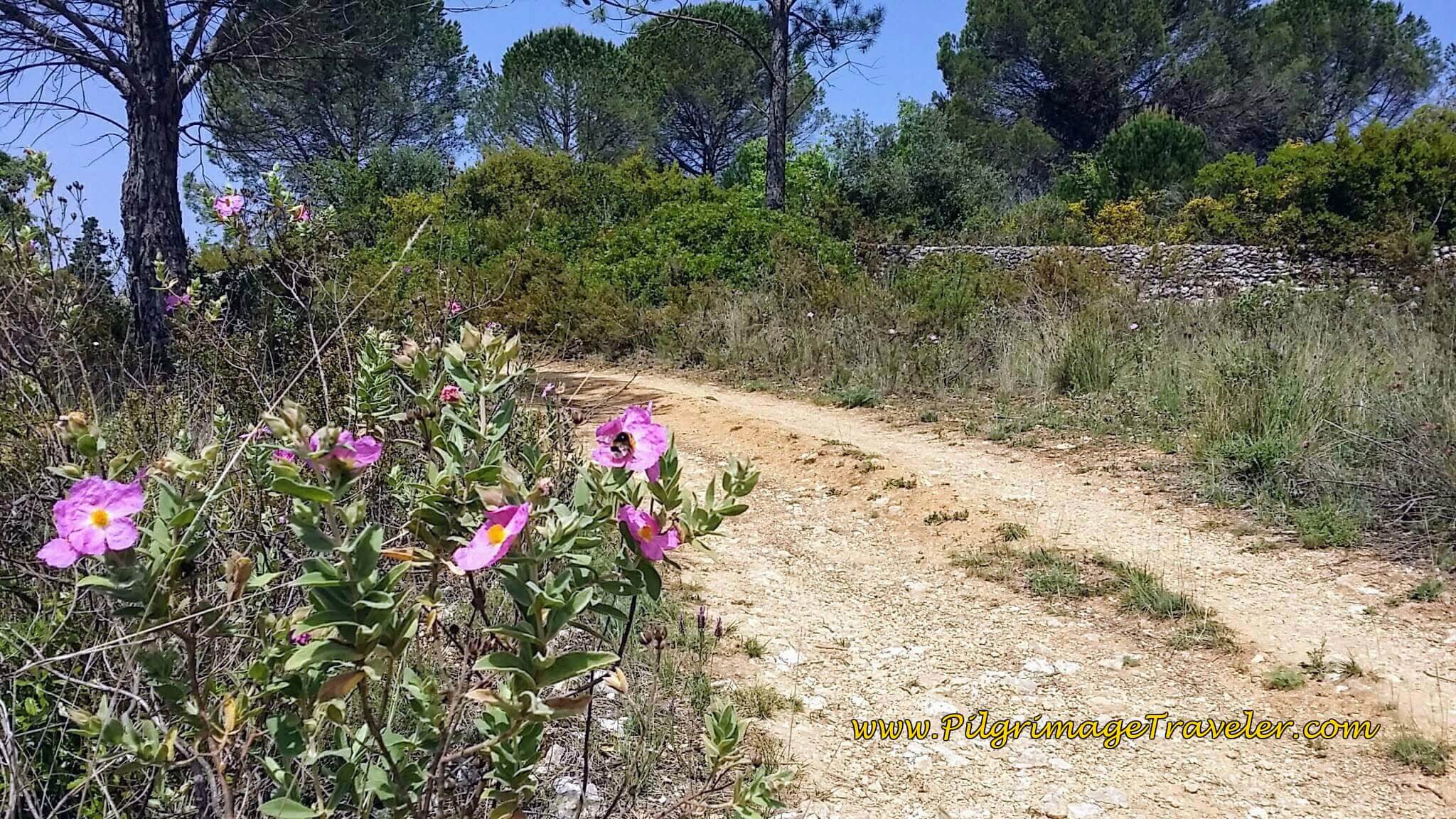 Flowers and Aqueduct Wall
Flowers and Aqueduct WallThe blue and yellow arrows abound, on the rocks and on the aqueduct walls.
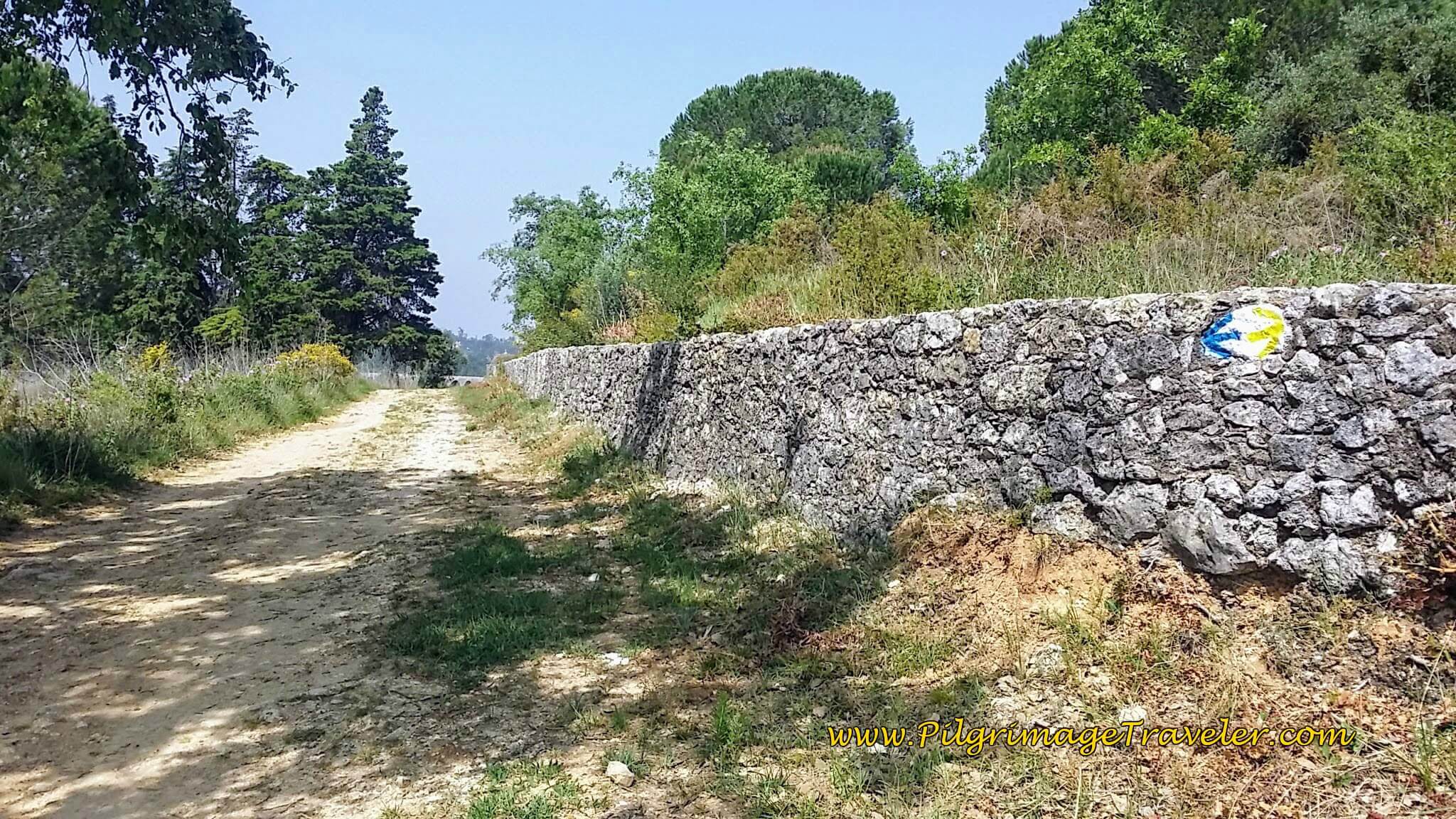 Yellow and Blue Arrows on the Aqueduct Wall
Yellow and Blue Arrows on the Aqueduct WallThis is the first glimpse of the most dramatic section of the Aqueduto dos Pegões, ahead.
It is an amazing thing, this aqueduct, 30 meters high in this section.
 30 Meters High at the Tallest
30 Meters High at the TallestIf you walk on the path under the archway to the right, above, you see a staircase to the top, within the small enclosure, below left. Once on top, the views are quite thrilling! Below, right is a photos looking back towards Tomar, Portugal. A car parked below in the car parking lot gives a bit of perspective.
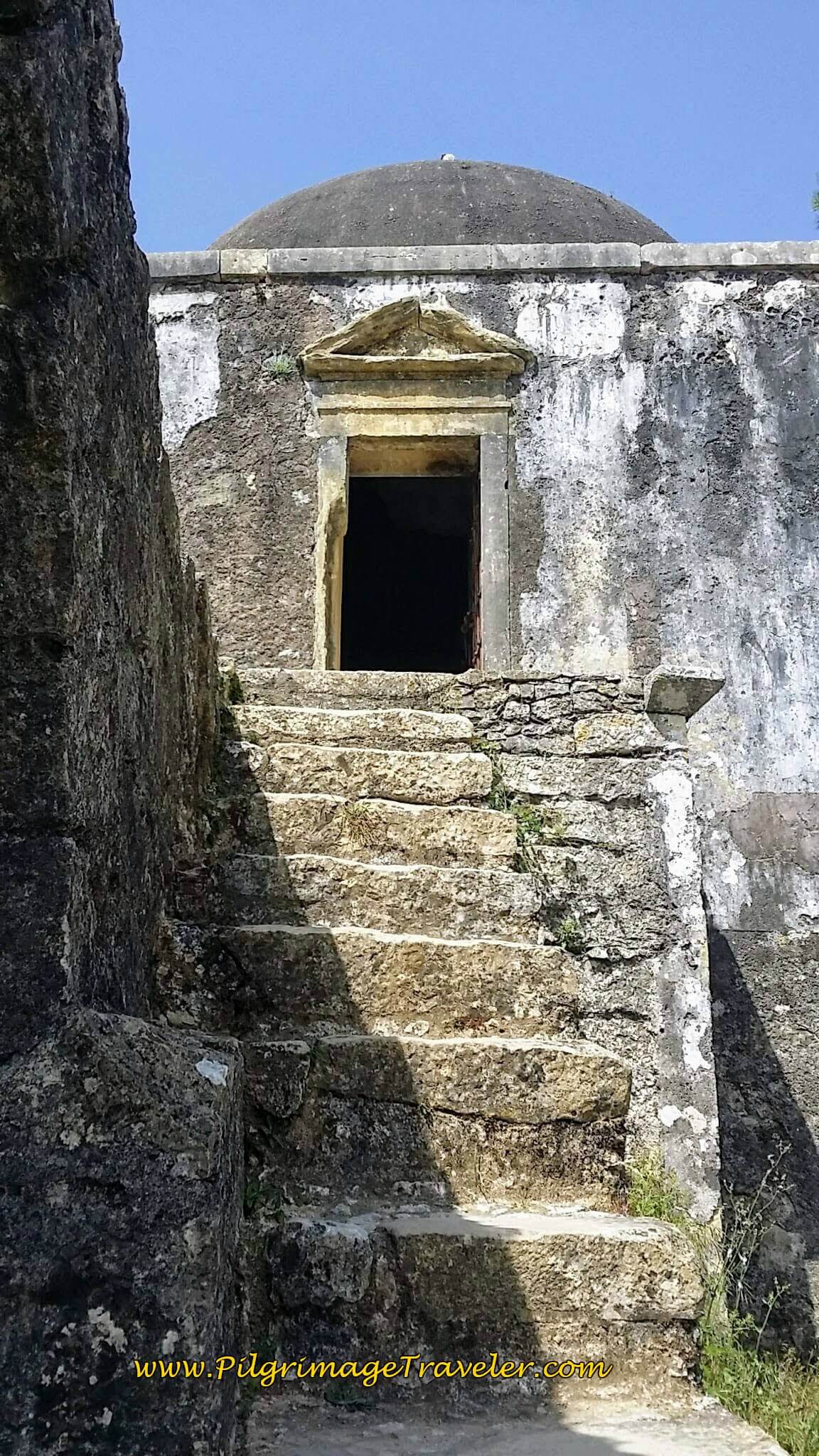 Staircase to the Top of the Aqueduct
Staircase to the Top of the Aqueduct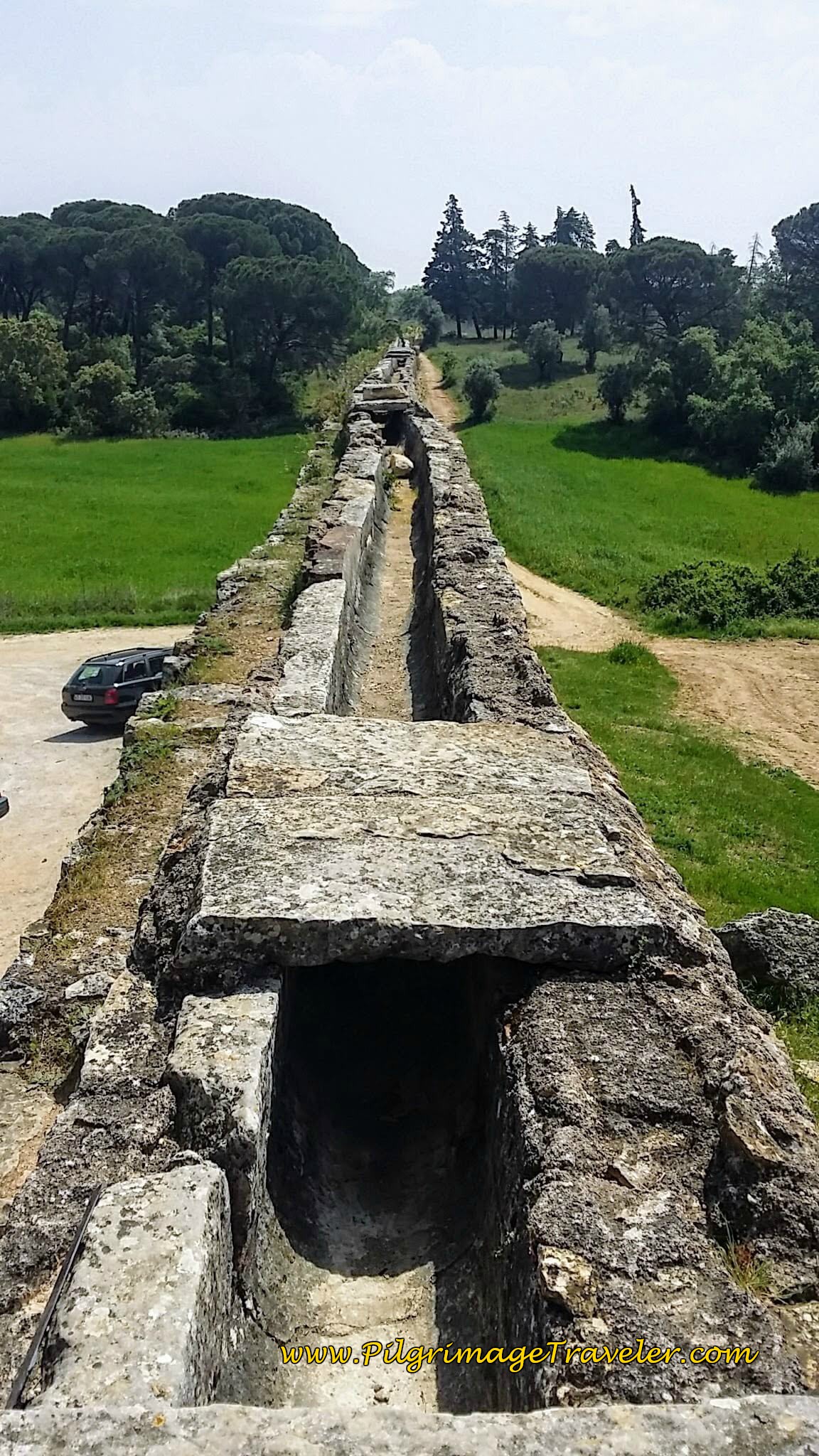 Looking East in the Aqueduct
Looking East in the AqueductLooking the other direction is the thrilling part. Here I am, on the aqueduct with no walls to the right to catch me if I fell!
Here is another view of the aqueduct. You can walk all the way, on top, to the end, but the solidarity of the structure got more sketchy for me to do so!
Enjoy this amazing and historical place, built in the mid-sixteenth century. It is six km long, and once upon a time, supplyied fresh water from four natural springs to the Convent!
Camino Portugués eBook Guides
Our Downloadable Camino Portugués eBook Guides in PDF Format contain all the valuable information from our web pages, for comfortable reading offline and without ads on your personal device. Don't carry a hard copy guide book to increase your pack weight. Use our digital guides on your next Camino instead!
Our ebook guides are packed with frequently updated information, because a digital format is more nimble than hard-copy publishing. Our eBook Guide is unique because we also entertain and immerse you with our story! Click on any eBook above for more information.
Buy only what you need OR buy ALL FOUR eBooks for the price of THREE - a 25% savings! Click here for more information or BUY NOW at only 17.85!
Walking back into Tomar, Portugal, our final stop immediately north and east of the Convent was this charming little edifice, the Hermitage of Nossa Senhora da Conceição, below.
On this lovely spring day, the views of the city of Tomar, Portugal were fantastic from this terrace by the Hermitage. Unfortunately, the little chapel was closed to the public.
Here is yet another gorgeous view of the city from the terrace wall. It was worth the visit, just to see the view.
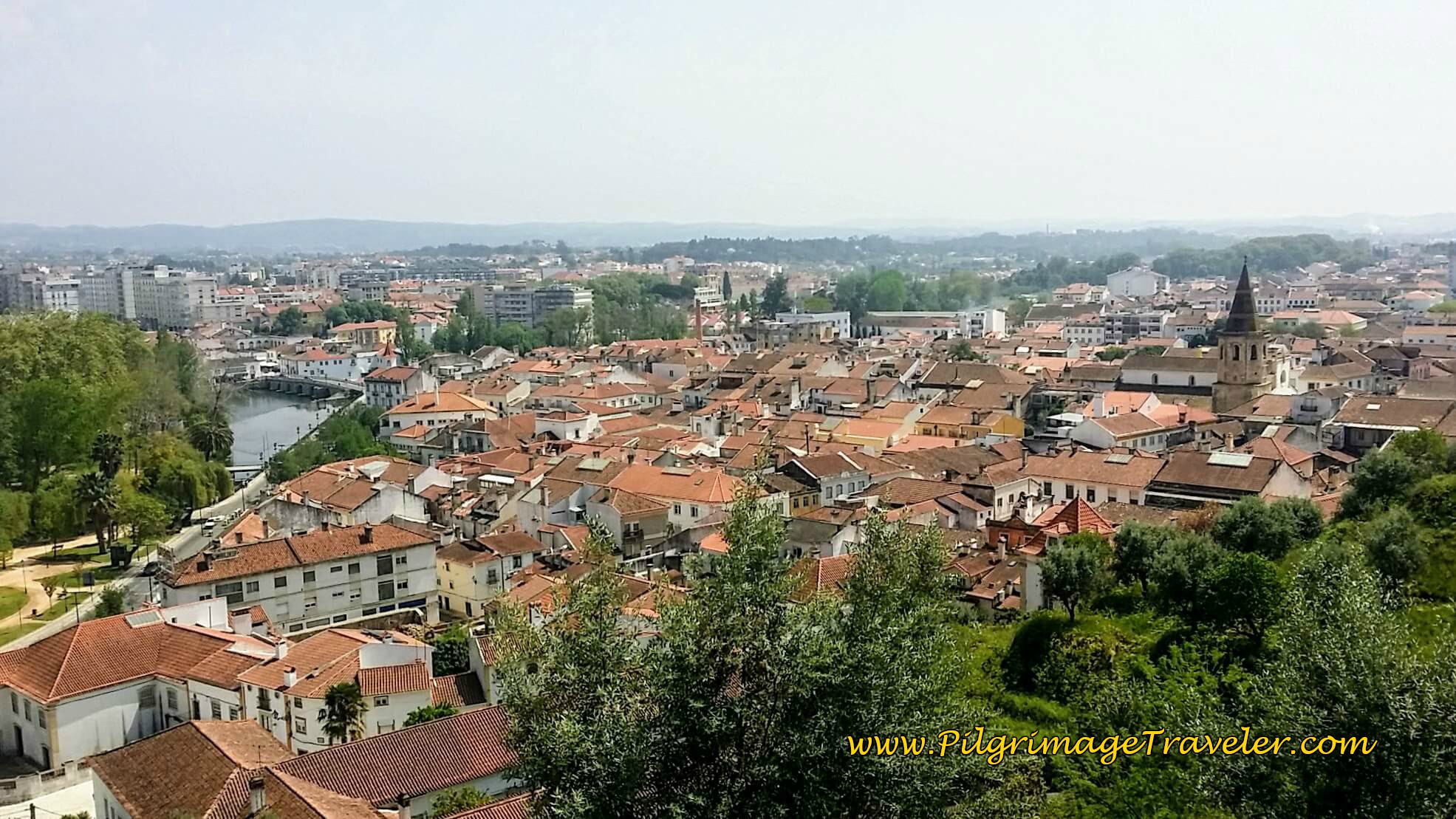 Bird's Eye View of Tomar
Bird's Eye View of TomarI hope you have enjoyed my brief tour of the major attractions of Tomar, Portugal. It was a glorious day of "rest" for us, even though we most likely walked a good 8 kilometers anyway! But the town is so worth visiting for a day, and the history here is fascinating!
May your own Camino Portugués be enhanced by a visit to the historic town of Tomar, Portugal!
Camino Portugués Stages
Lisbon to Porto
Senda Litoral or the Coastal Routes: Porto to Santiago
Skip to Central Route Below, for Final Days 22-25 to Santiago
Central Route: Porto to Santiago
Variante Espiritual
Please Consider Showing Your Support
Many readers contact me, Elle, to thank me for all the time and care that I have spent creating this informative website. If you have been truly blessed by my efforts, have not purchased an eBook, yet wish to contribute, I am very grateful. Thank-you!
Search This Website:
🙋♀️ Why Trust Us at the Pilgrimage Traveler?

We’re not a travel agency ~ we’re pilgrims, just like you.
We've walked Pilgrimage Routes Across Europe!
💬 We’ve:
- Gotten lost so you don’t have to. 😉
- Followed yellow arrows in the glowing sunlight, the pouring rain and by moonlight. ☀️🌧️🌙
- Slept in albergues, hostals & casa rurals. Ate and drank in cafés along the way. 🛌 😴
- Created detailed and downloadable GPS maps and eBook Guides, full of must-have information based on real pilgrimage travels. 🧭 🗺️
- Shared our complete journeys, step by step to help YOU plan your own ultimate pilgrimage and walk with your own Heart and Soul. 💙✨
Every detail is from our own experiences ~ no fluff, no AI rewrite. Just fellow pilgrims sharing the way. We add a touch of spirituality, a big dose of ❤️ and lots of wisdom from the road.
Ultreia and Safe Pilgrimage Travels, Caminante! 💫 💚 🤍
Follow Me on Pinterest:
Find the Pilgrimage Traveler on Facebook:
Like / Share this page on Facebook:
Follow Me on Instagram:
***All Banners, Amazon, Roamless and Booking.com links on this website are affiliate links. As an Amazon associate and a Booking.com associate, the Pilgrimage Traveler website will earn from qualifying purchases when you click on these links, at no cost to you. We sincerely thank-you as this is a pilgrim-supported website***
PS: Our eBook Guide books are of our own creation and we appreciate your purchase of those too!!
Shroud Yourself in Mystery, along the Via de Francesco!
Walk in the Footsteps of St. Francis, and Connect Deeply to the Saint and to Nature in the Marvelous Italian Countryside!
Need suggestions on what to pack for your next pilgrimage? Click Here or on the photo below!
Carbon fiber construction (not aluminum) in a trekking pole makes them ultra lightweight. We like the Z-Pole style from Black Diamond so we can hide our poles in our pack from potential thieves before getting to our albergue! There are many to choose from! (See more of our gear recommendations! )
Gregory BackPack - My Favorite Brand
Do not forget your quick-dry microfiber towel!
Booking.com
My absolute favorite book on how to be a pilgrim:
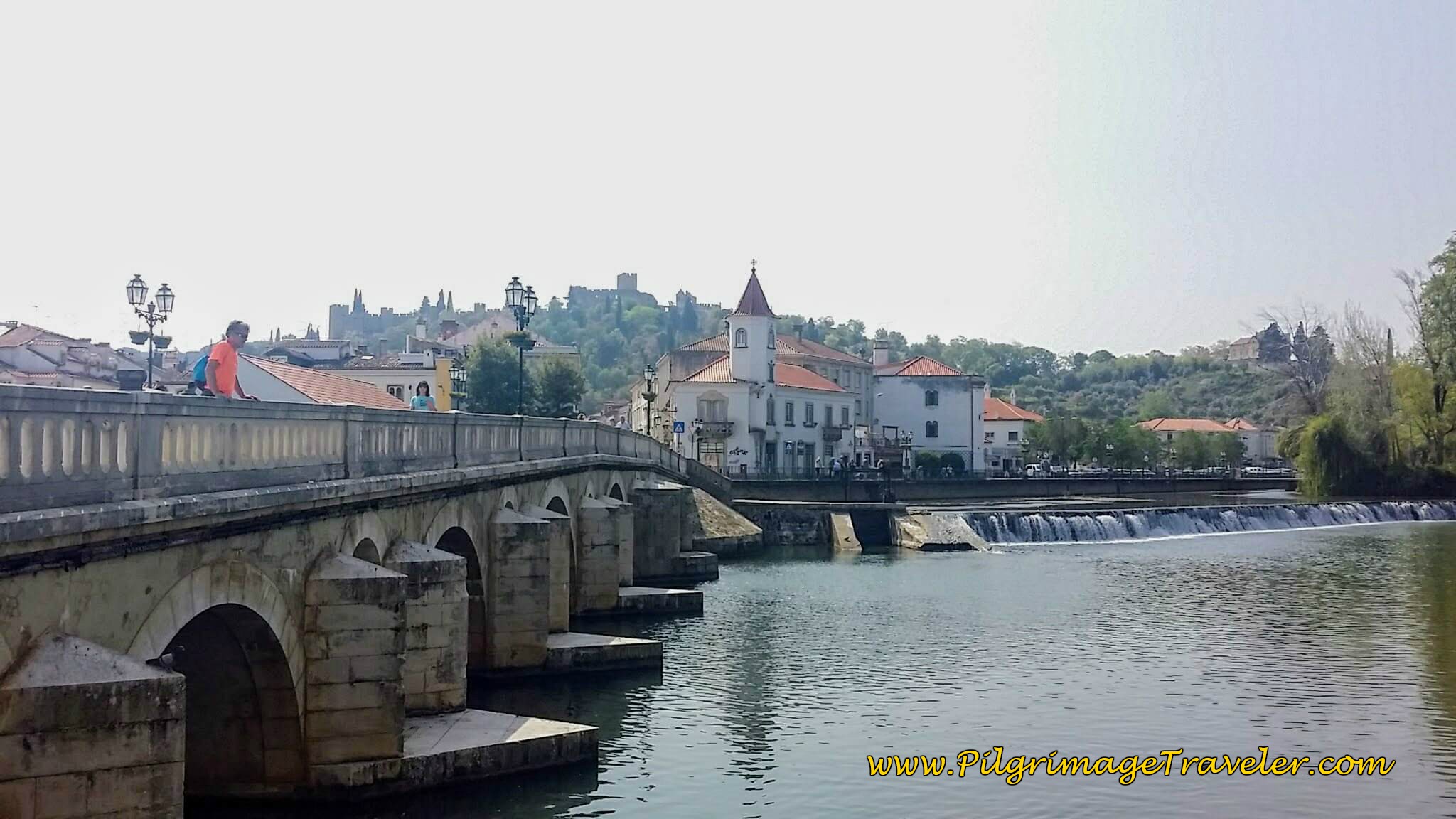
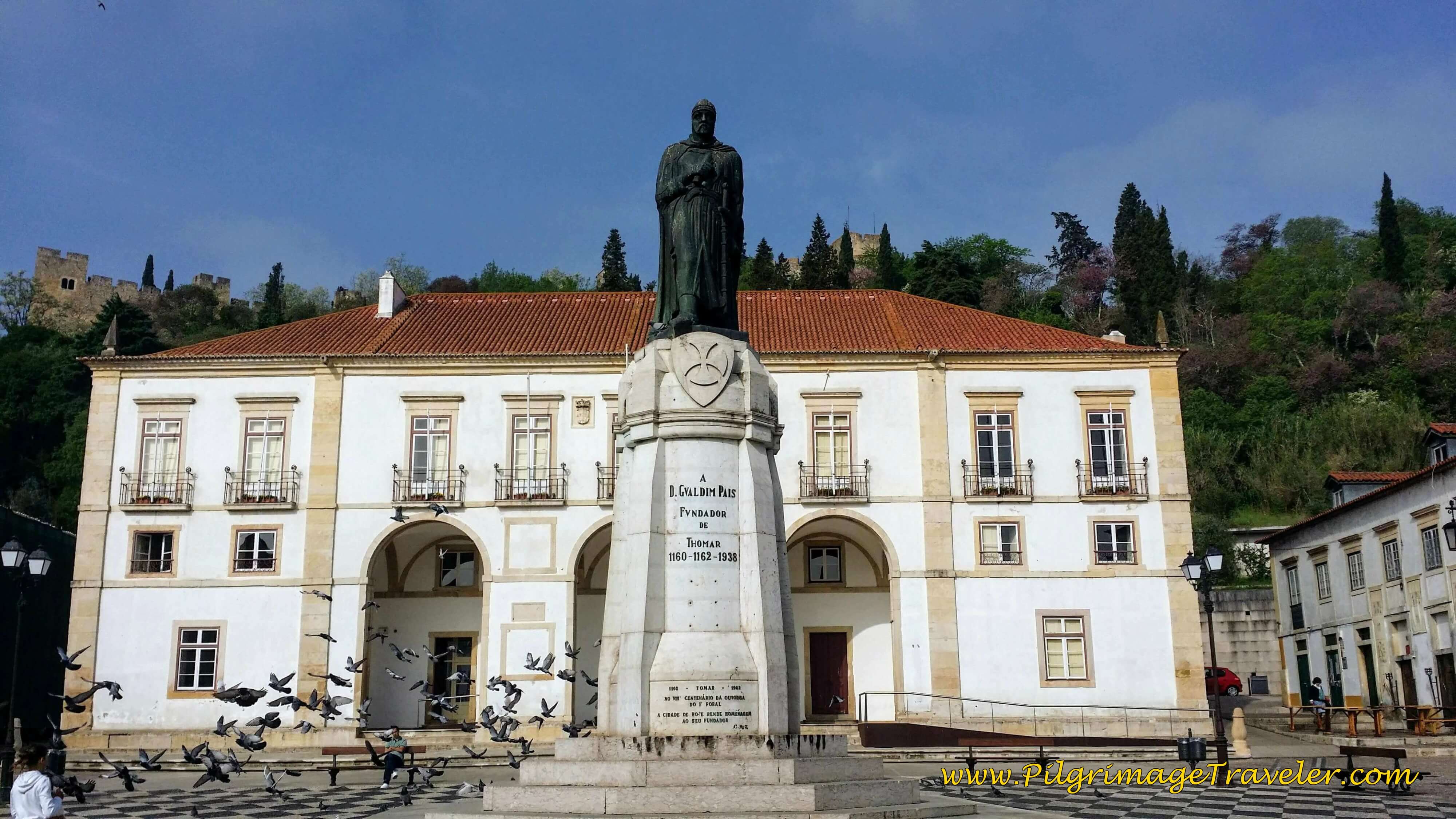
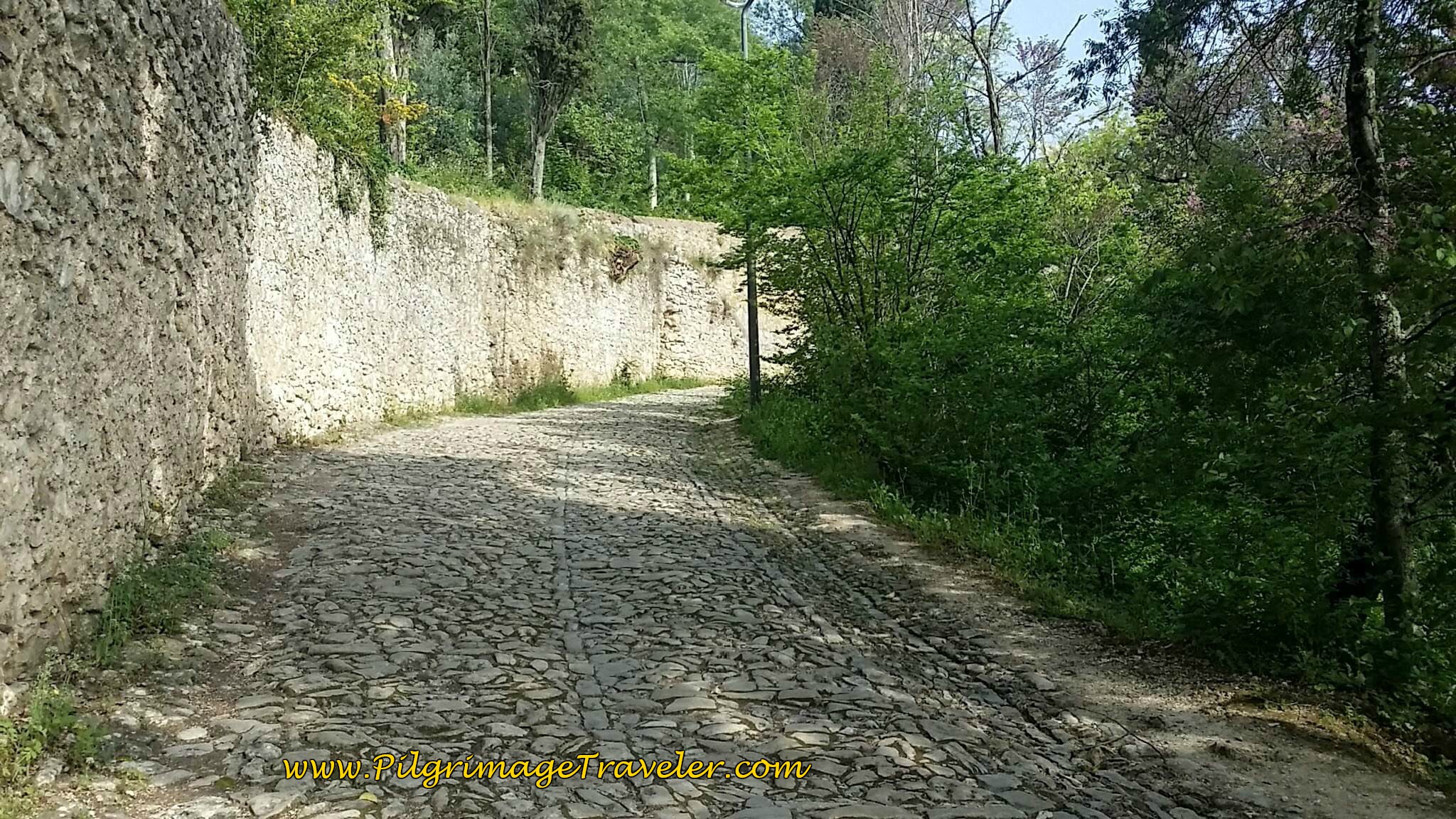
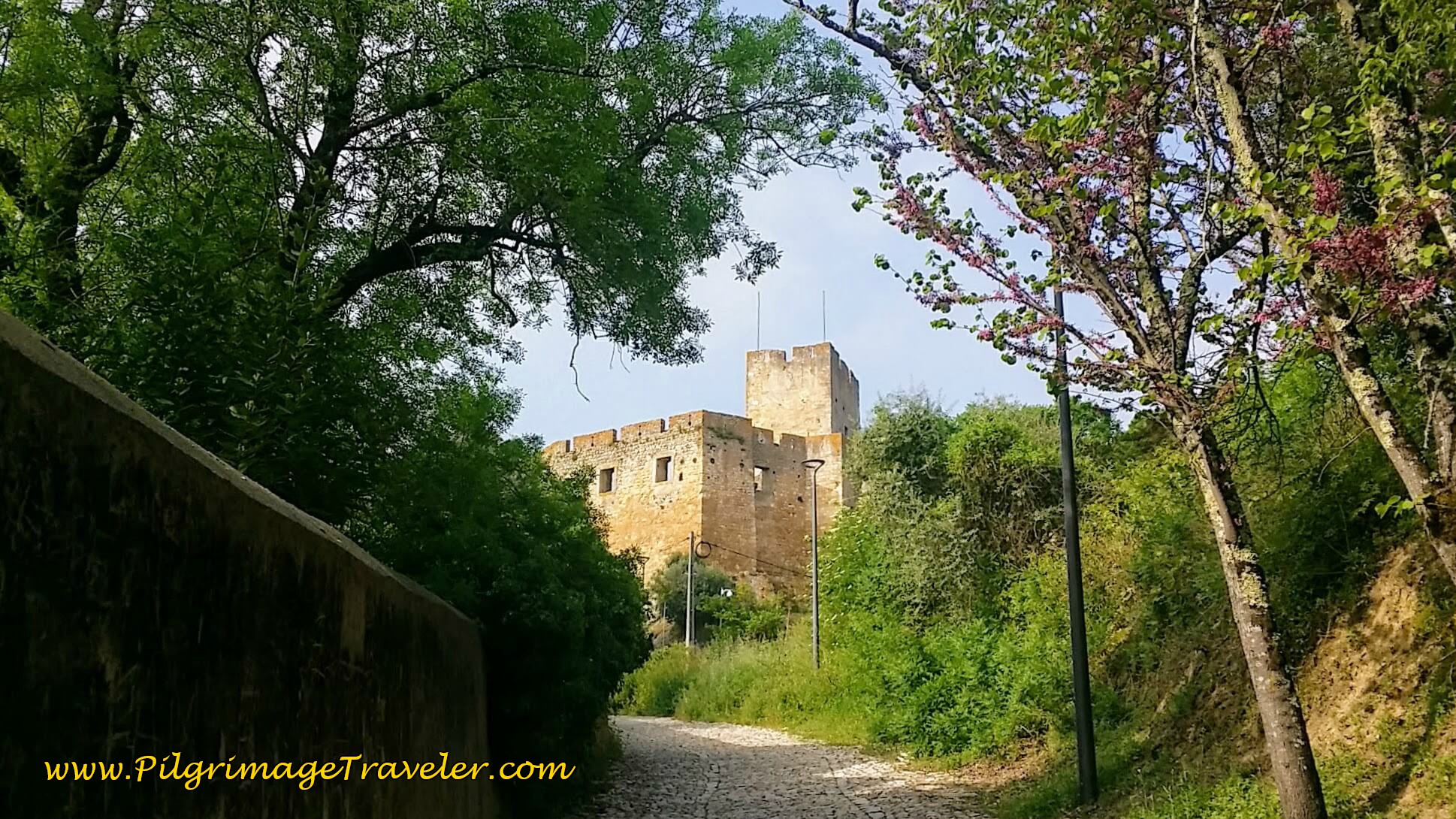
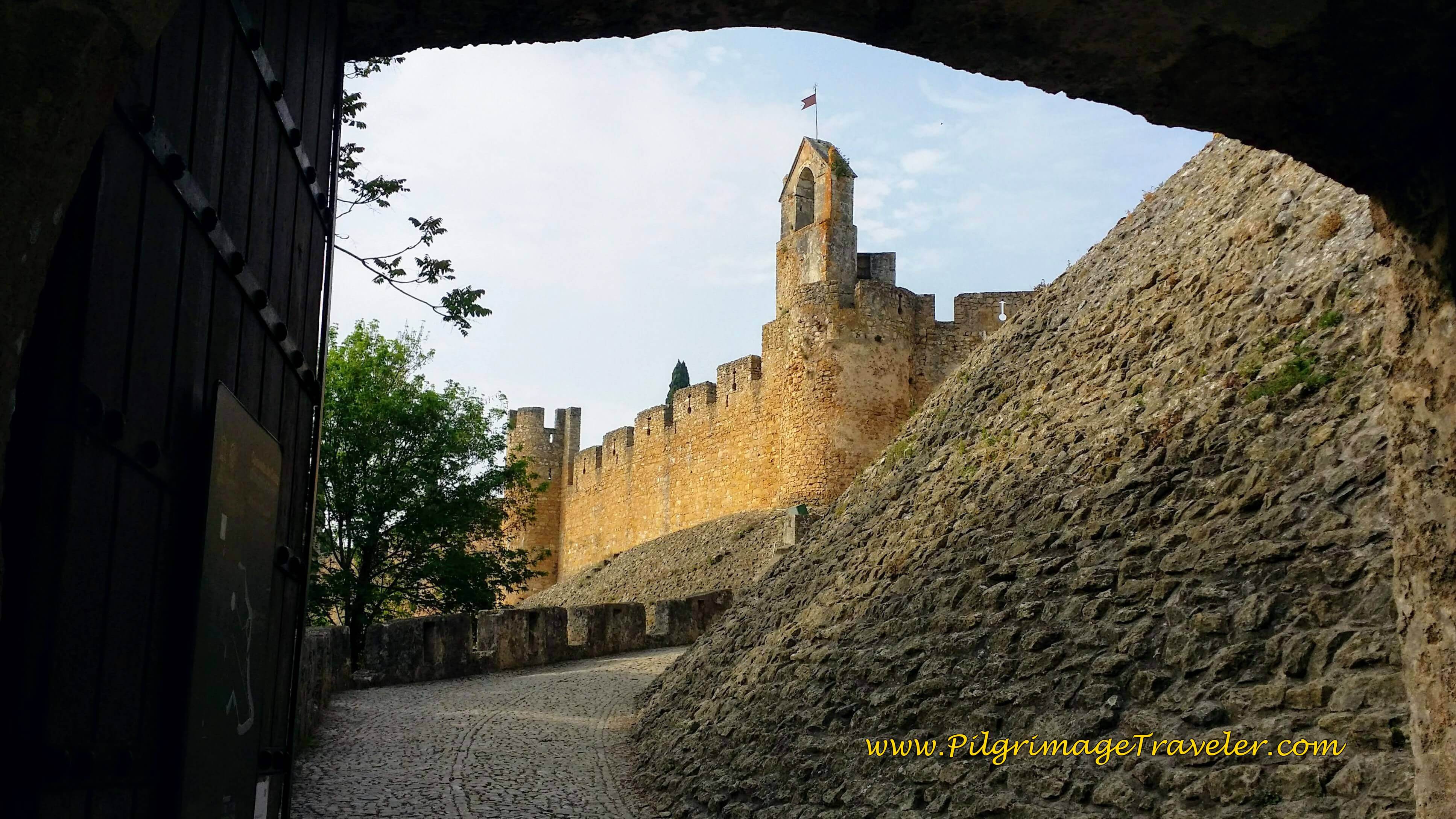
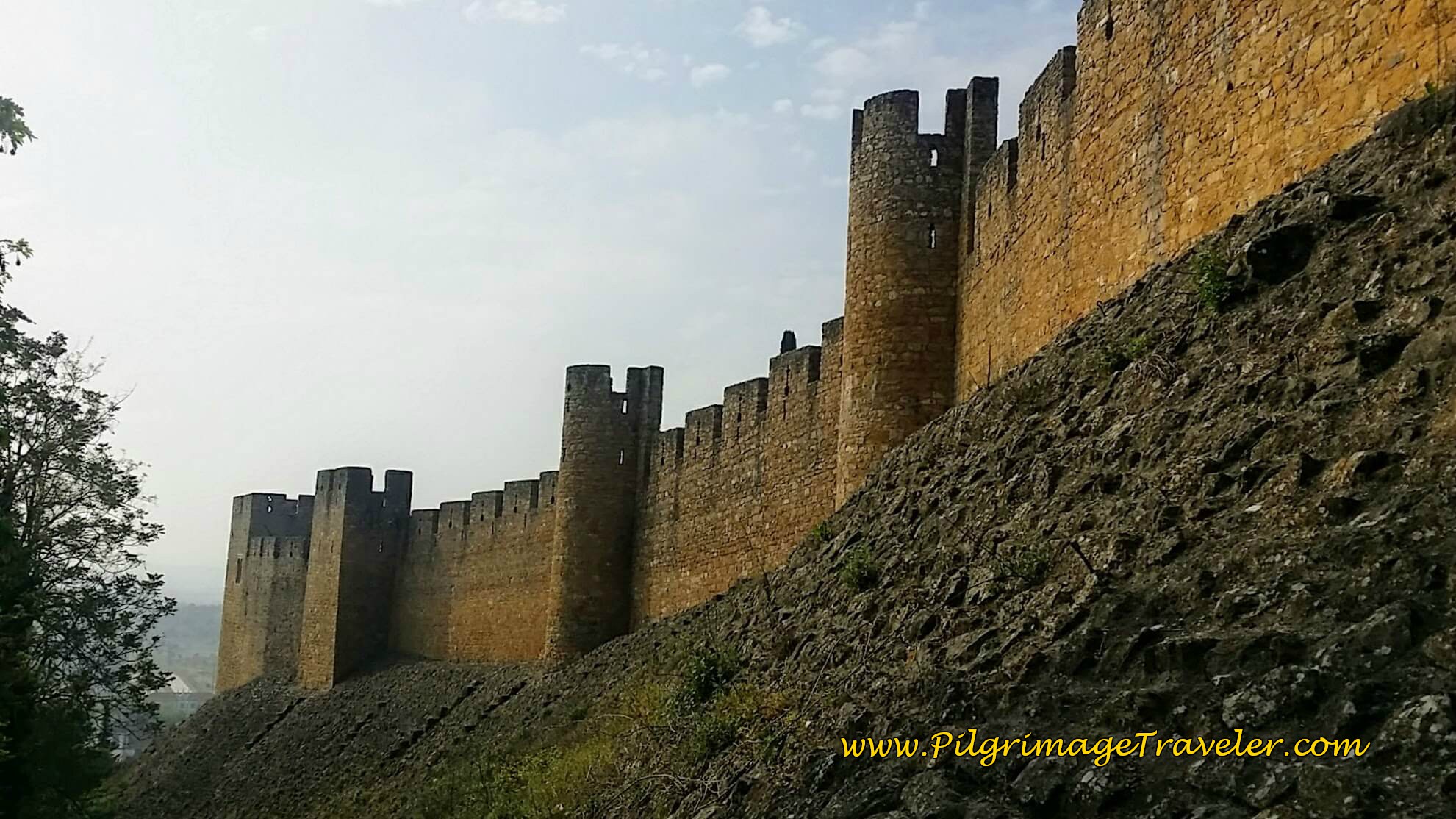

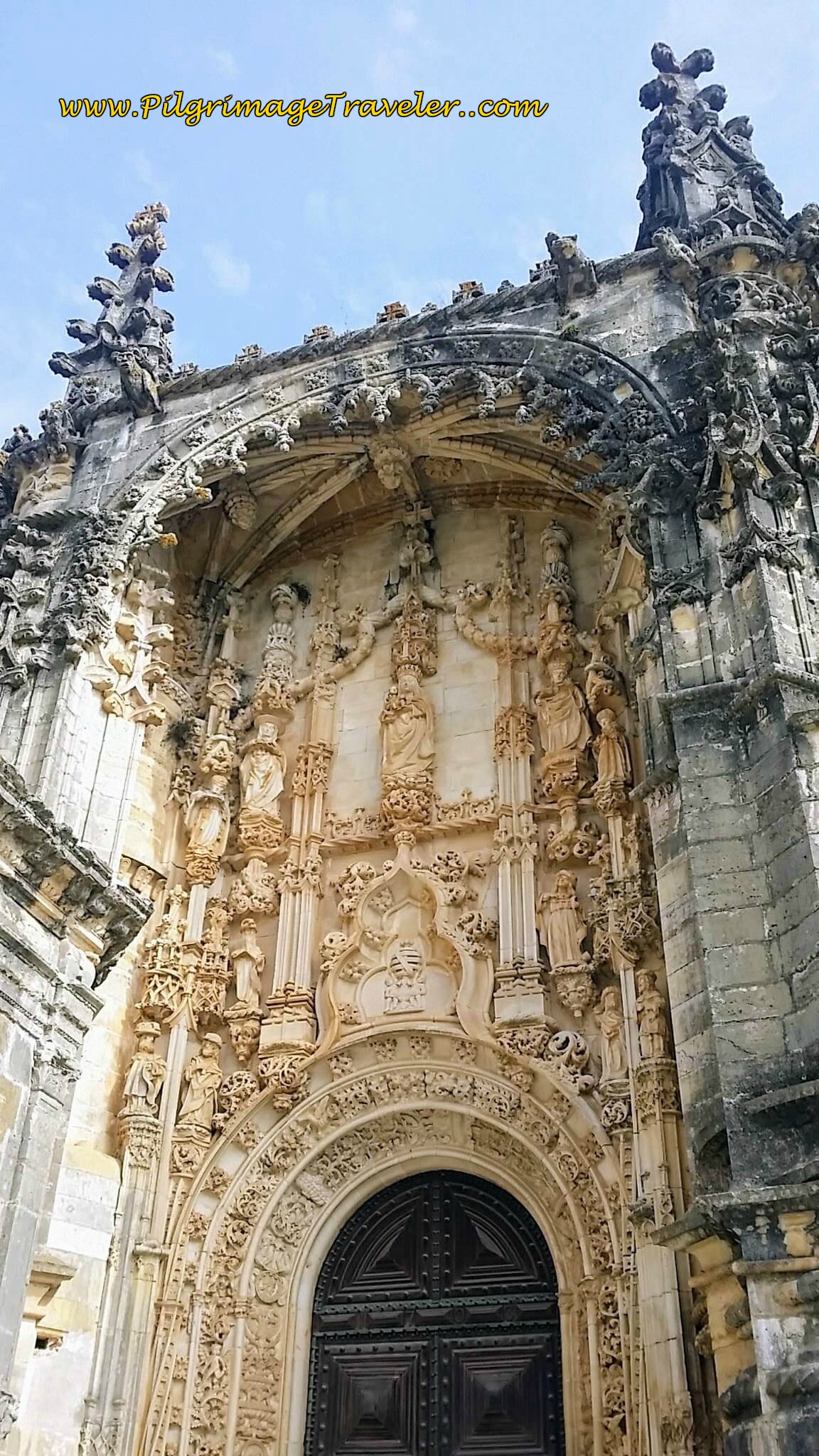


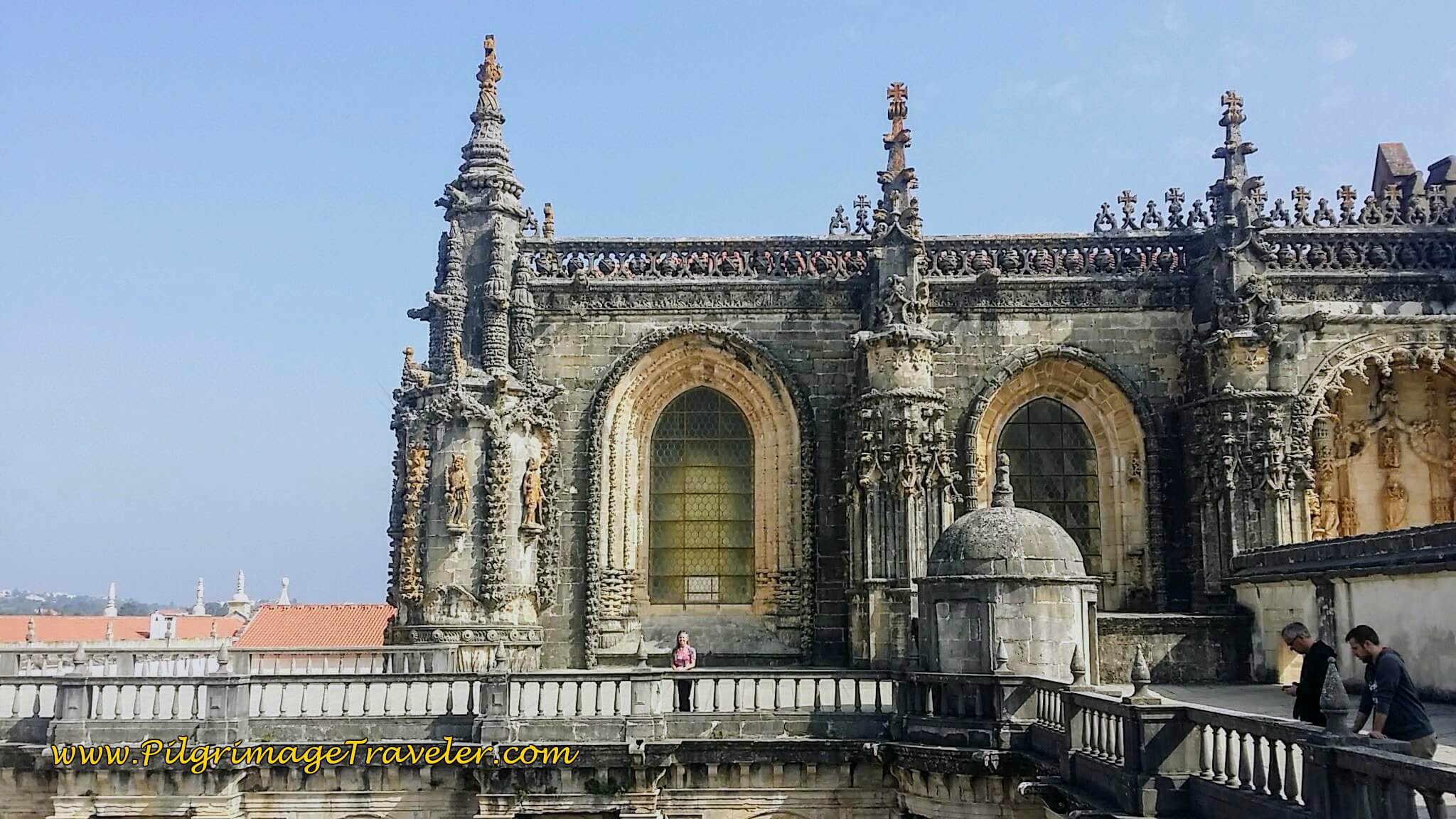
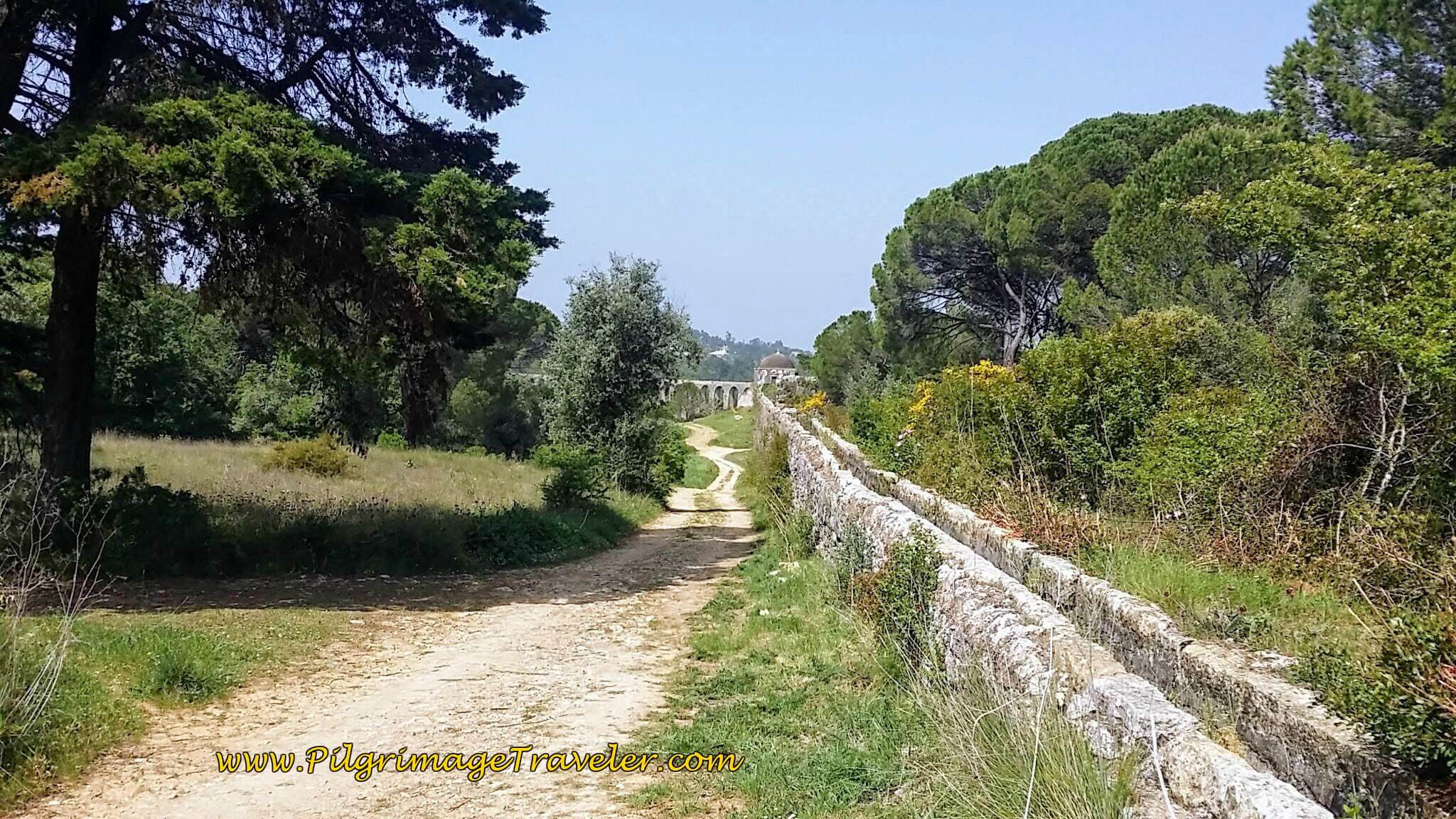
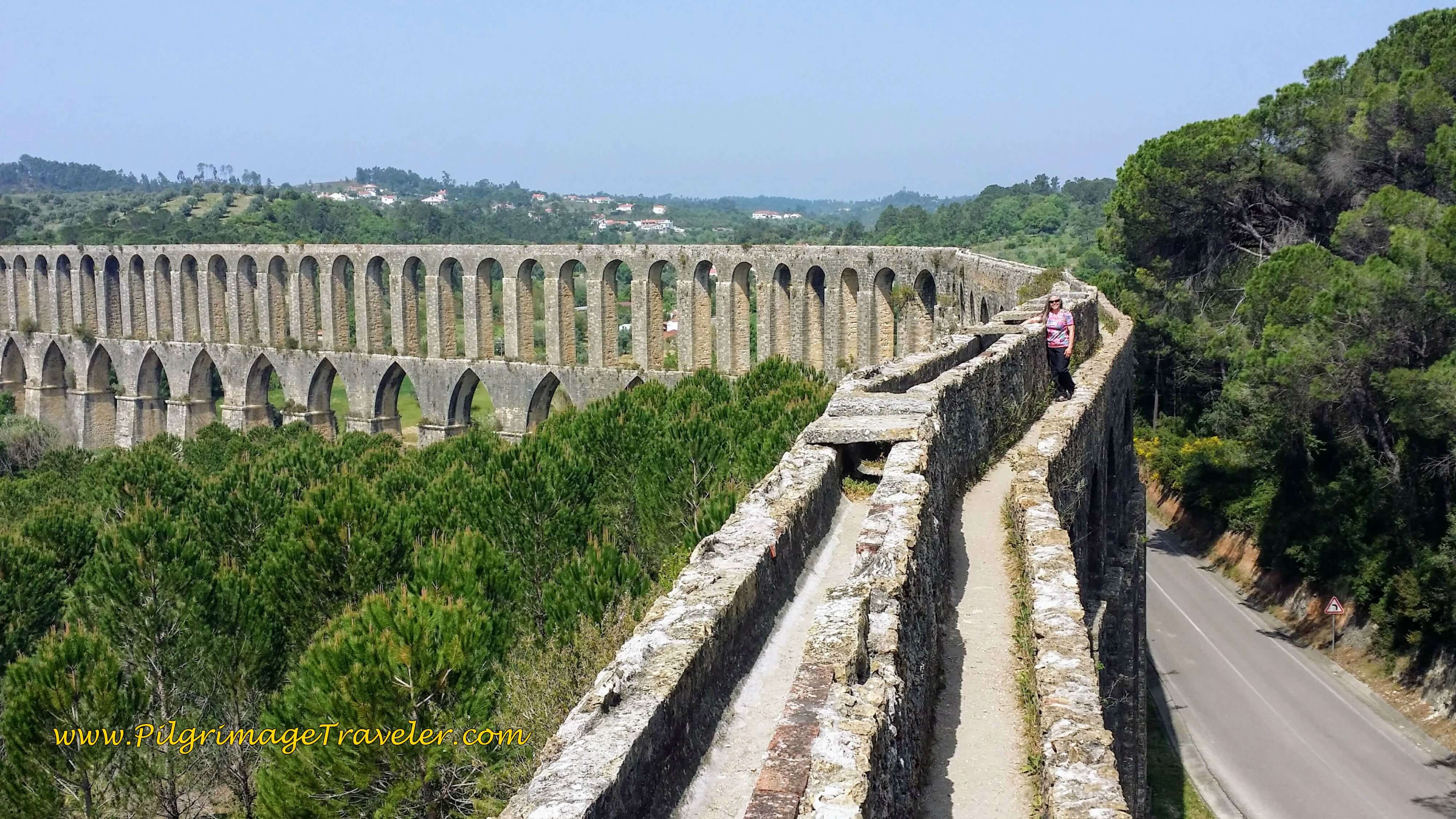
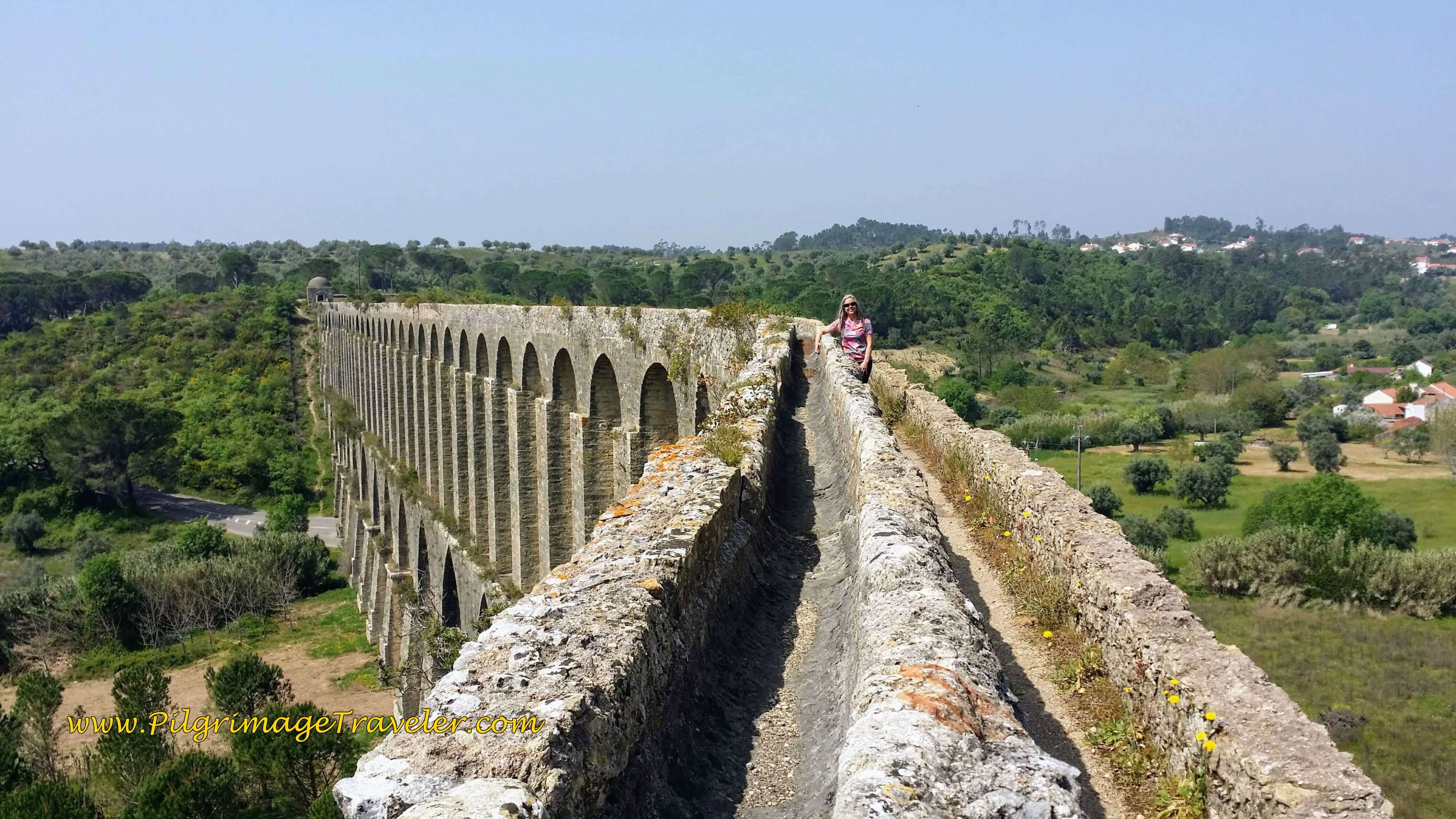
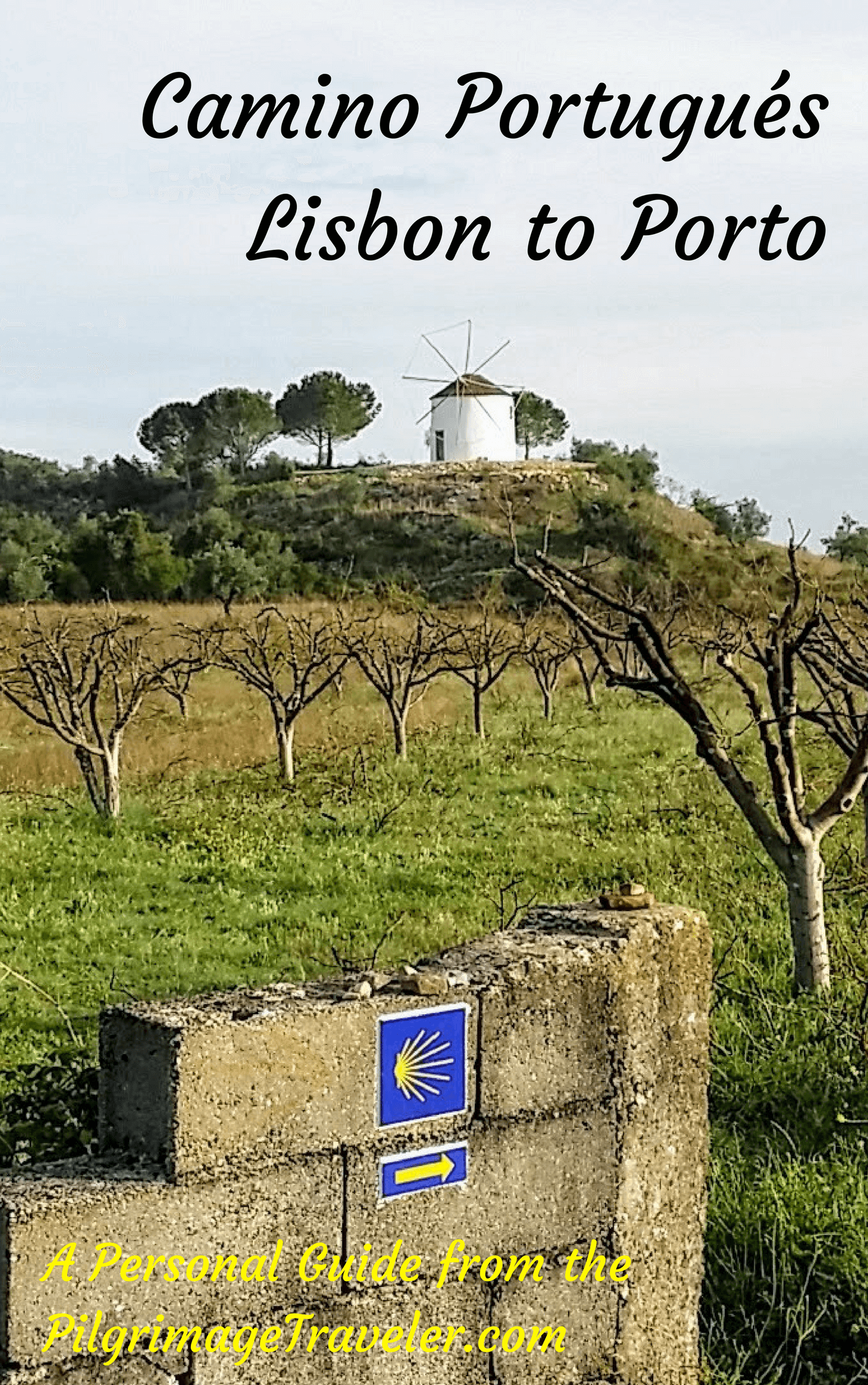
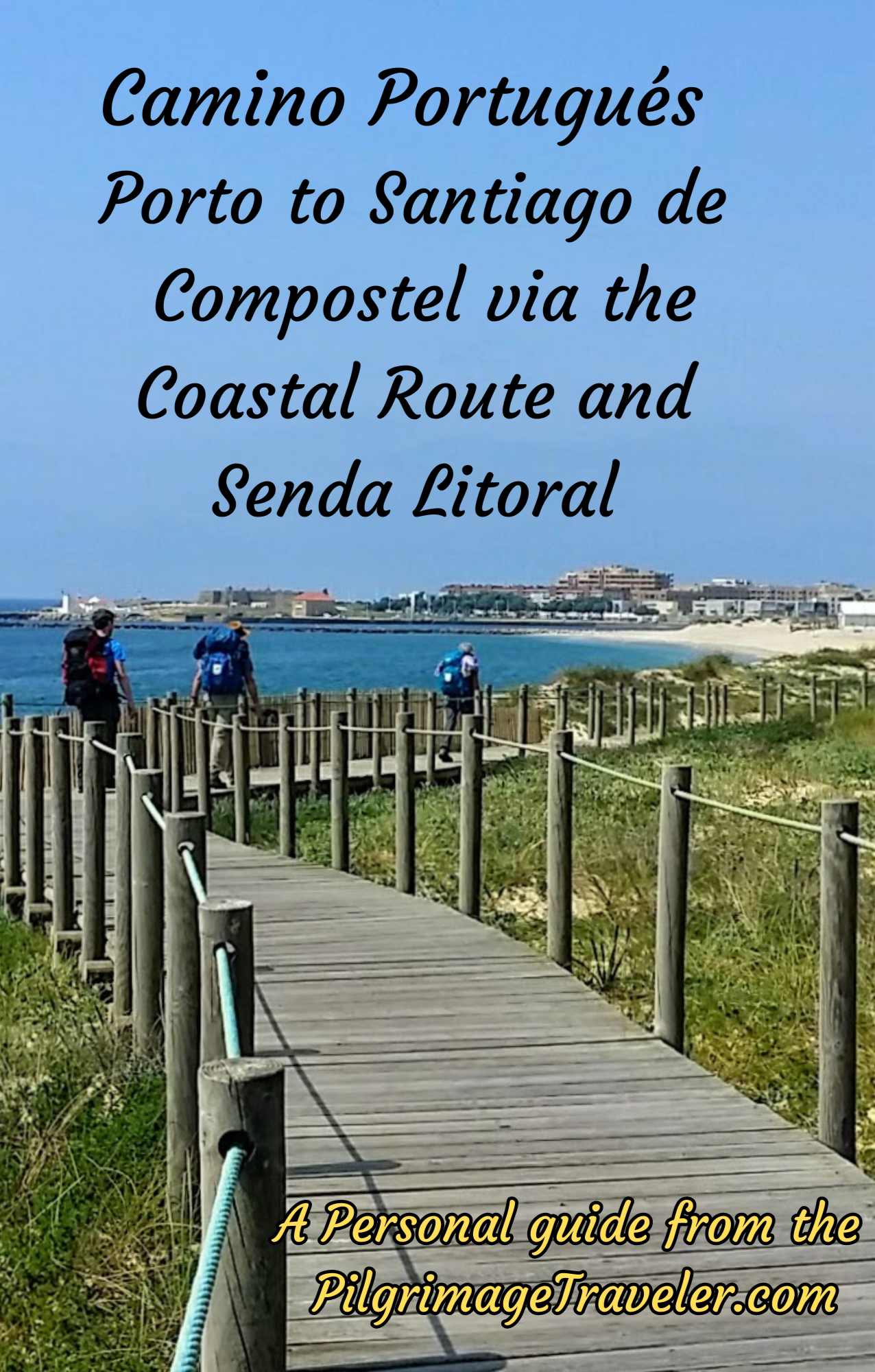
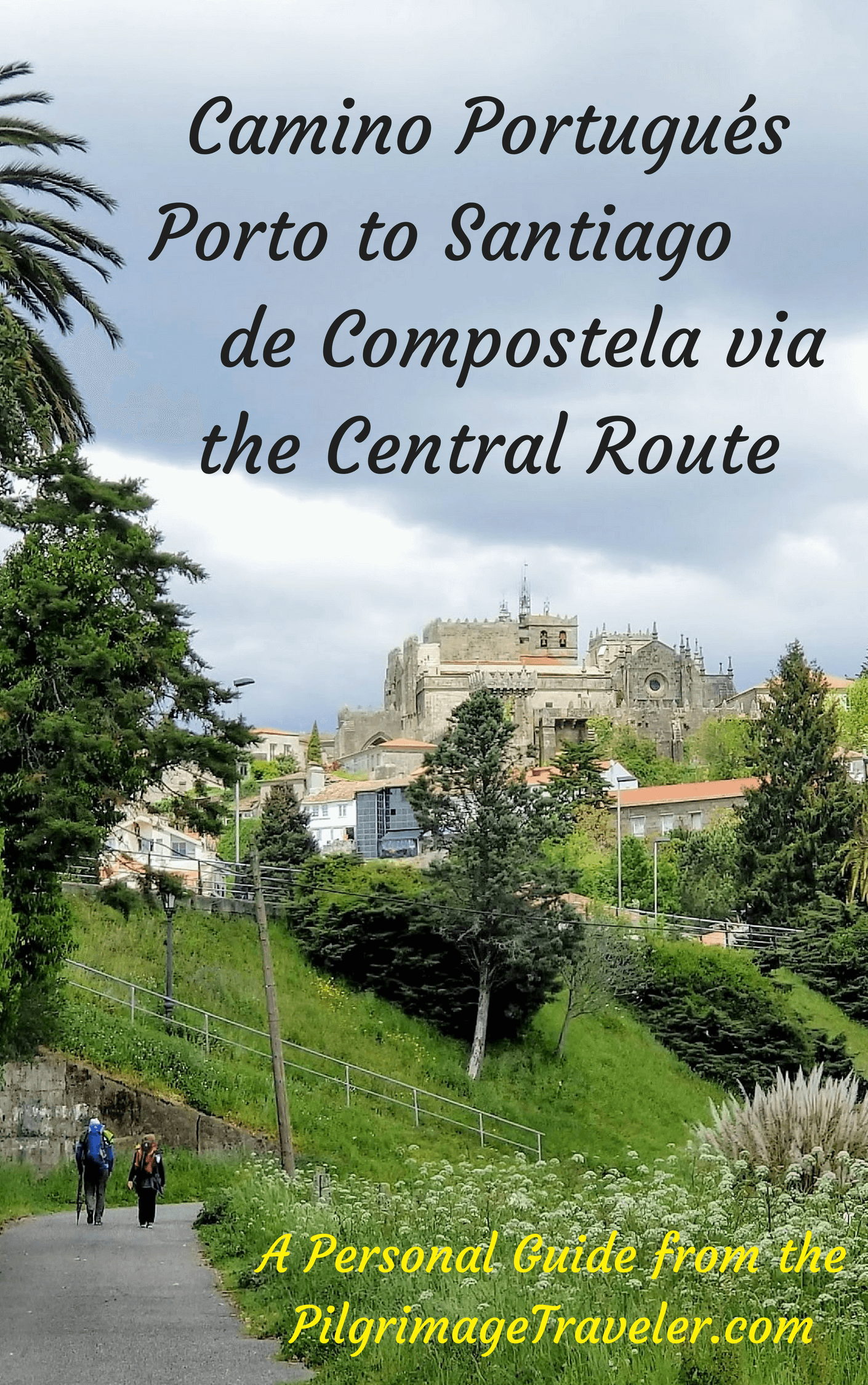
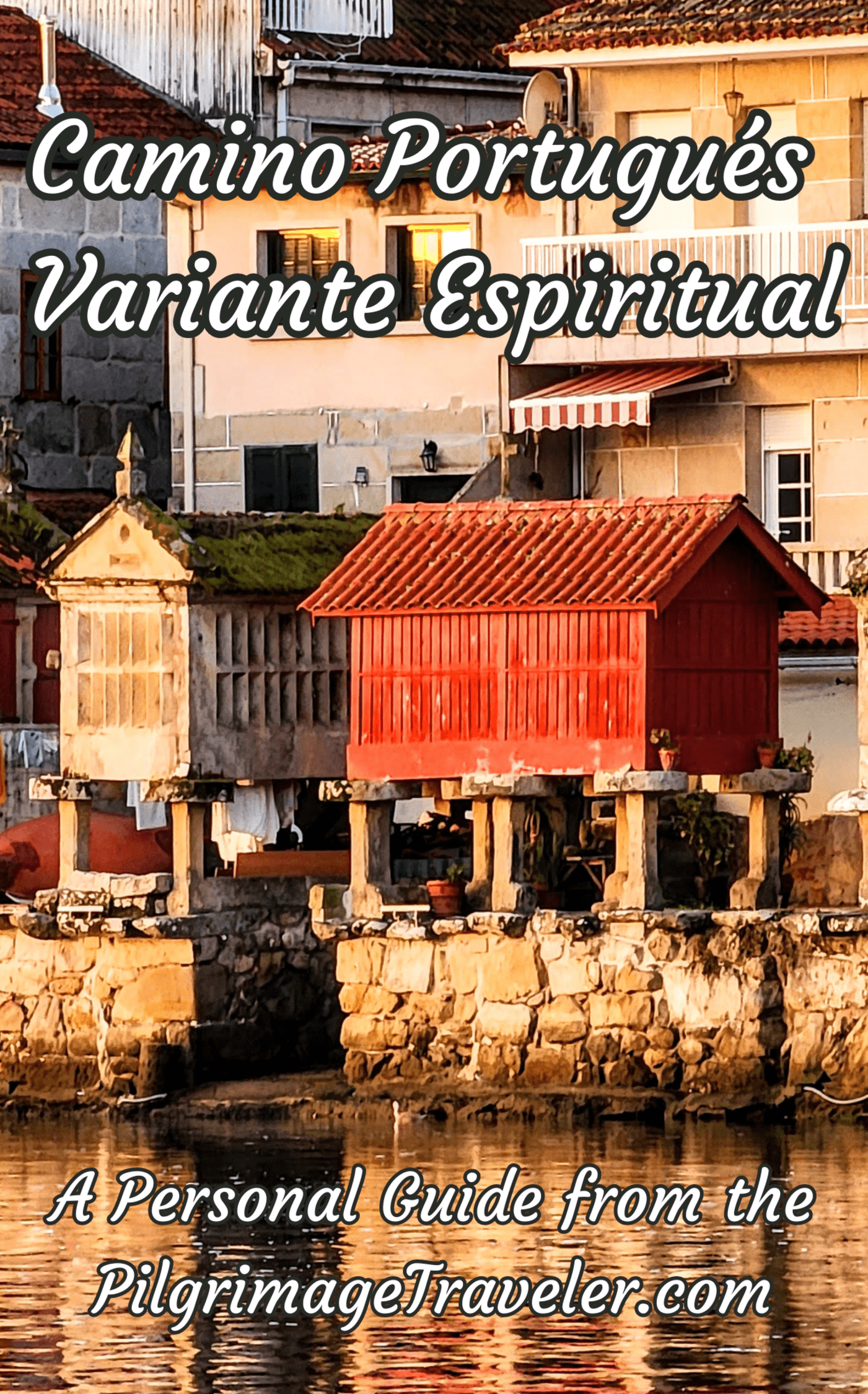
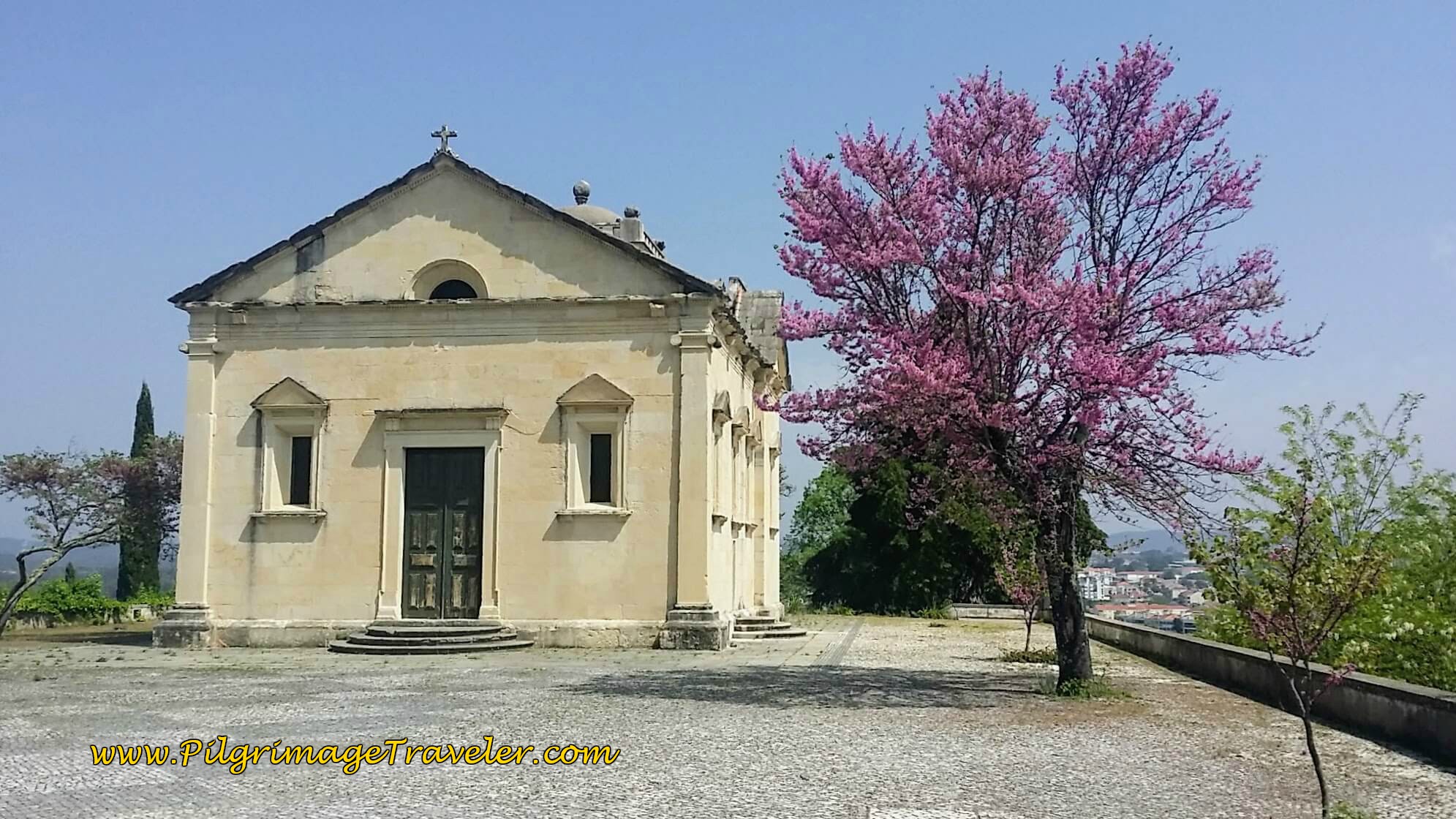



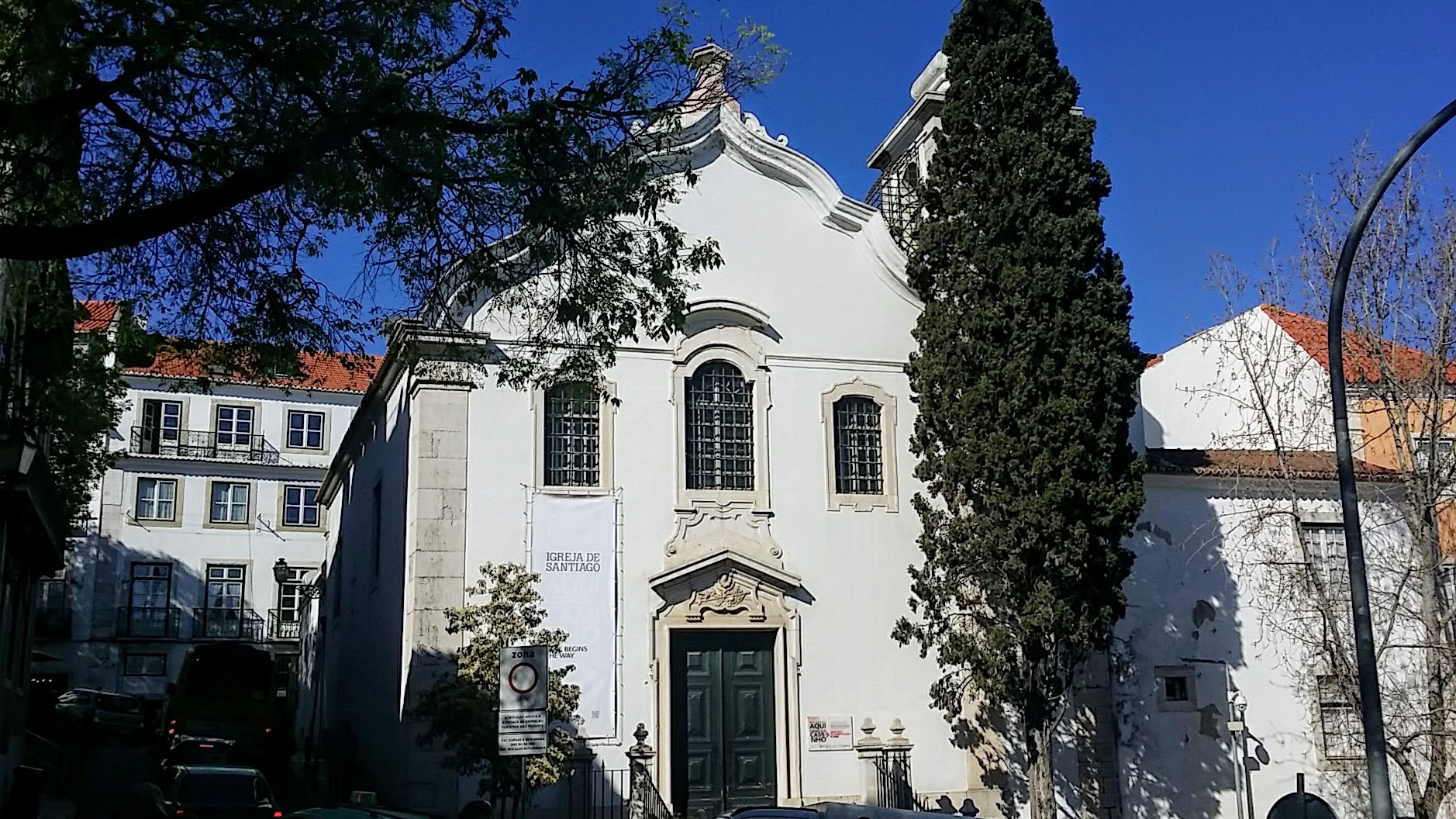

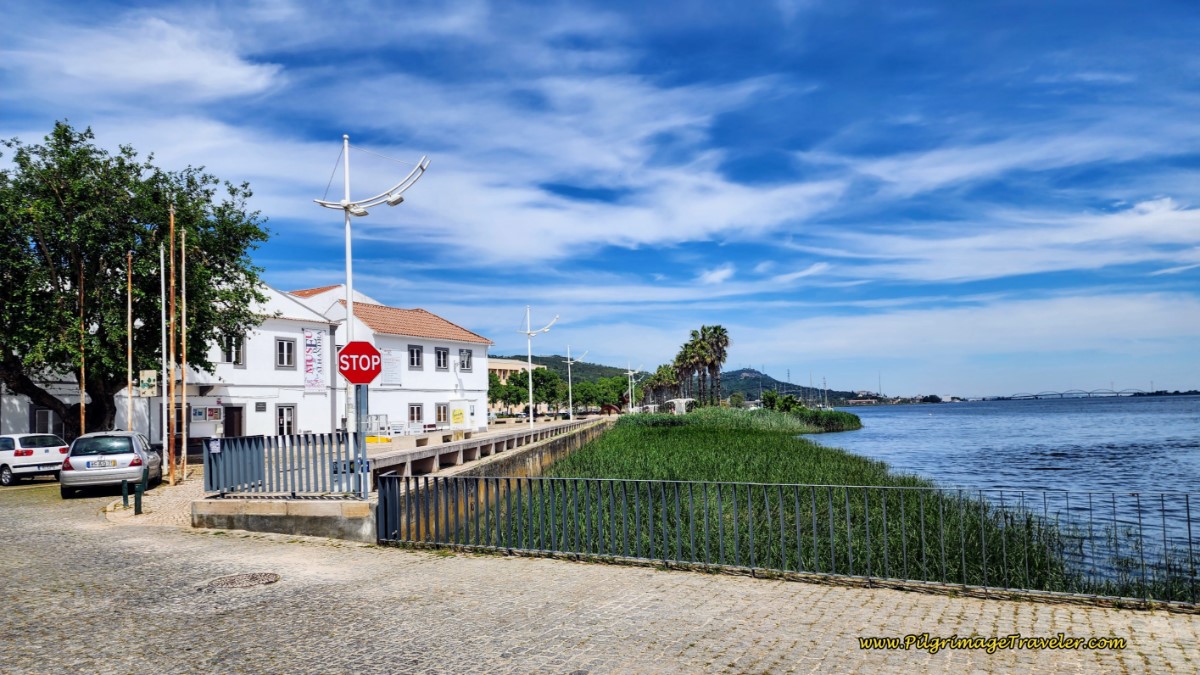








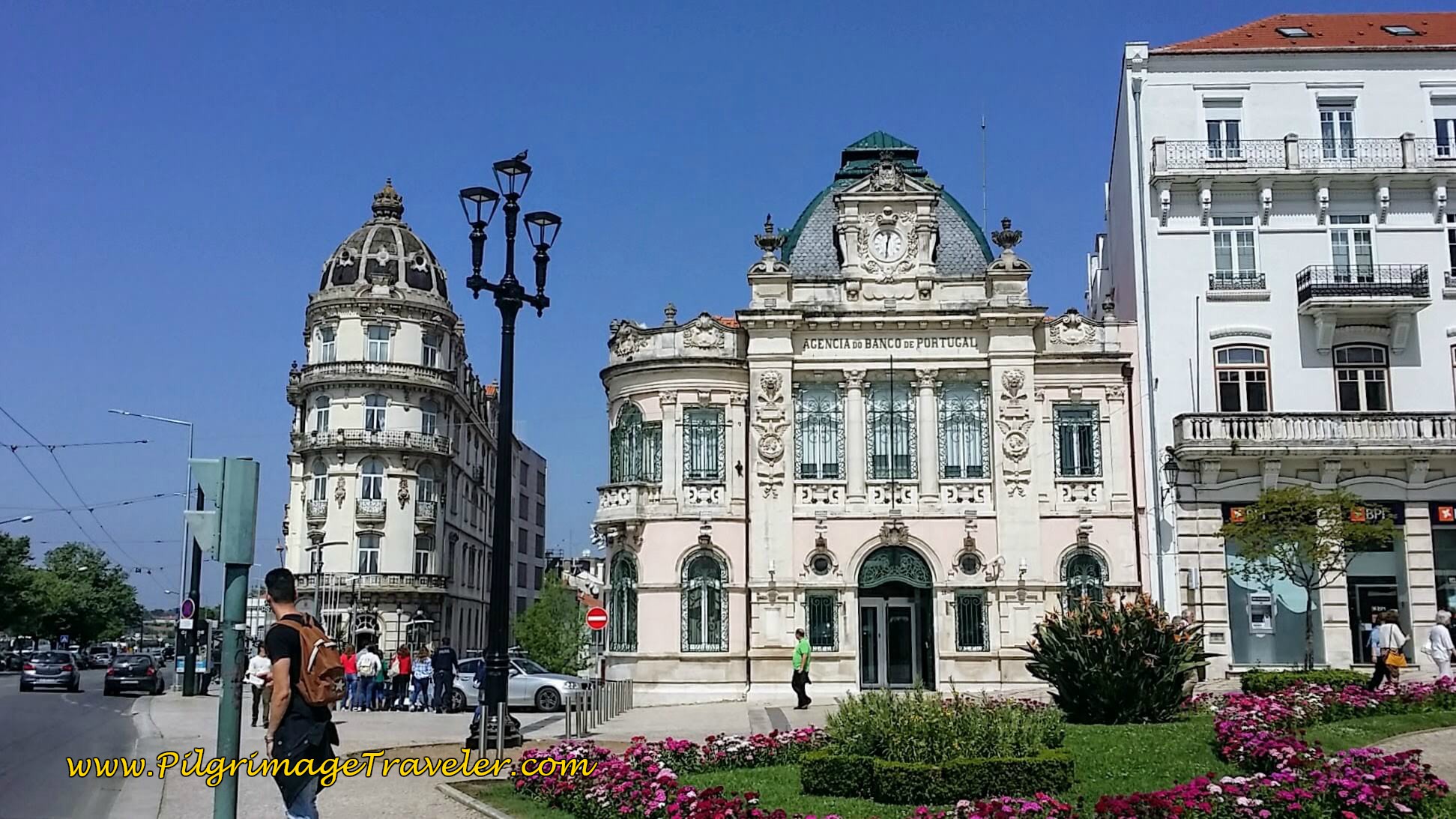






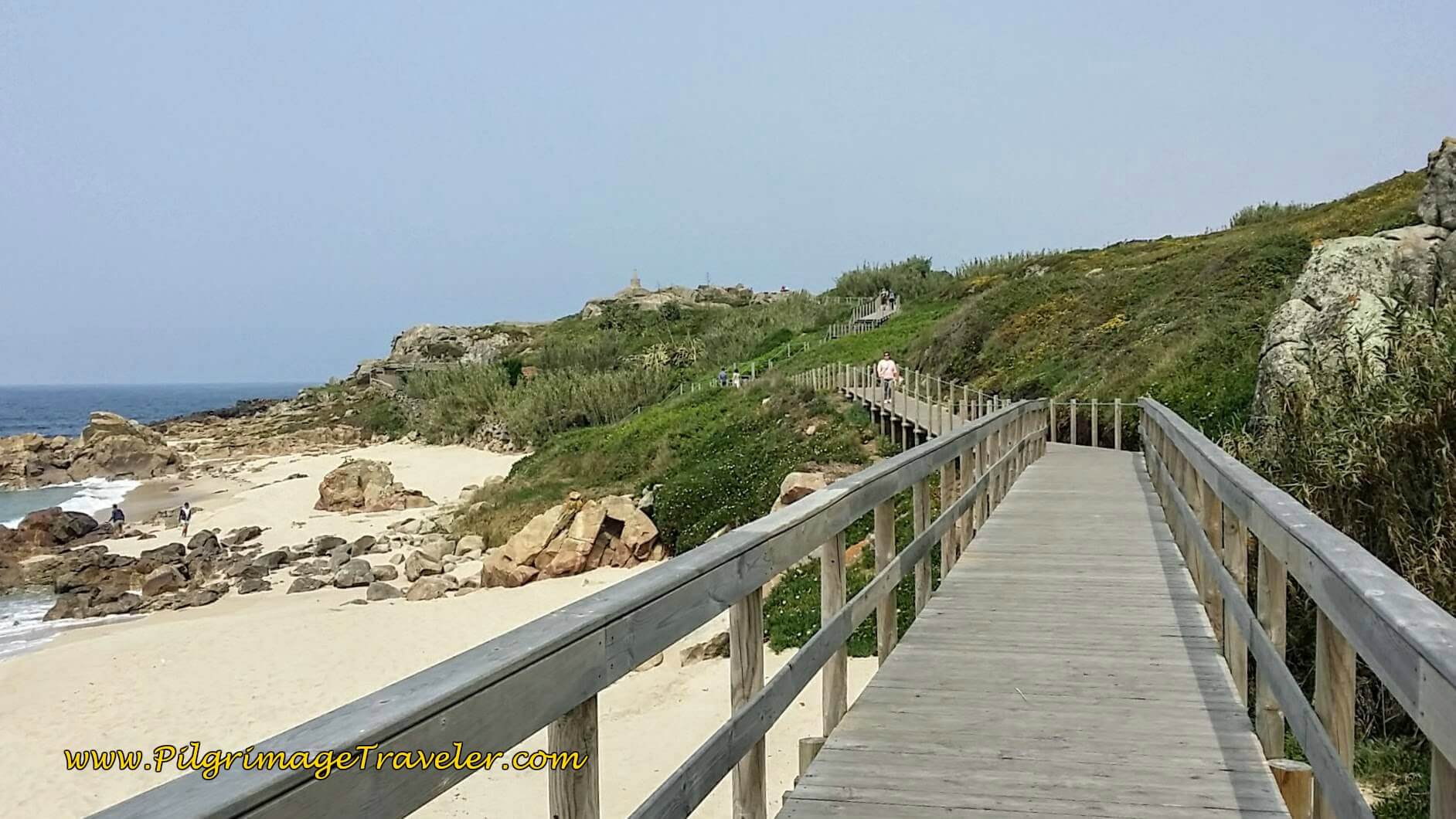

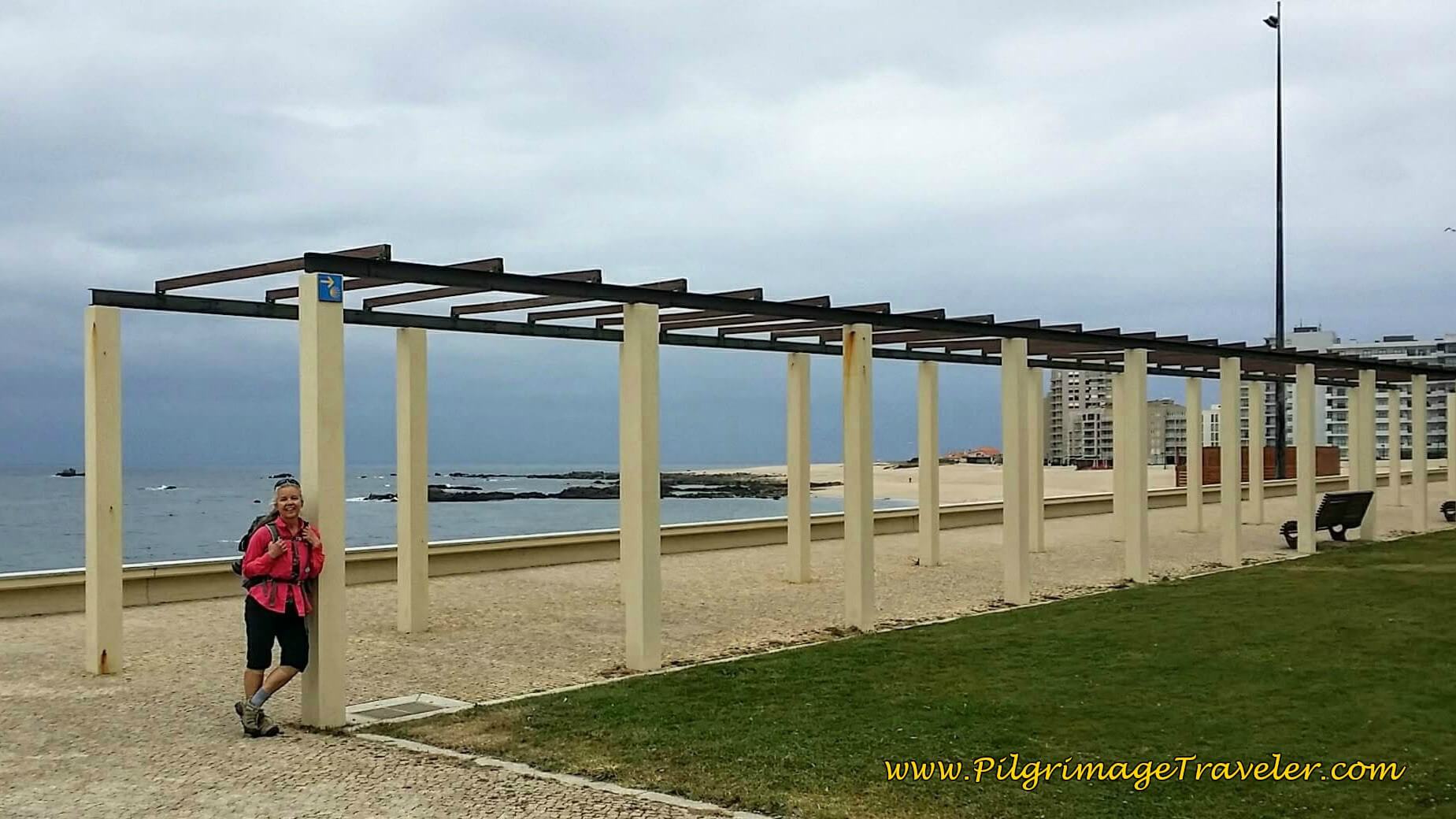

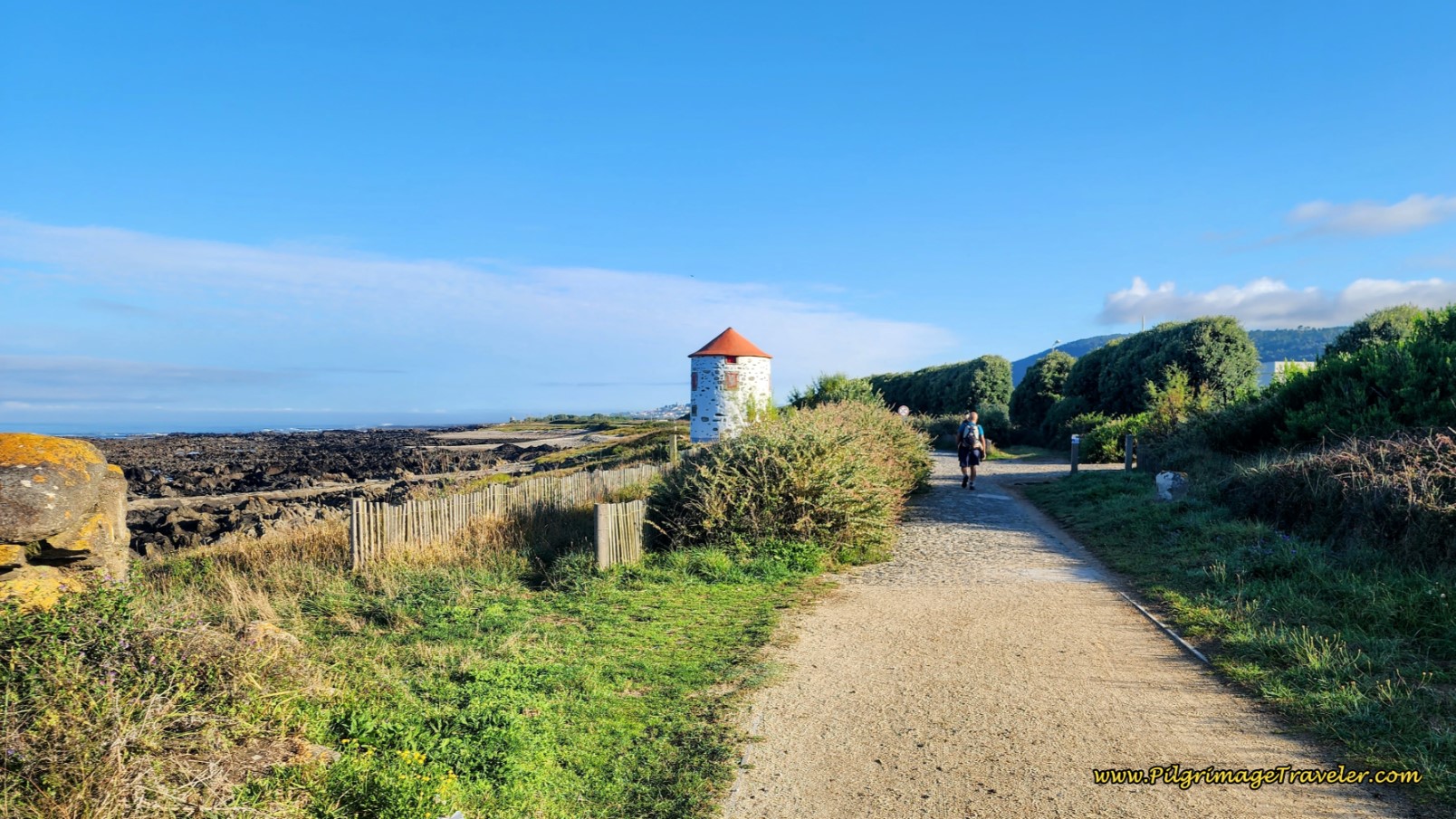








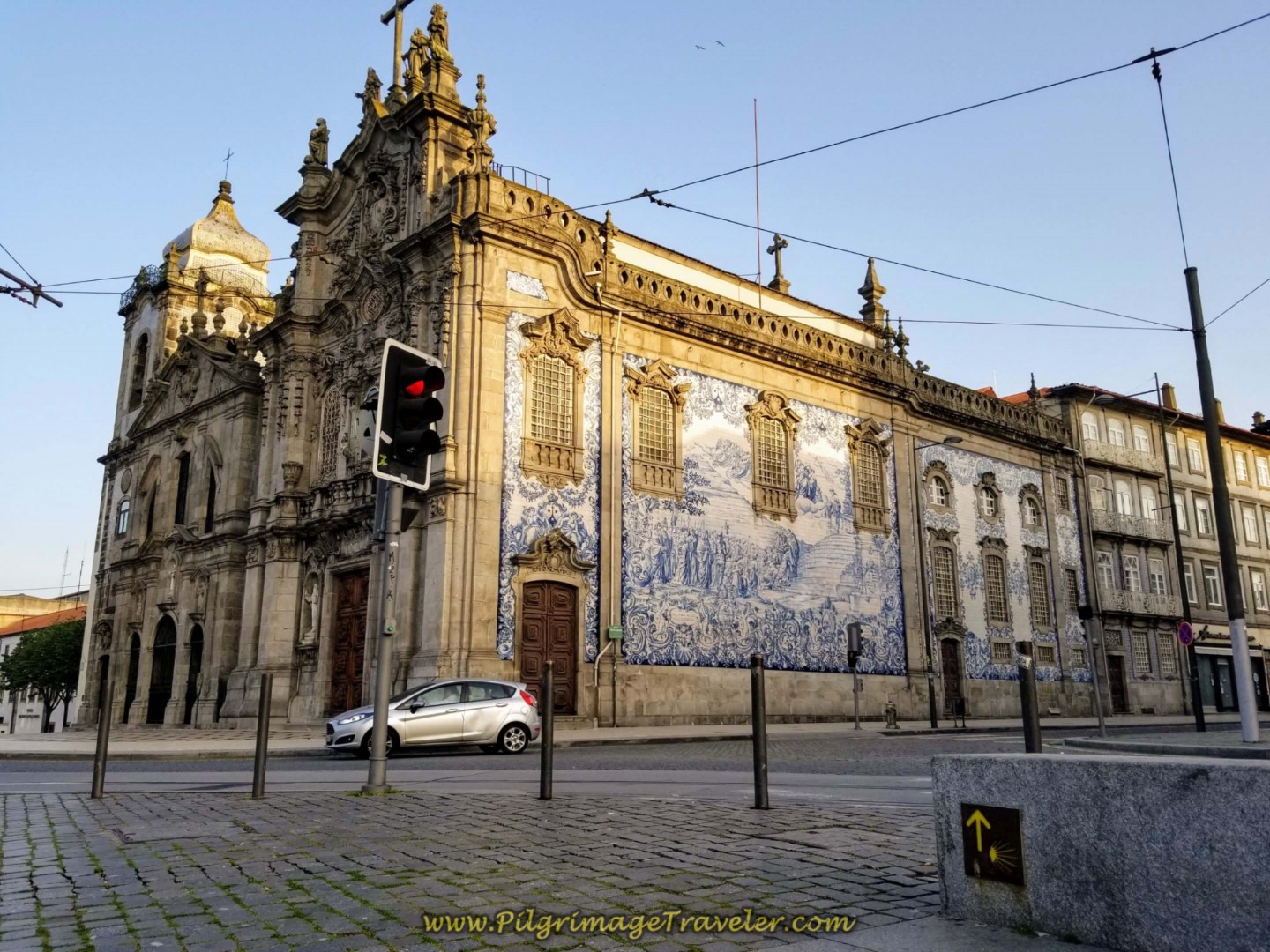





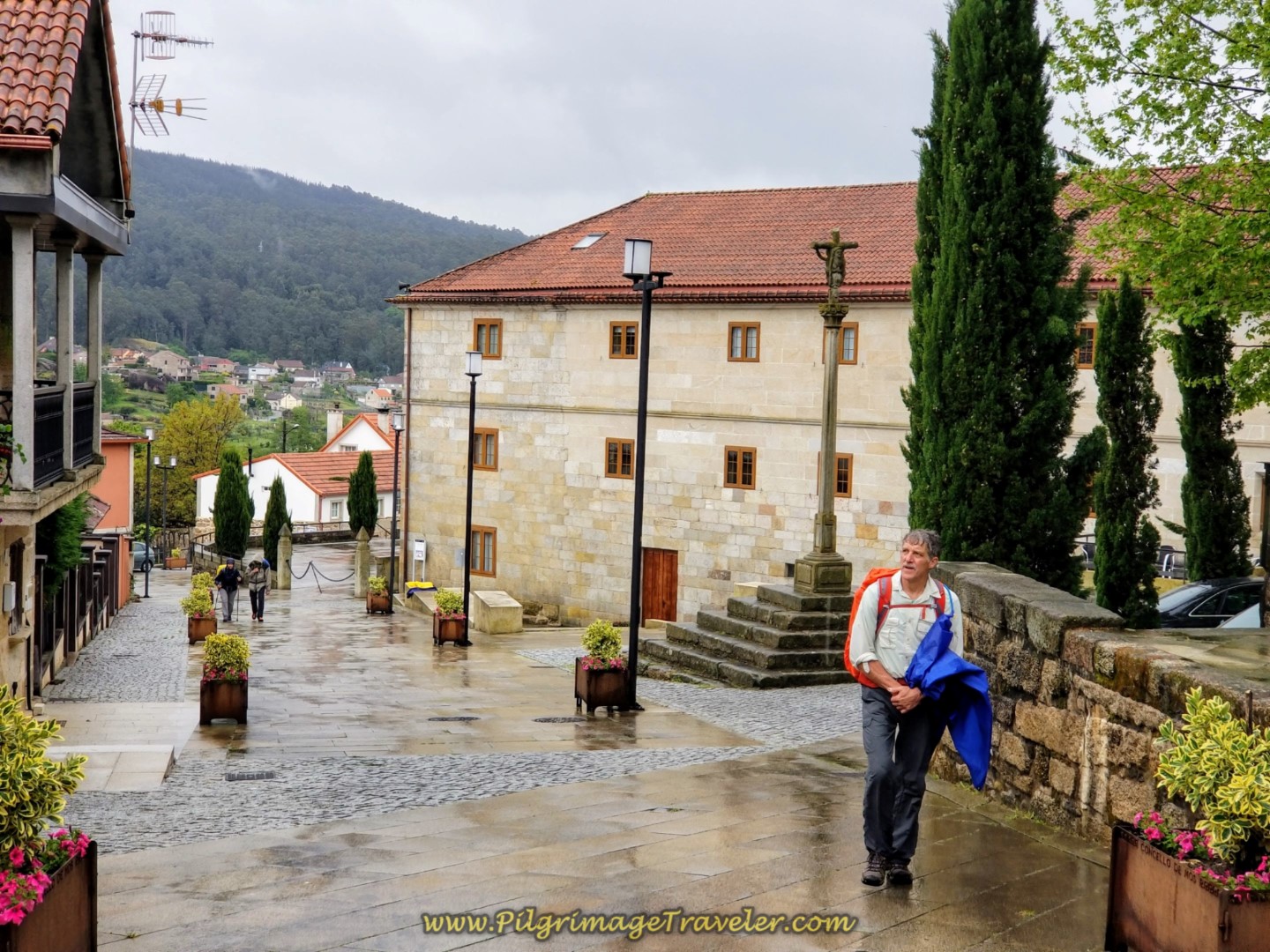


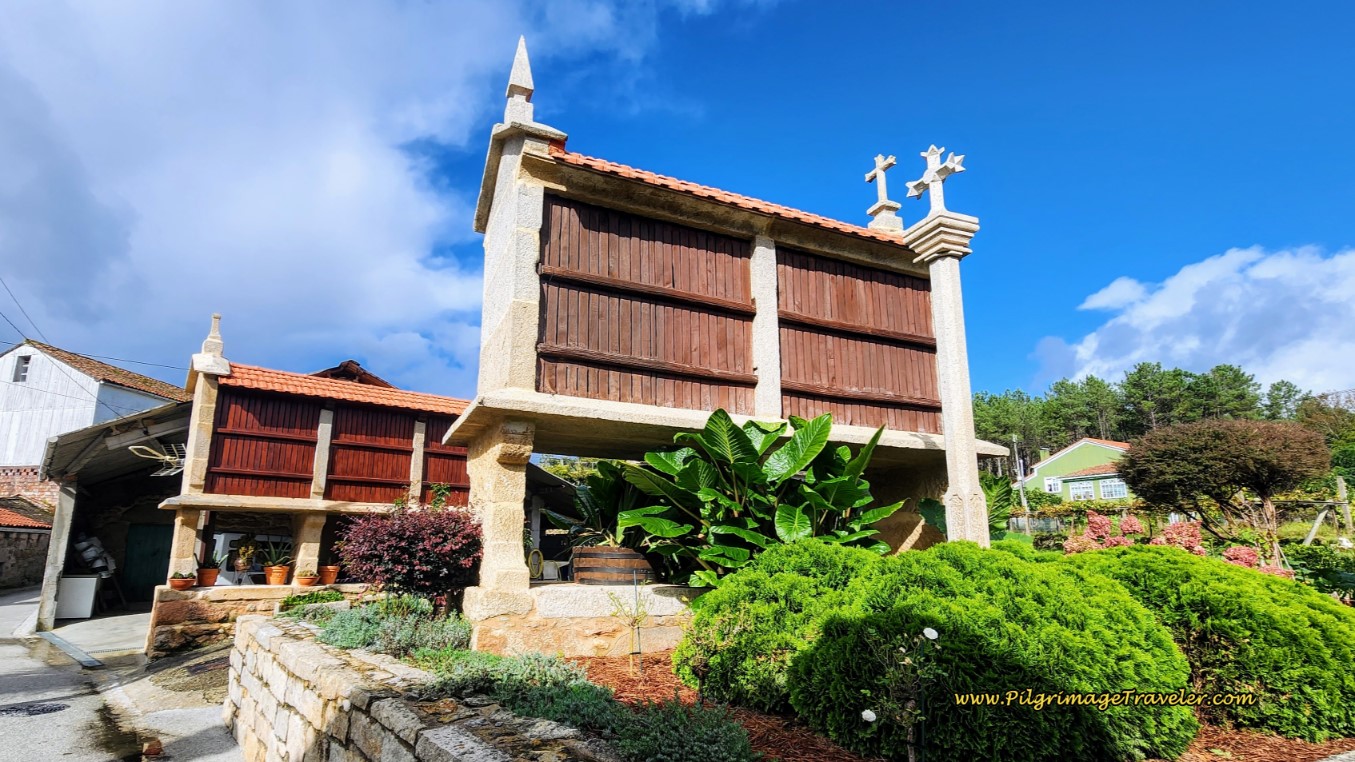


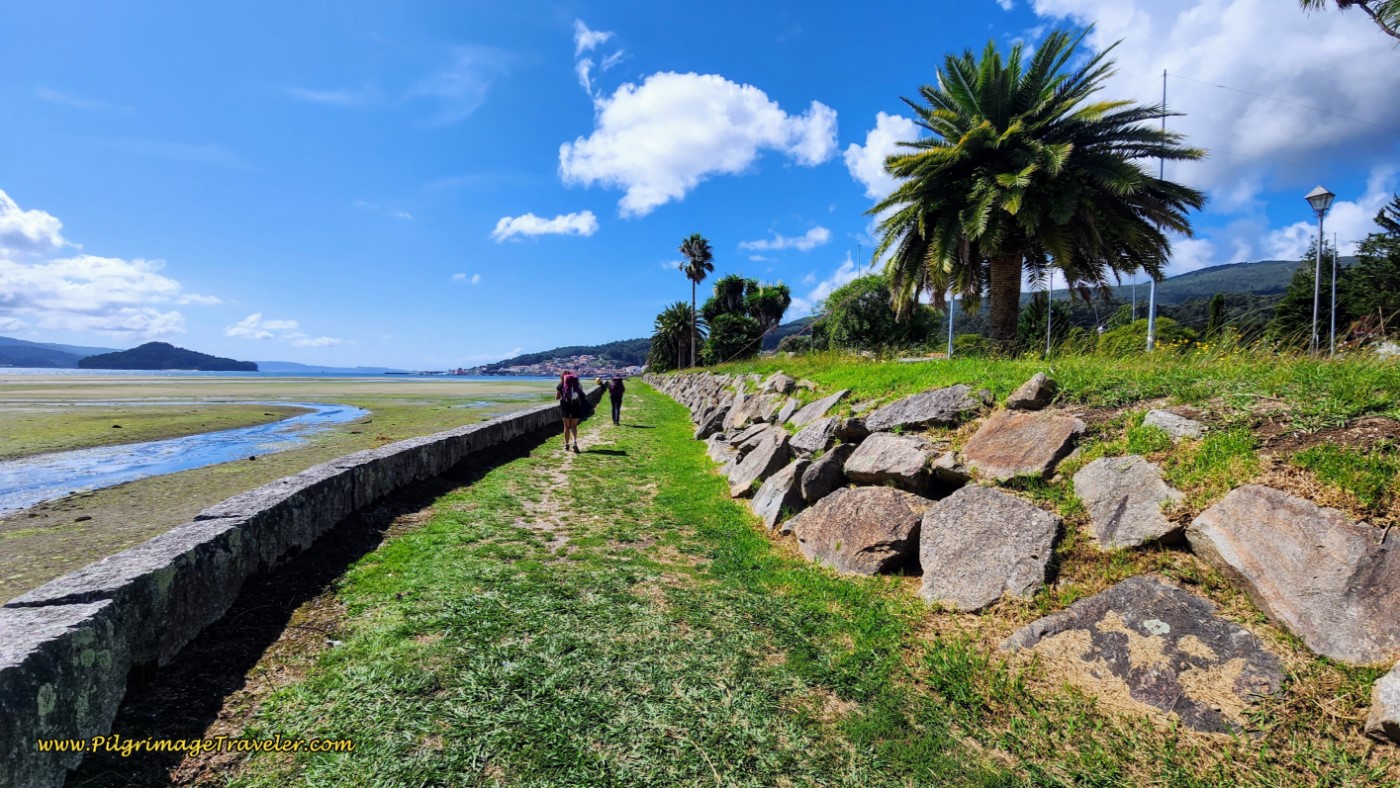
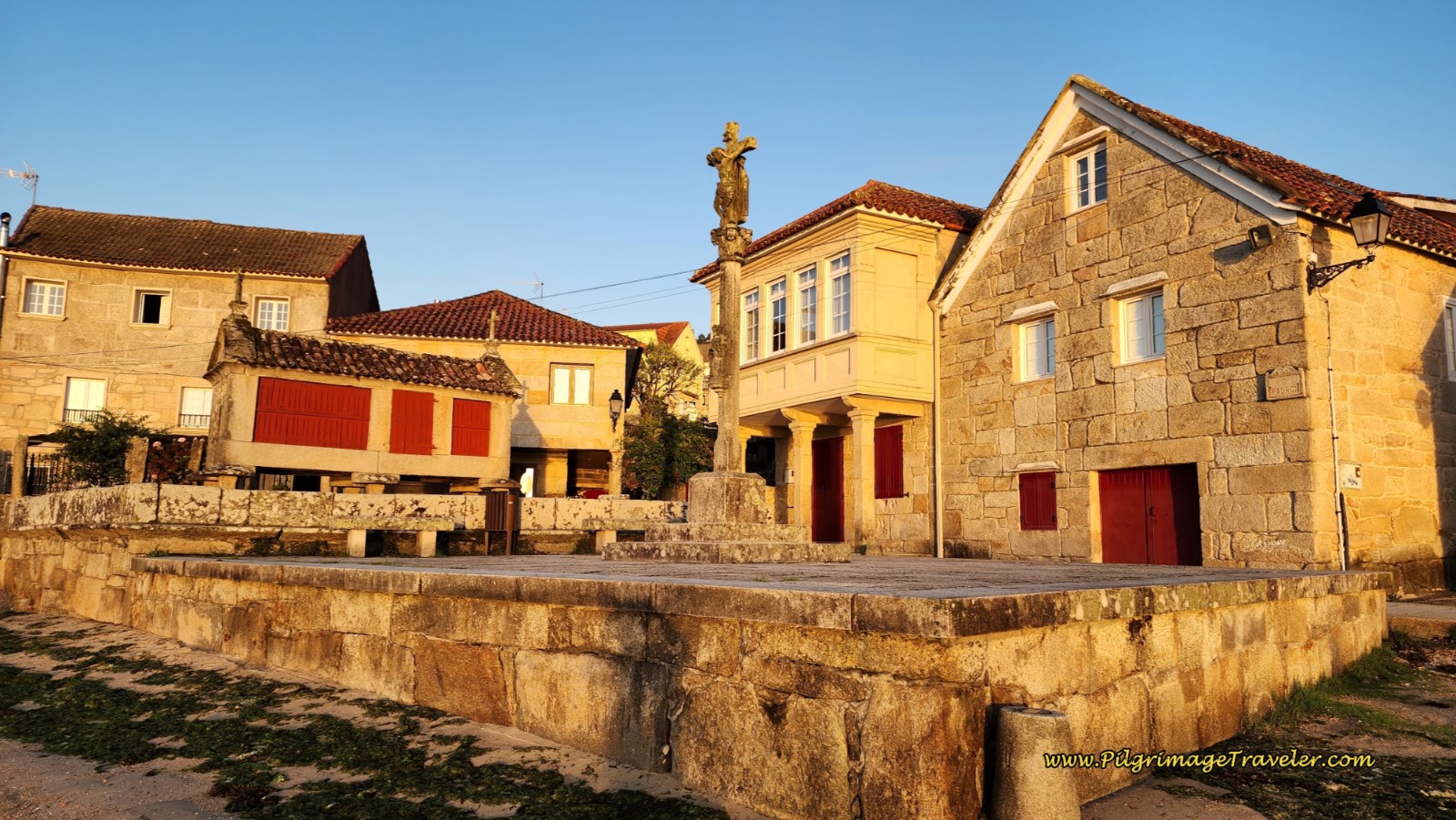



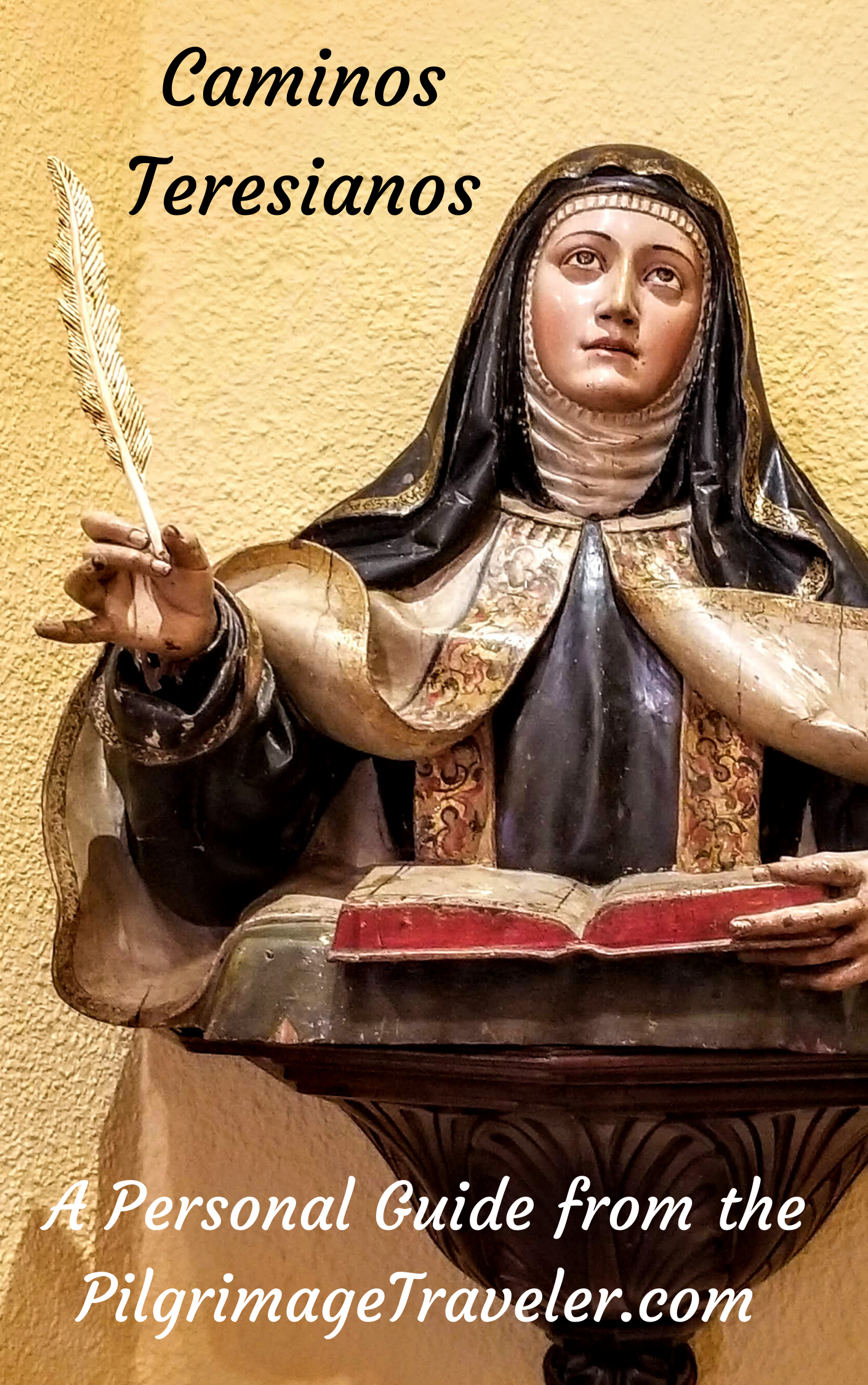
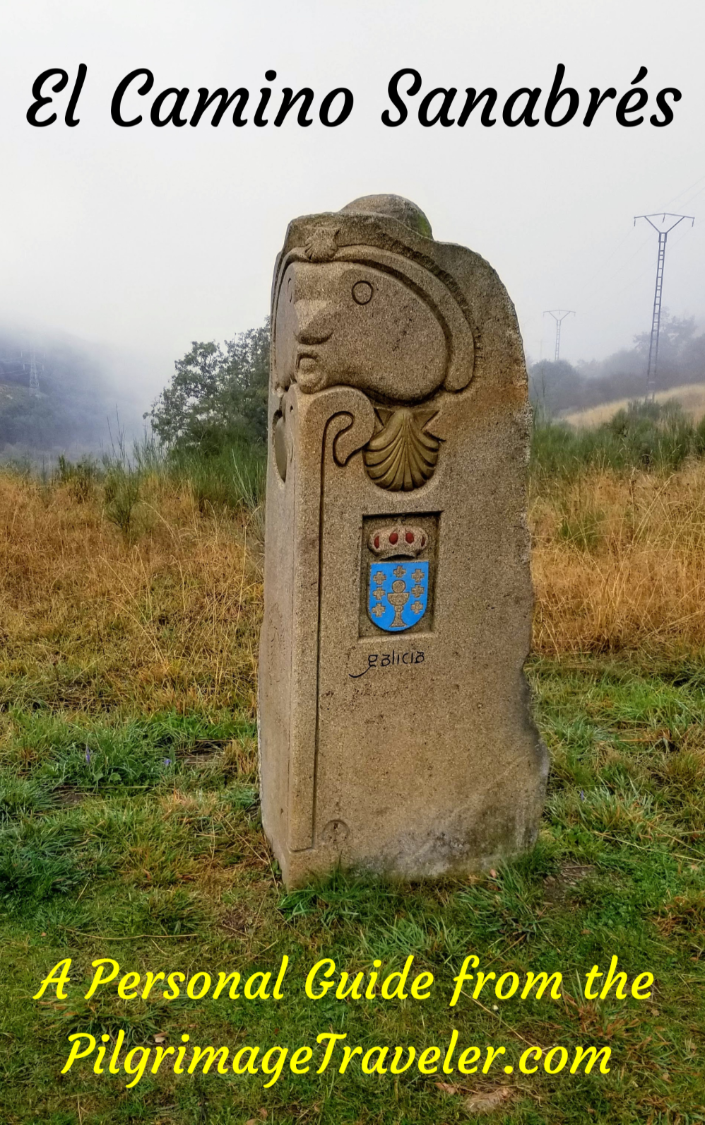
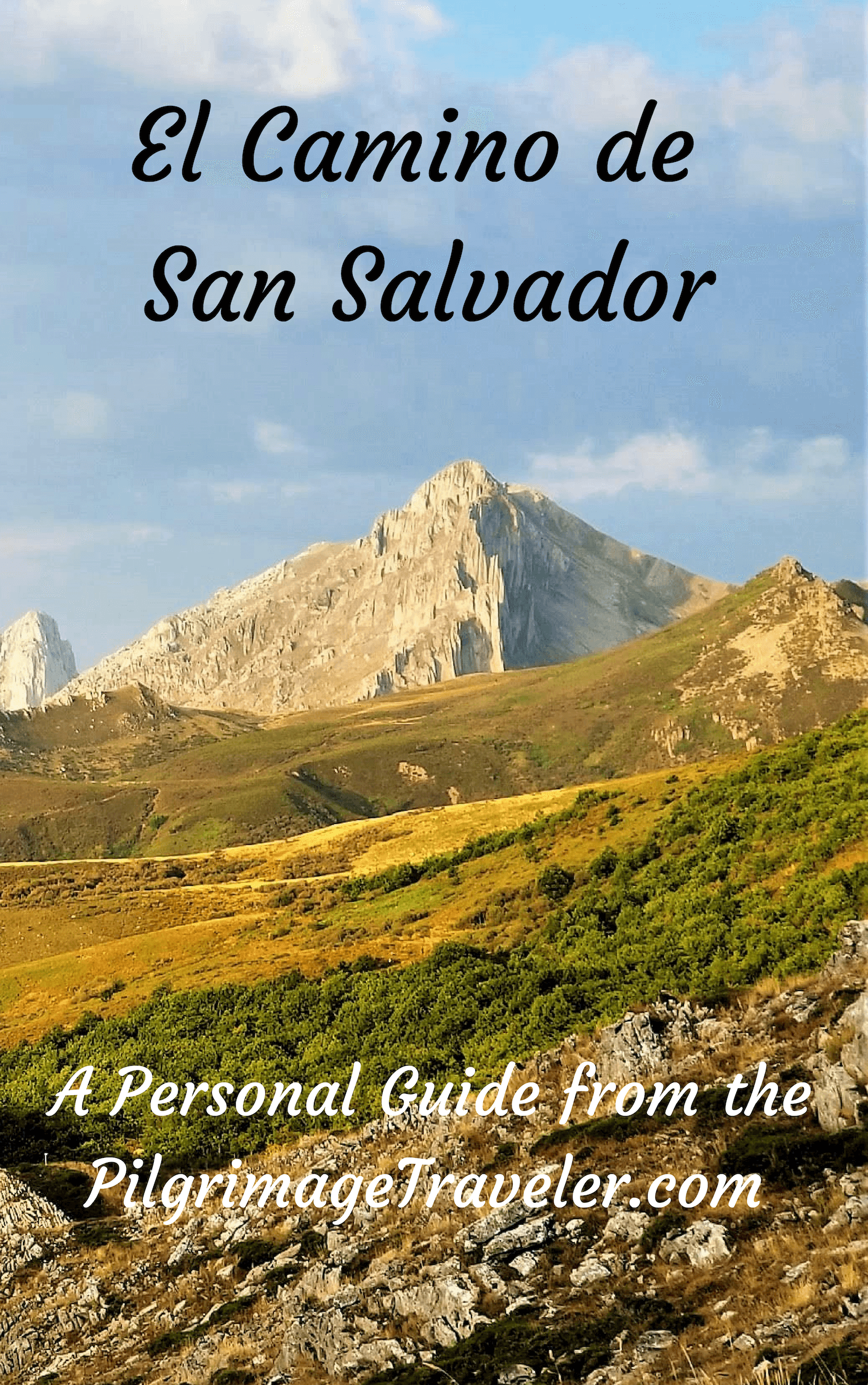
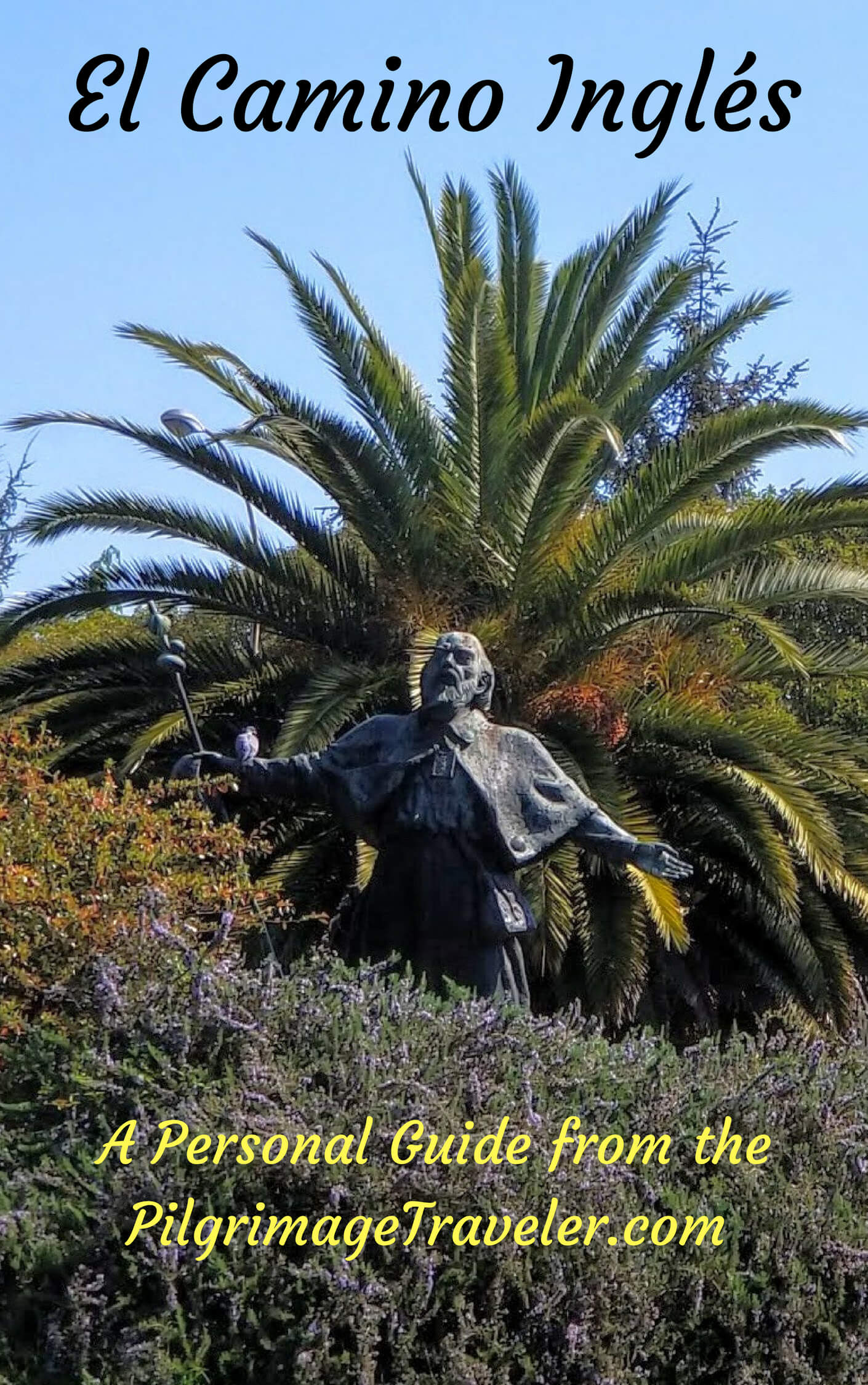
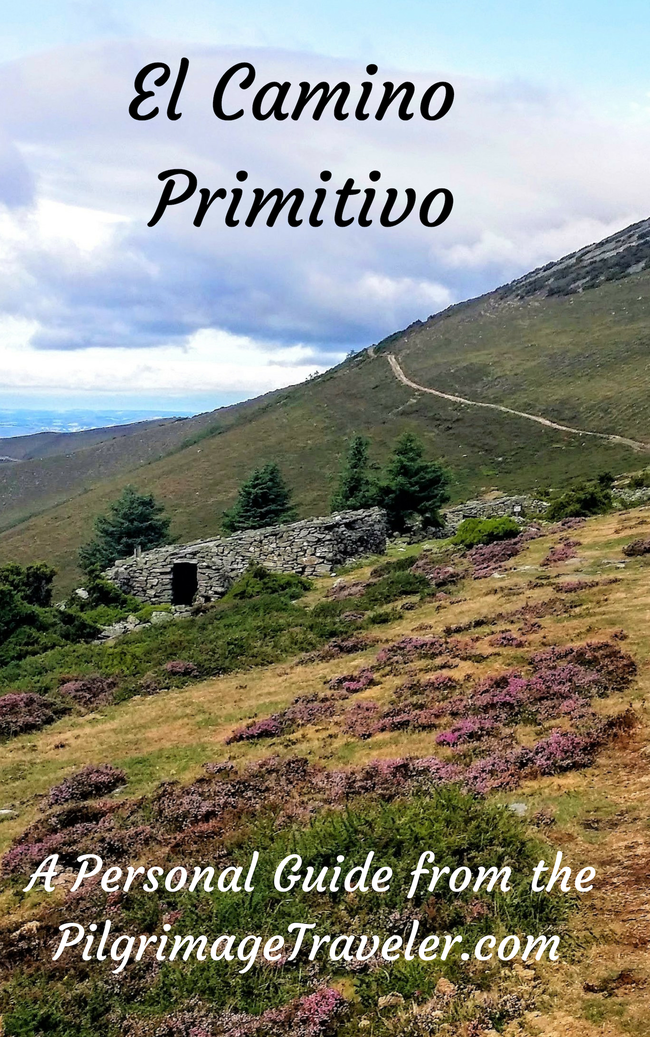
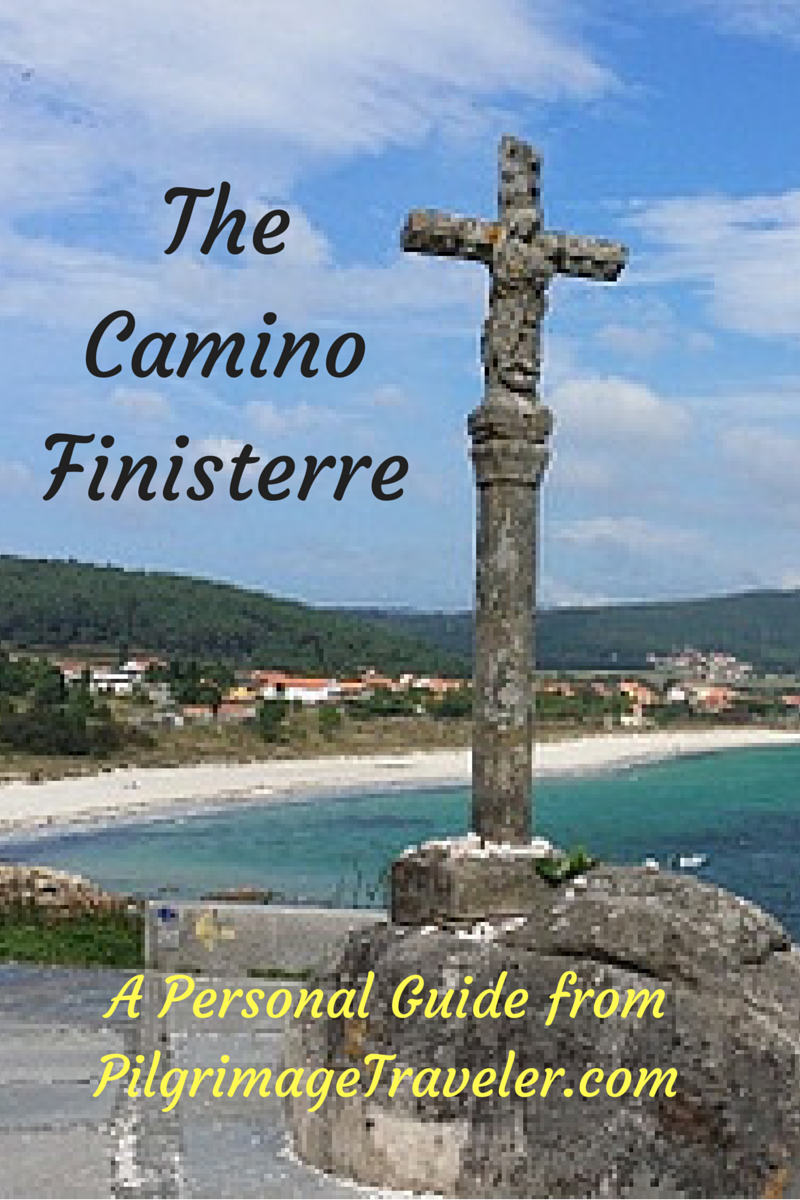
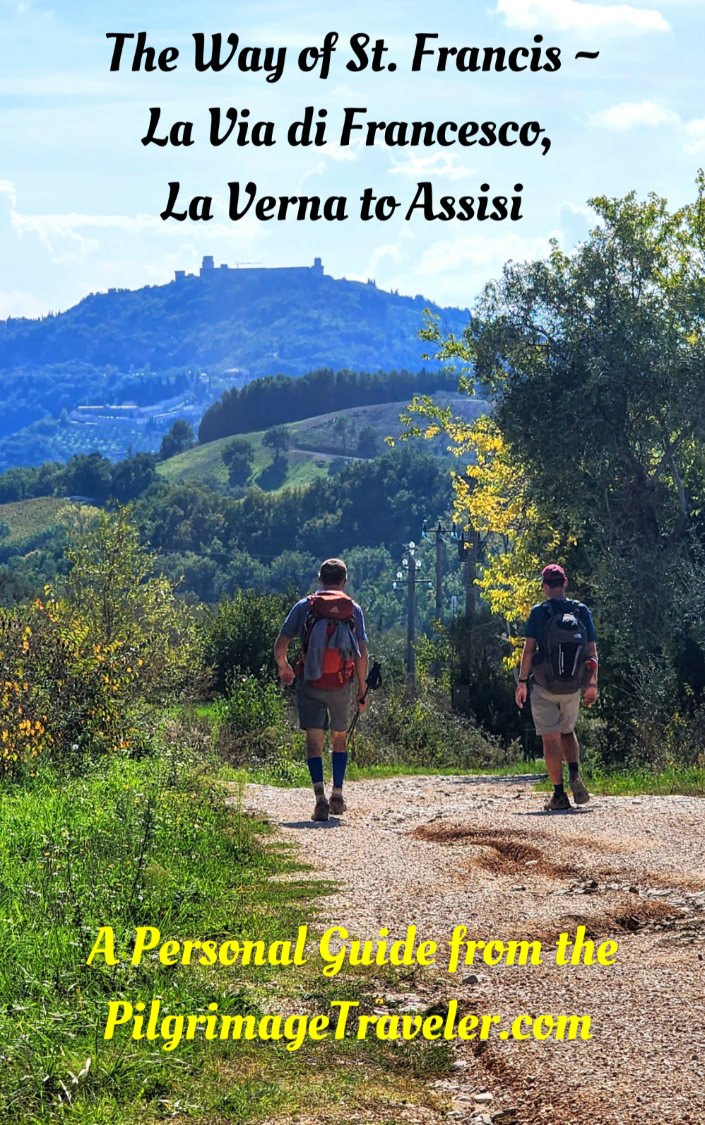




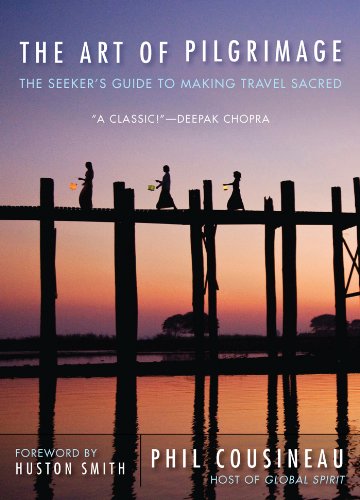


Your Opinion Matters! Comments
Have you had a similar experience, have some advice to give, or have something else you'd like to share? We would love to hear from you! Please leave us a comment in the box below.